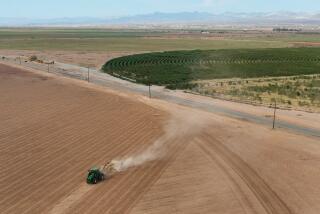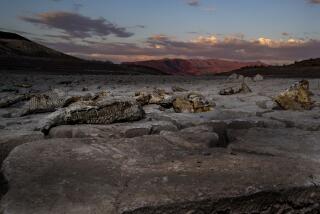Chance of ‚Äėmegadrought‚Äô in U.S. Southwest now 50%, study says
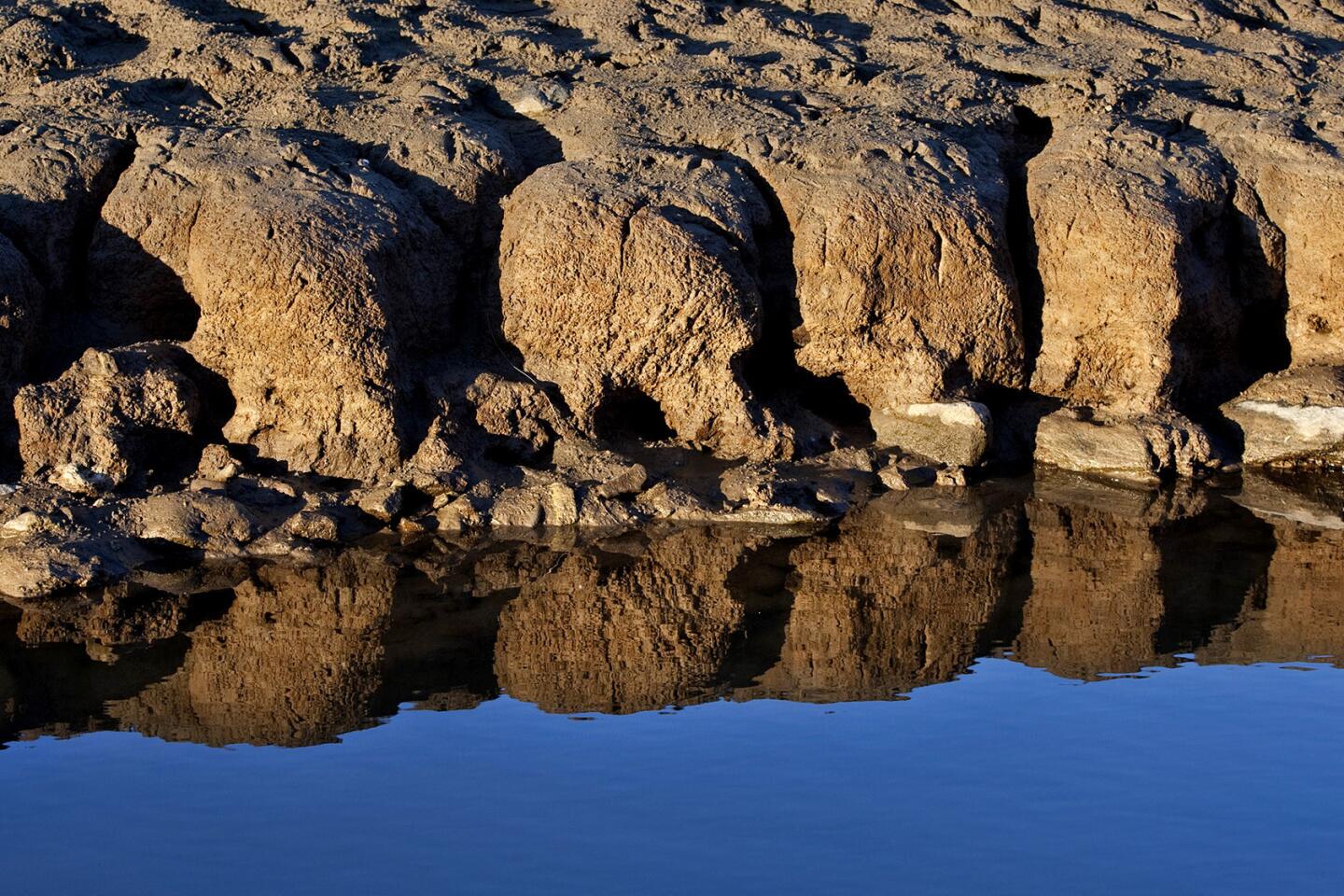
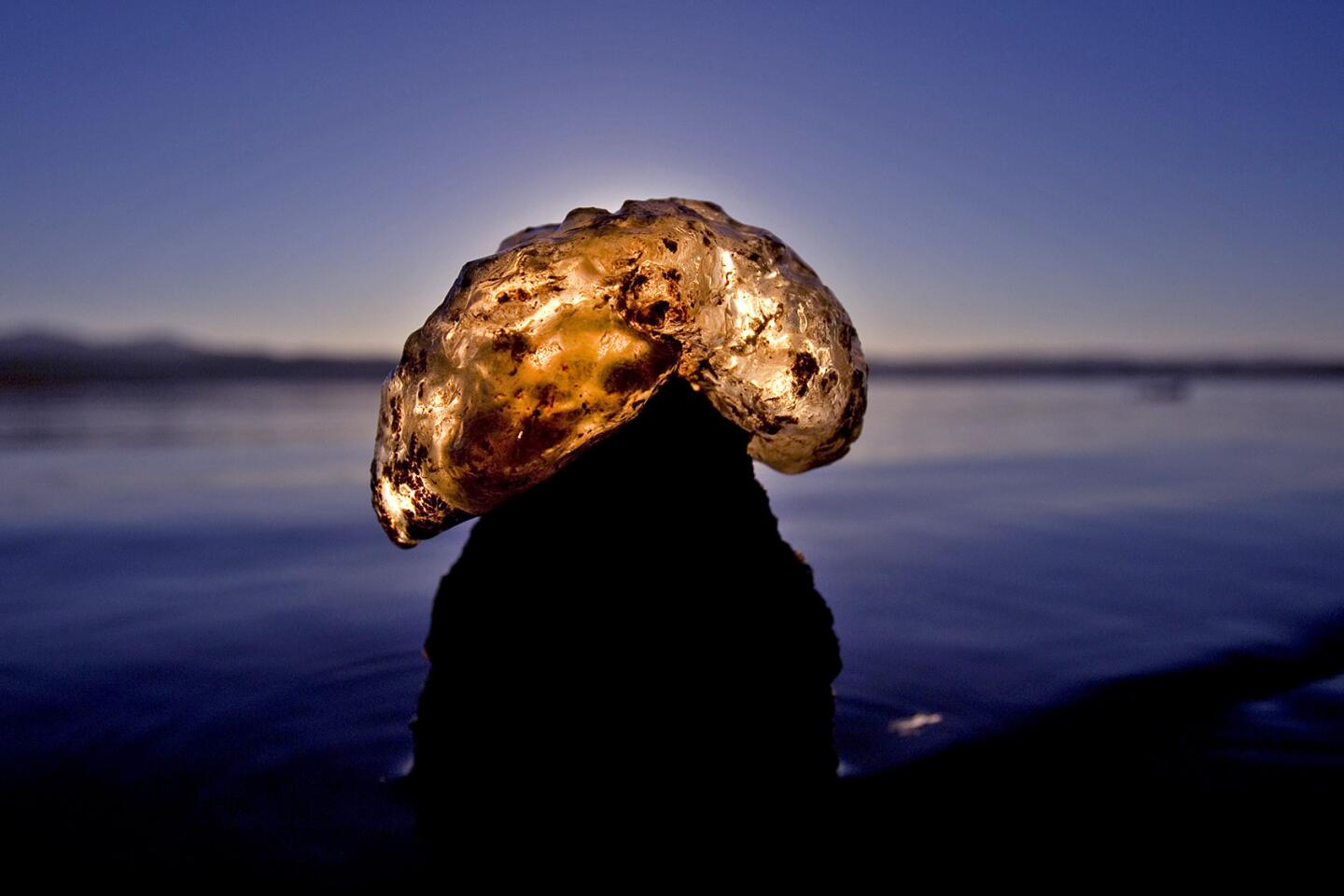
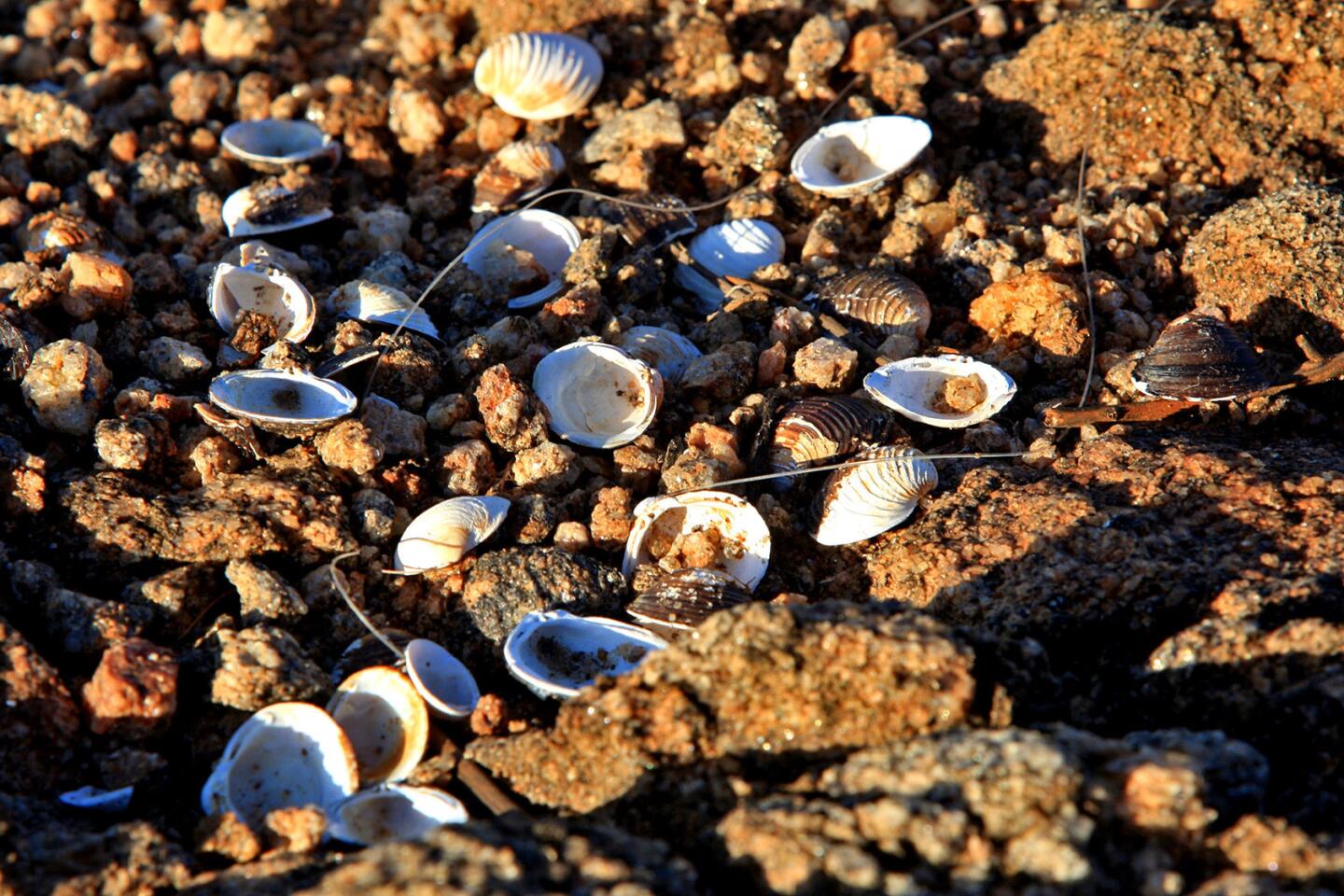
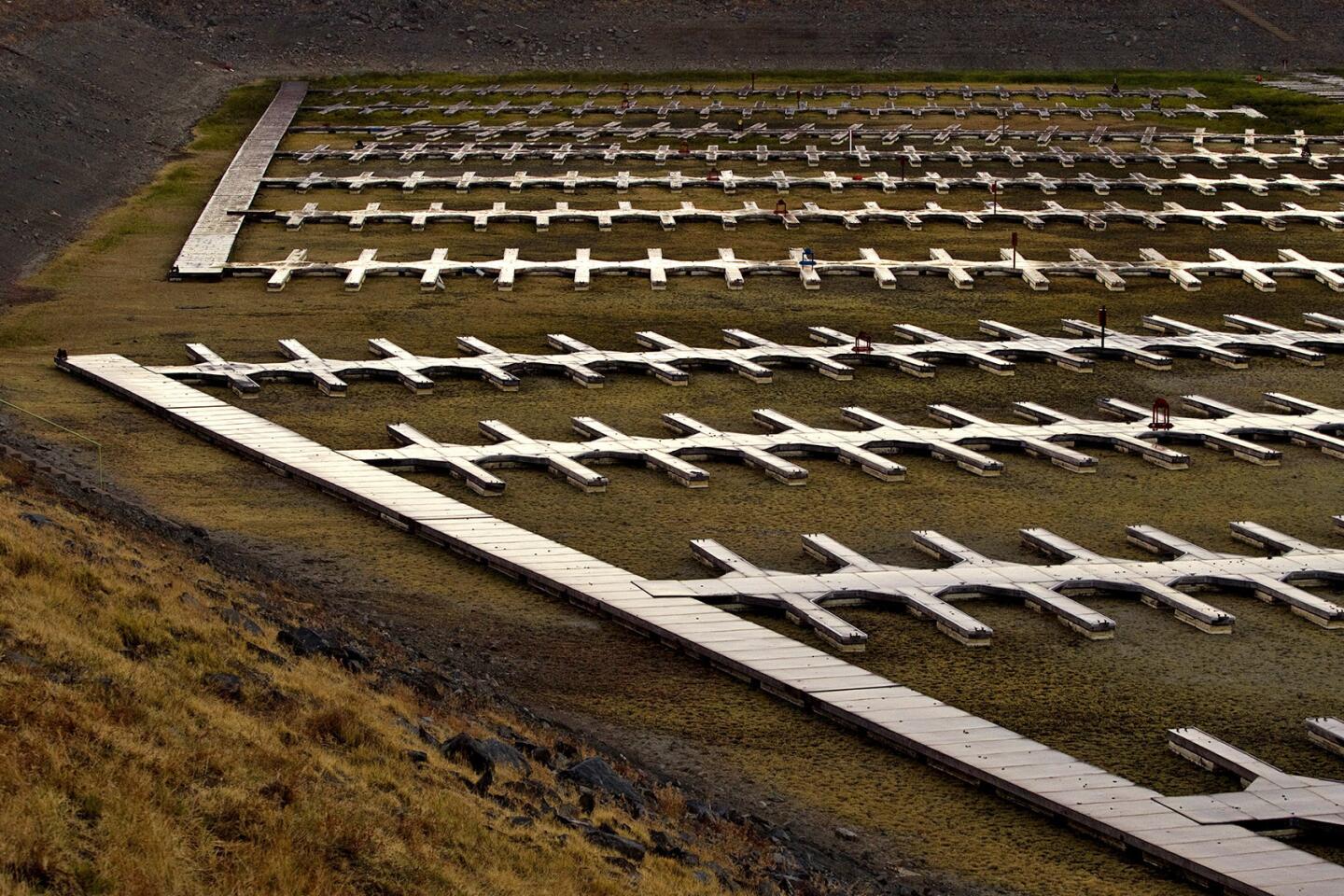
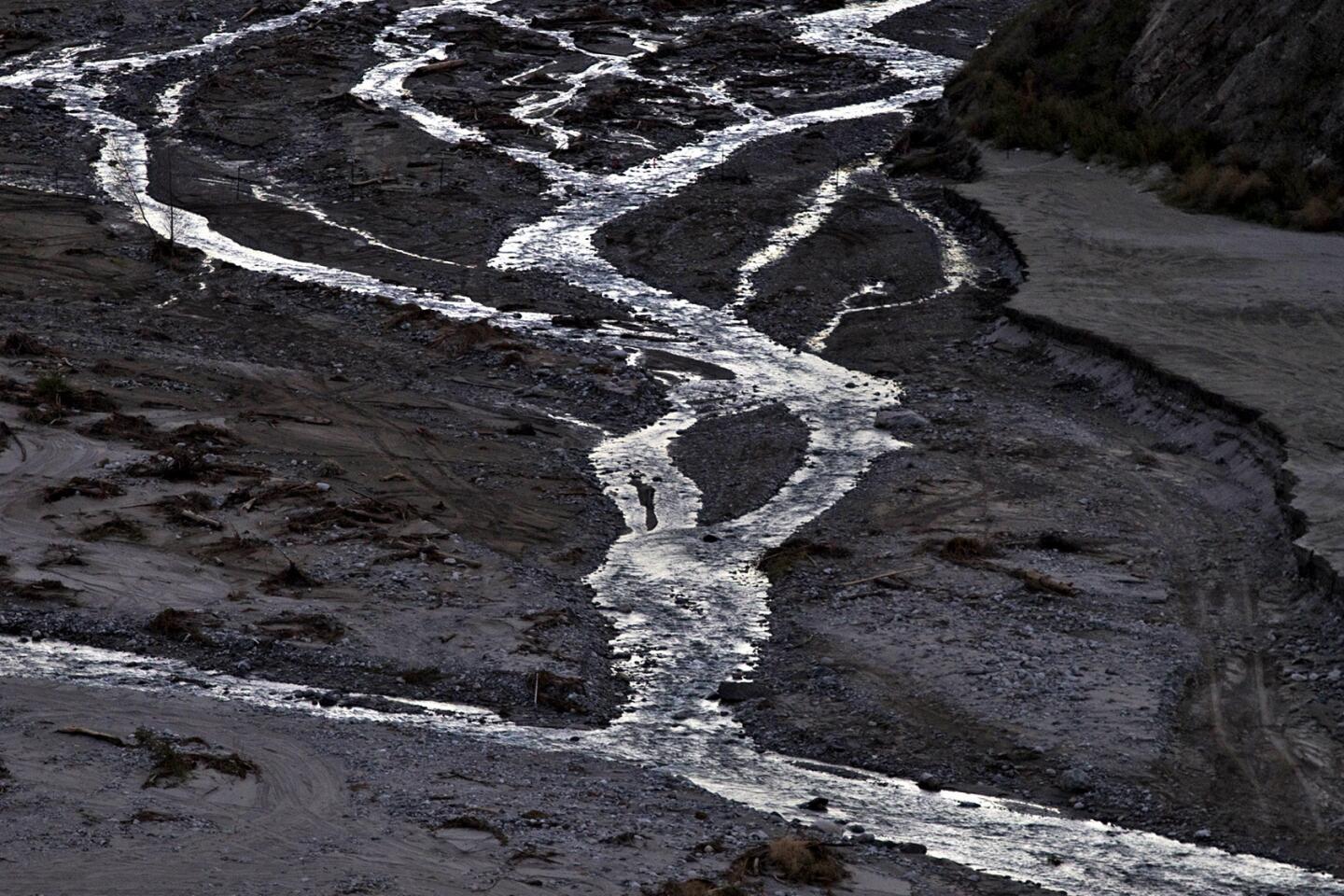
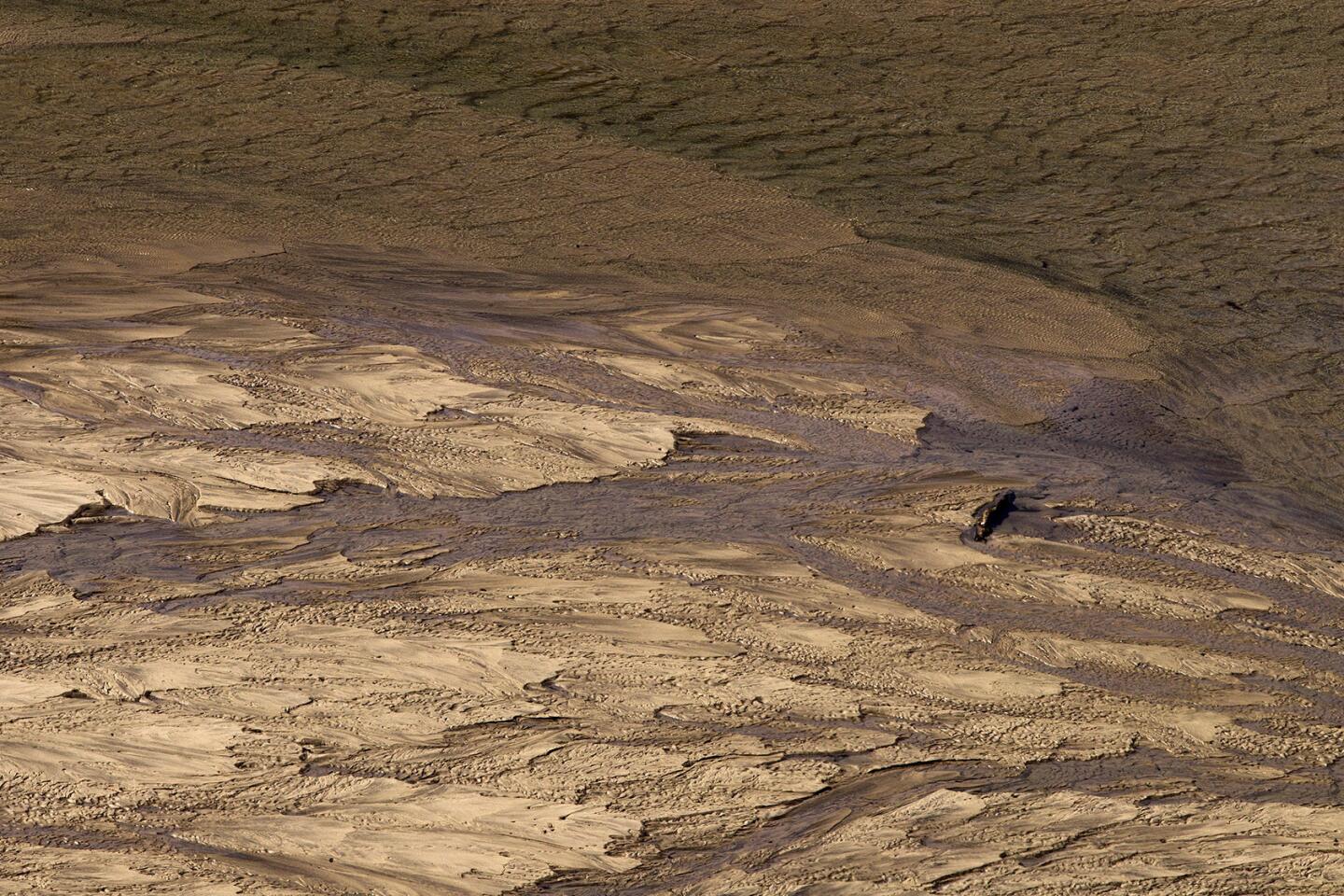
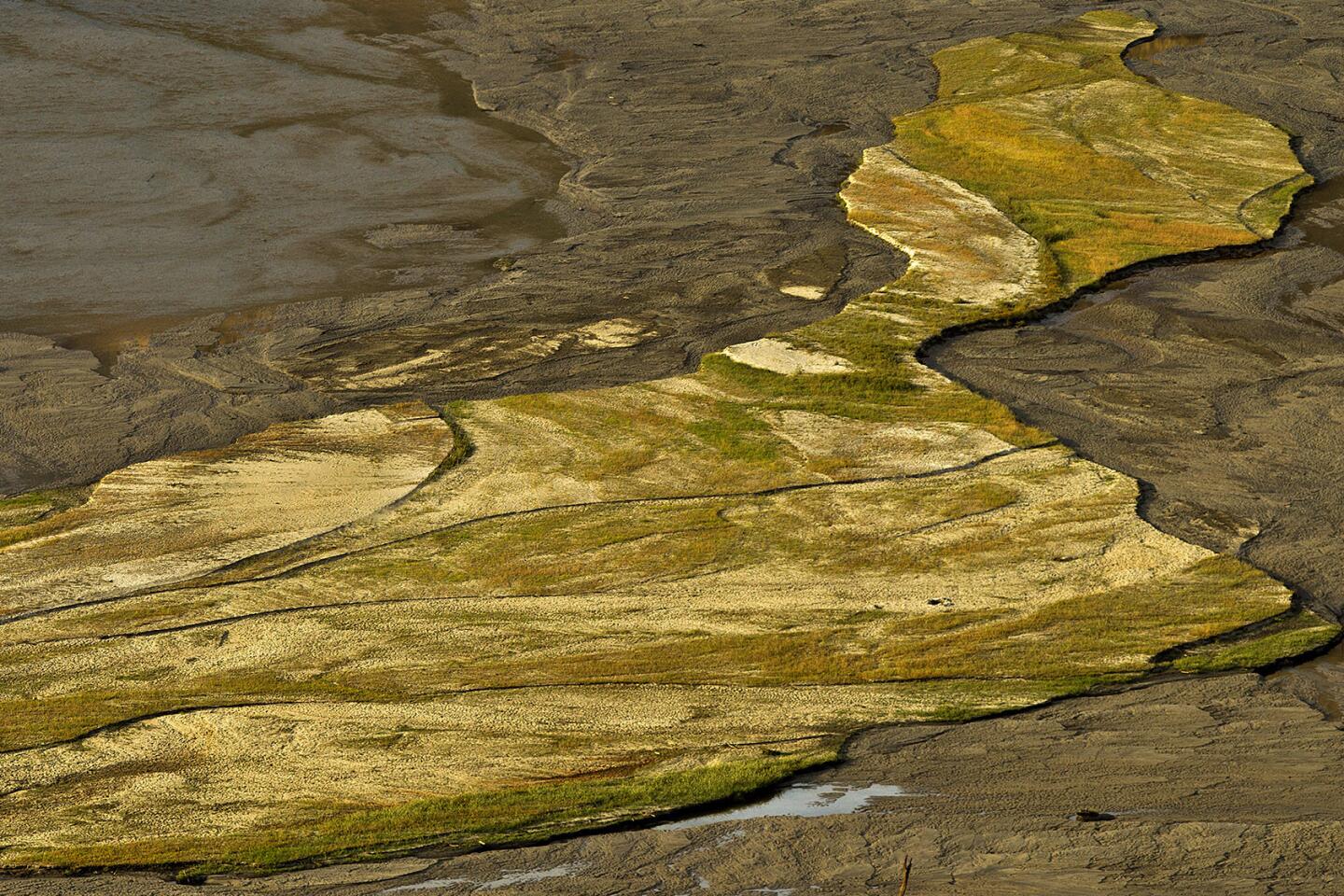
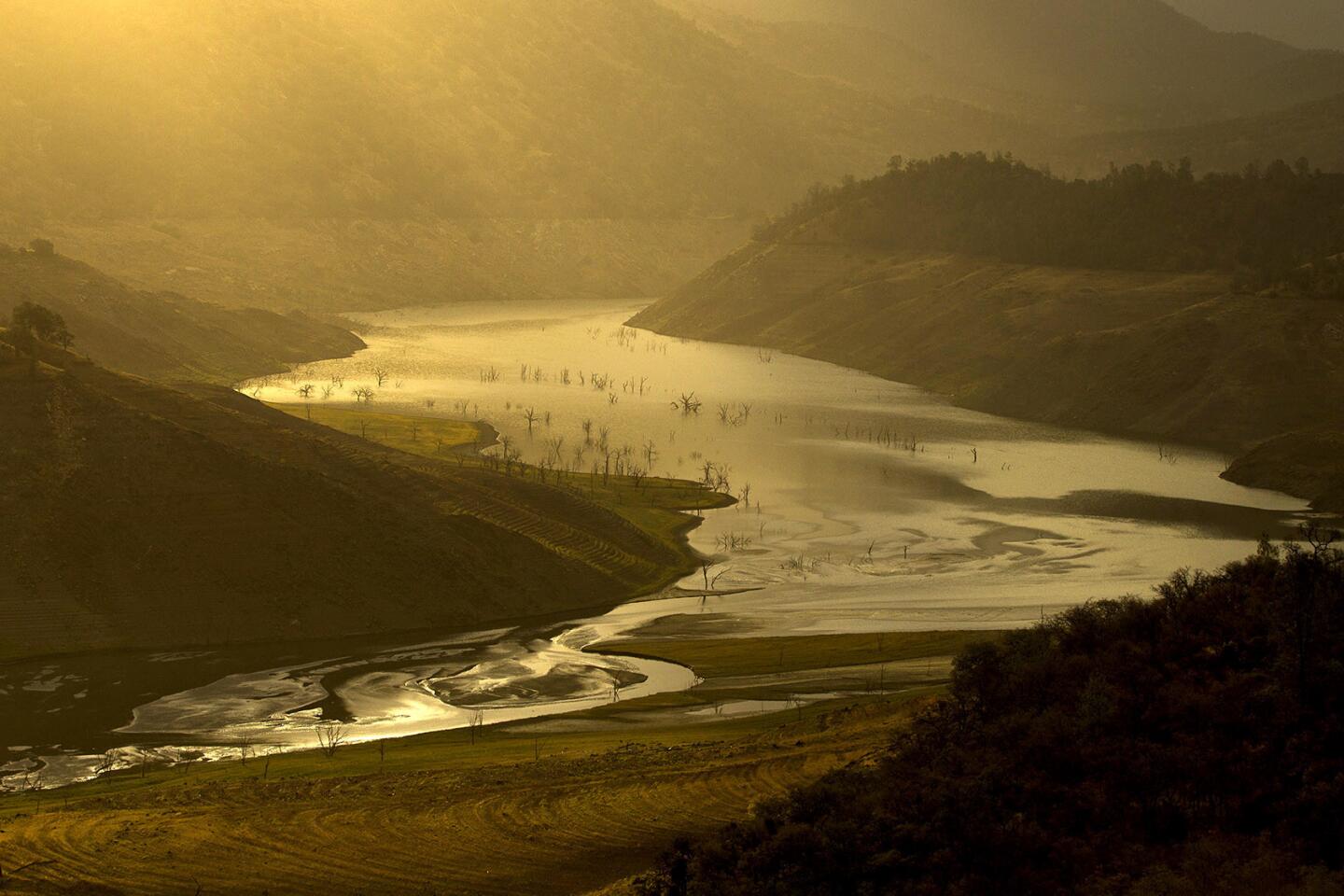
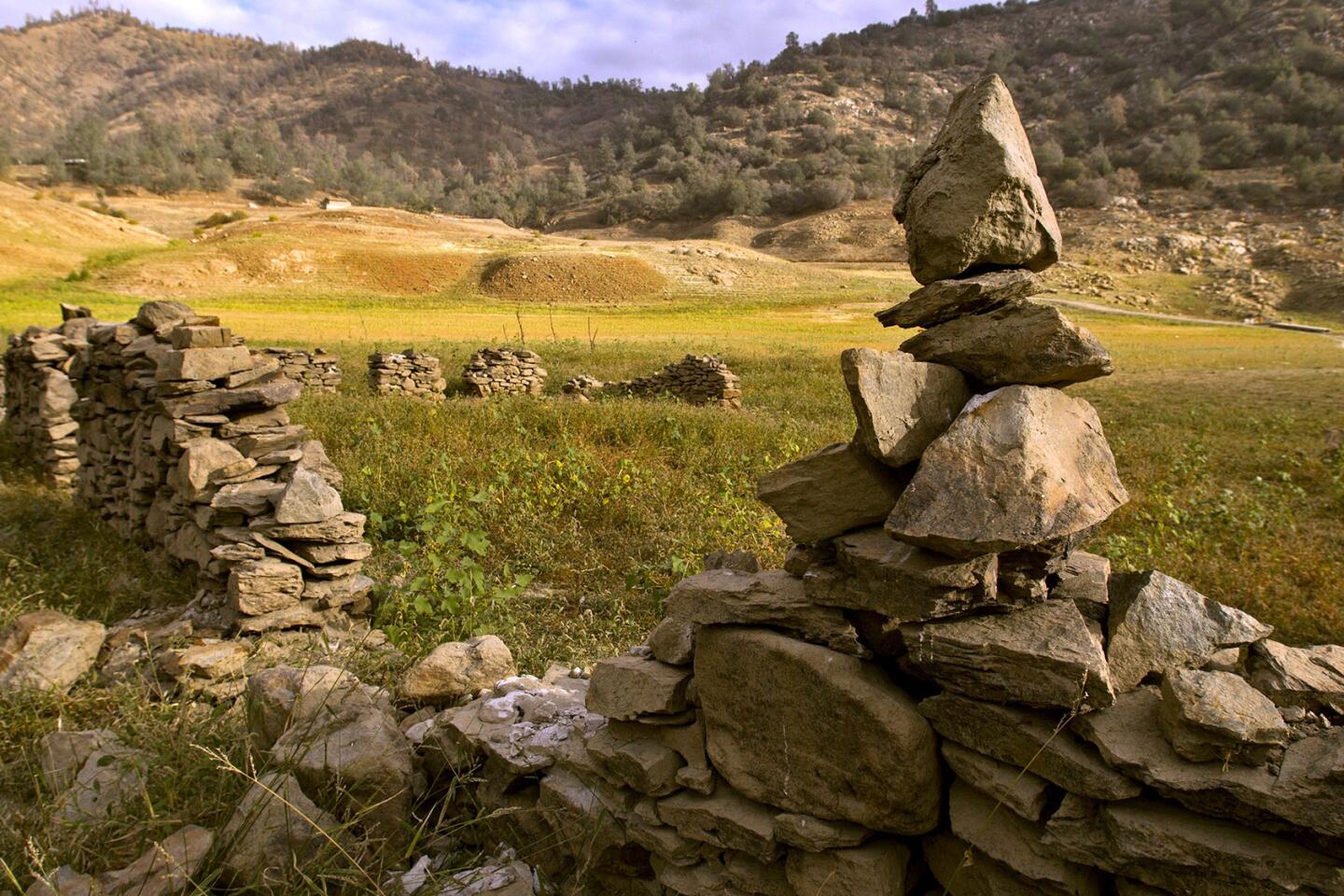
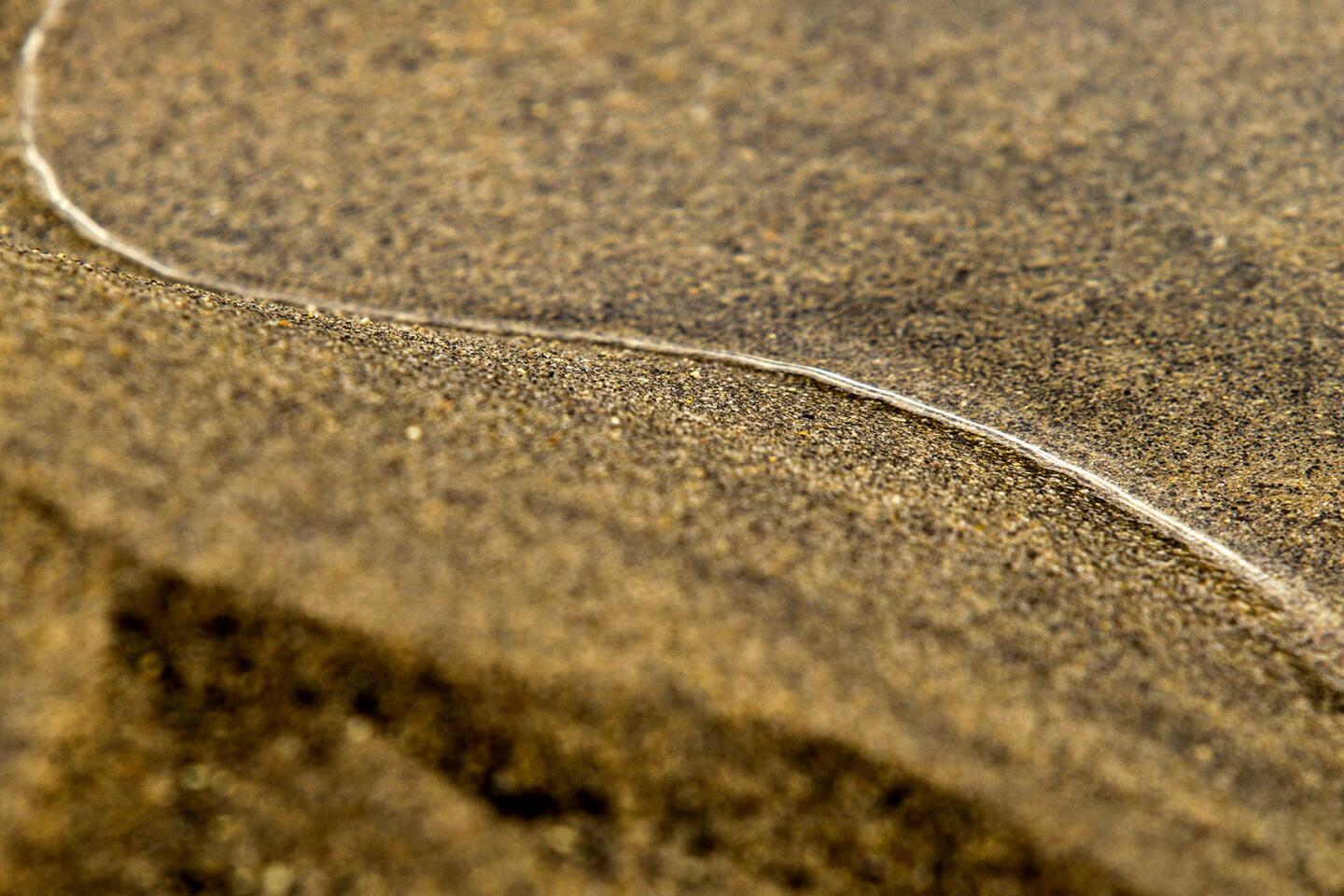
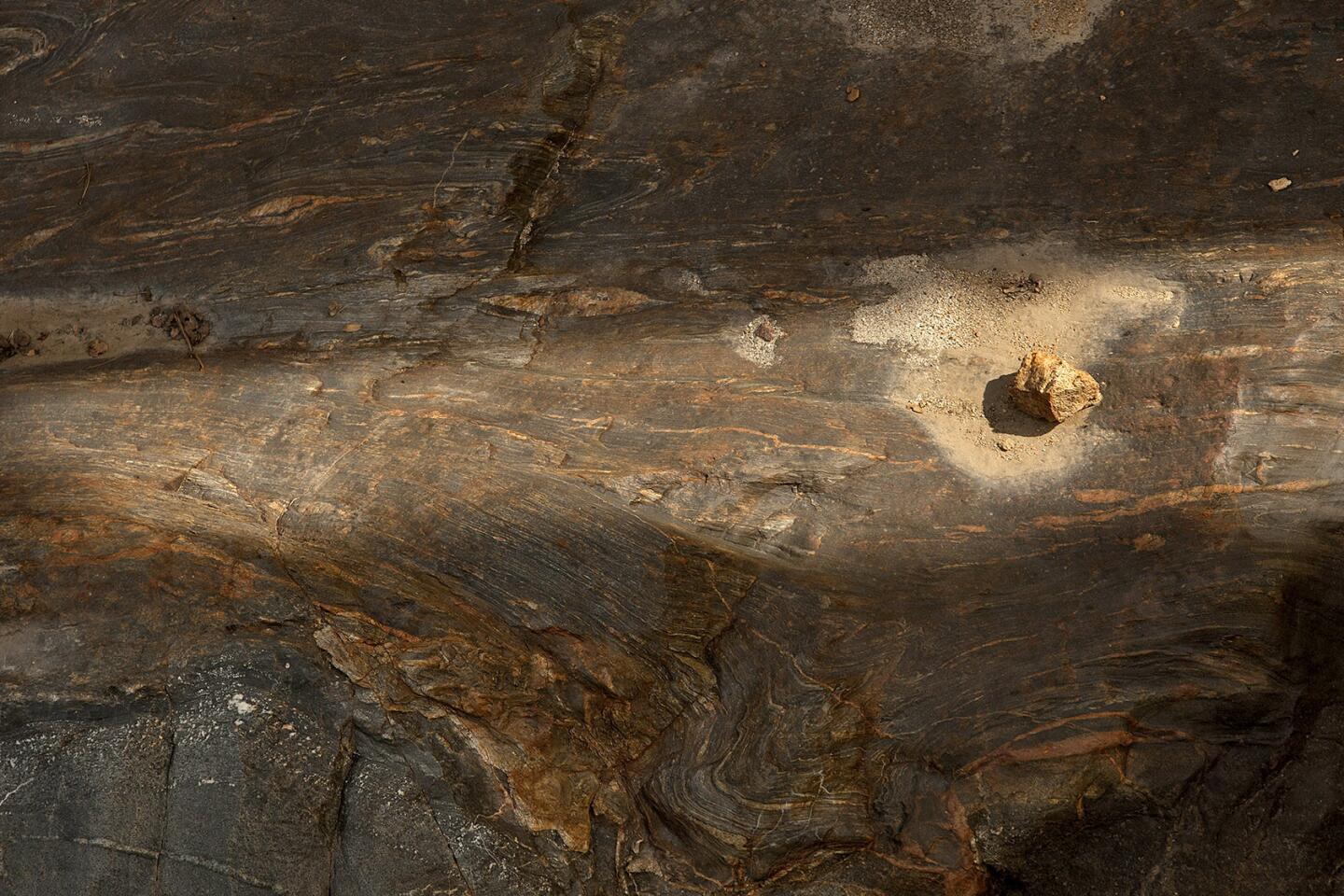
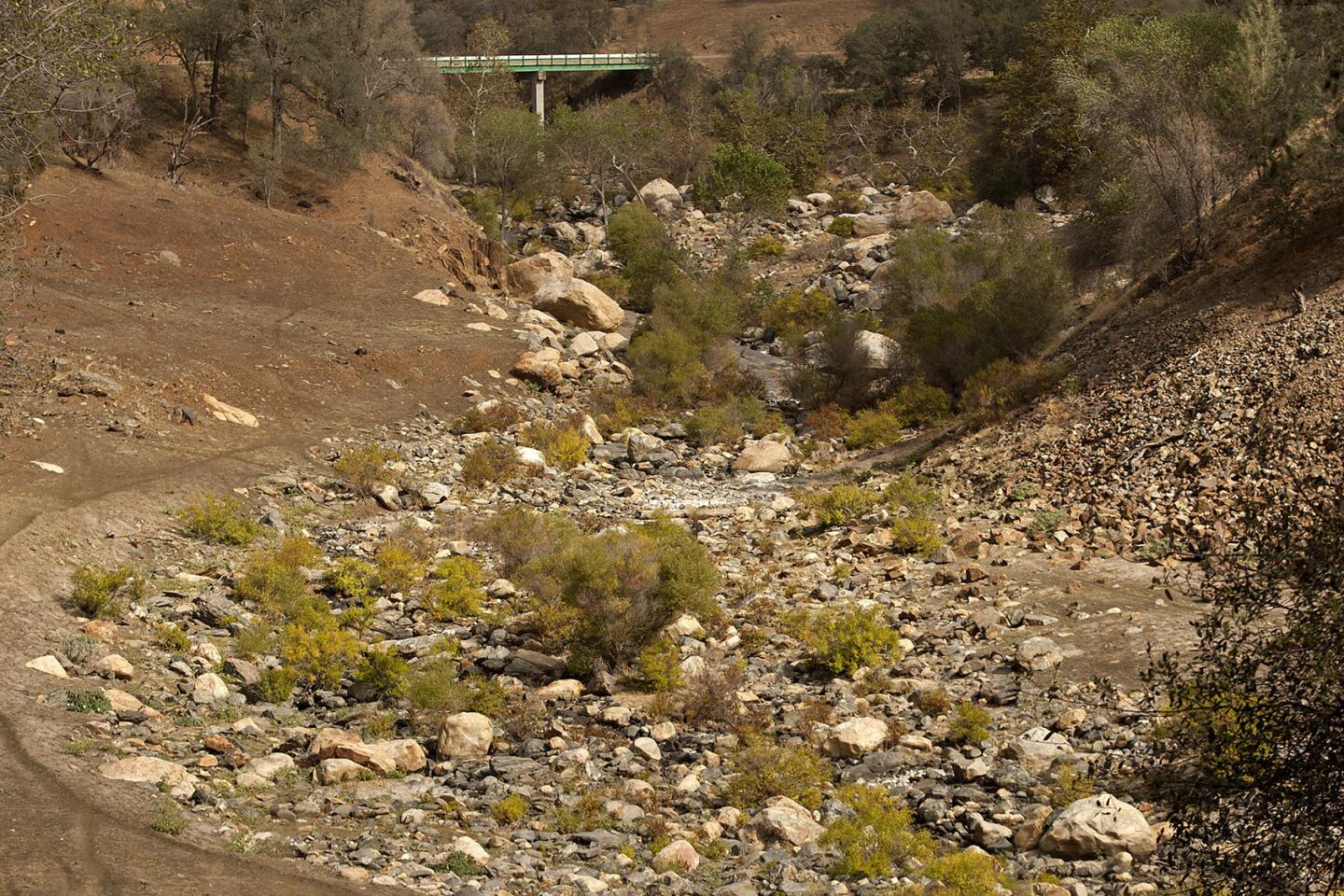
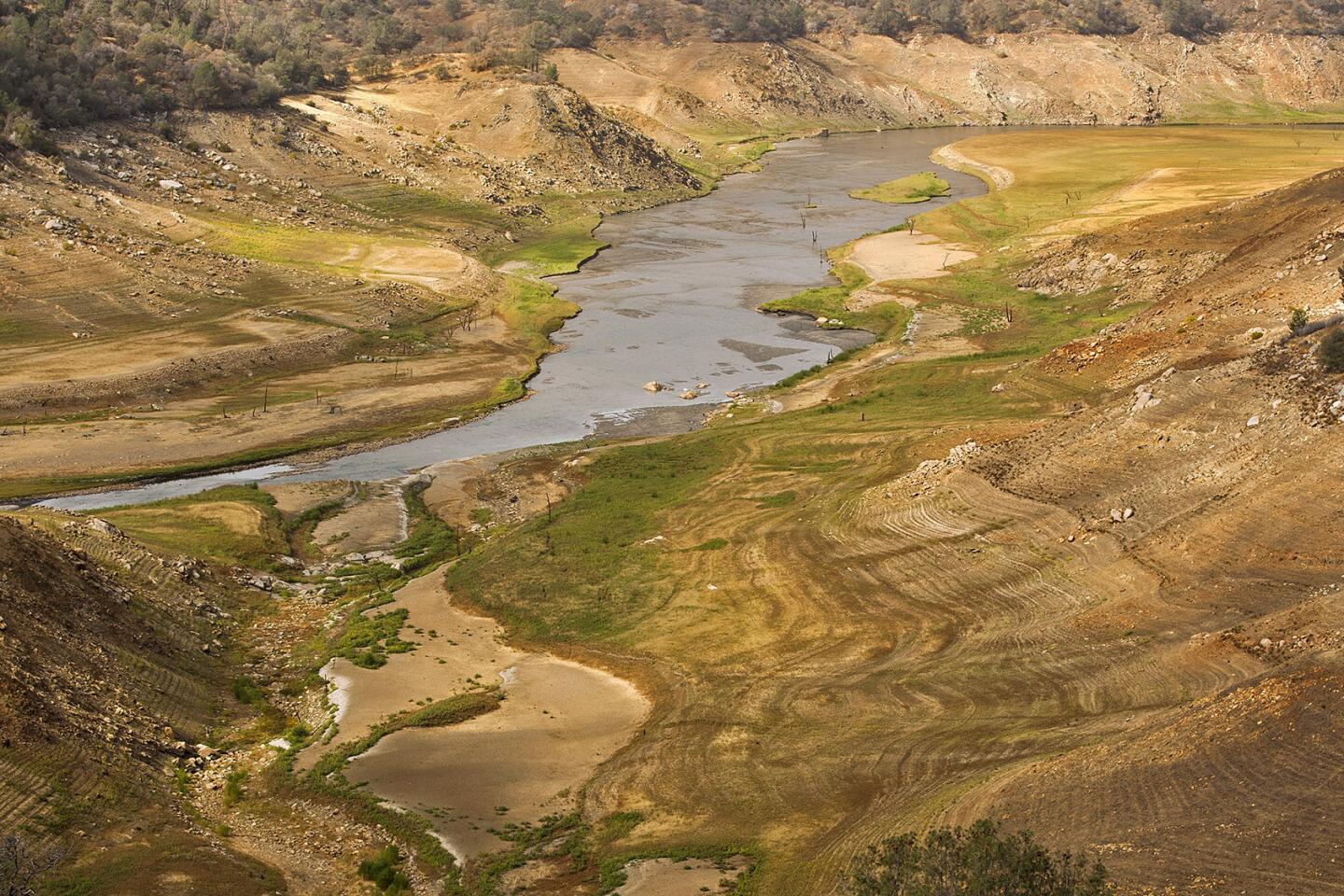
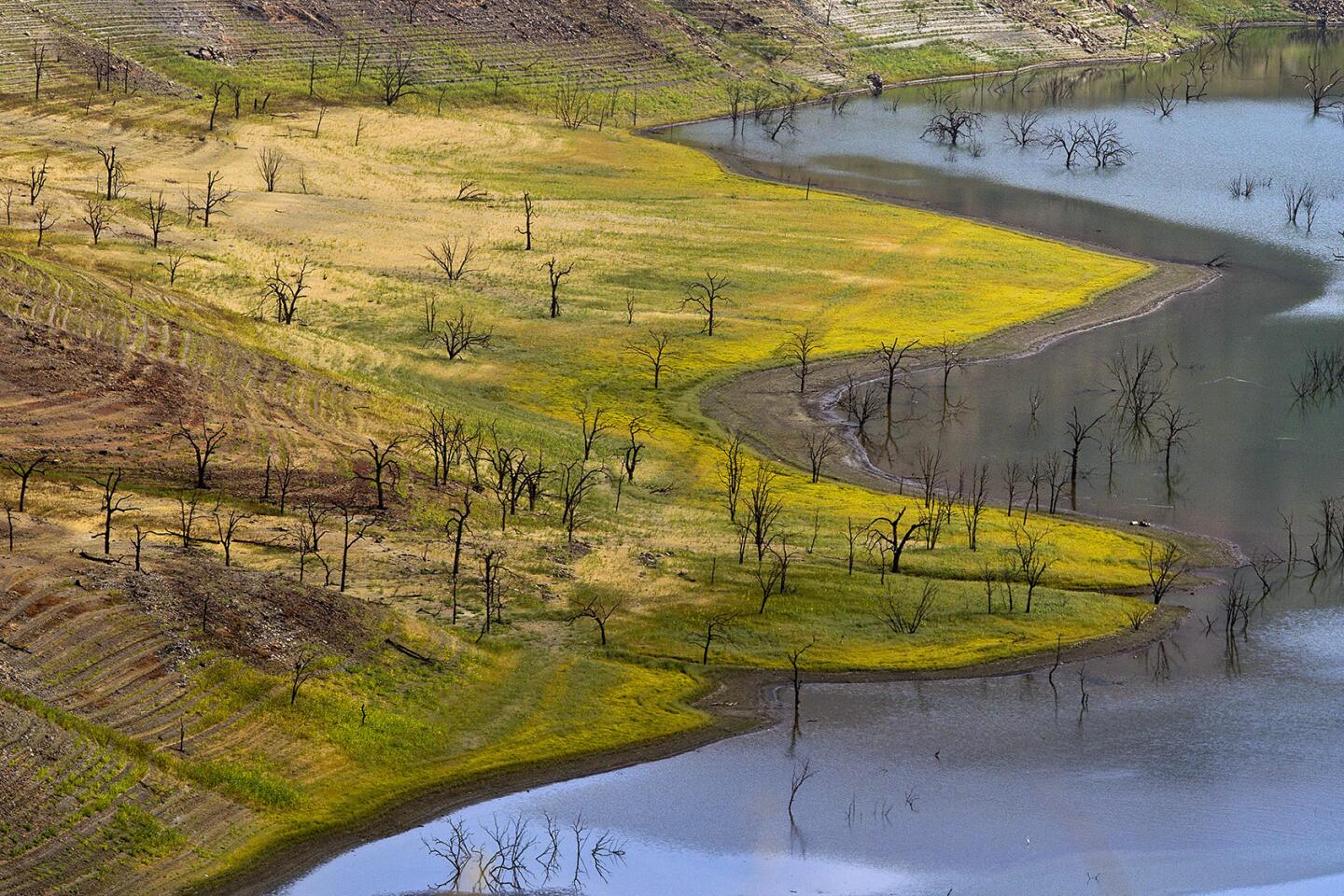
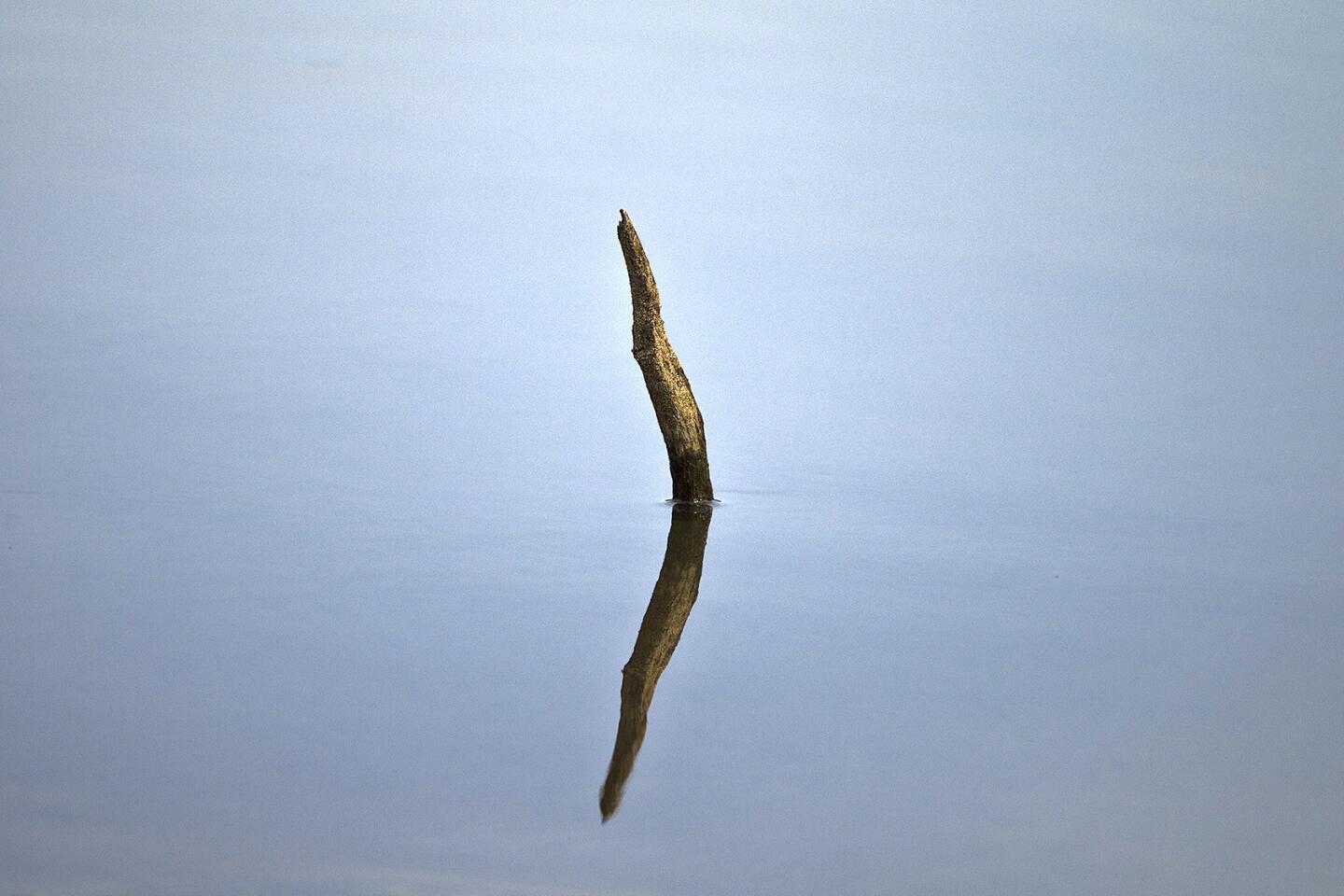
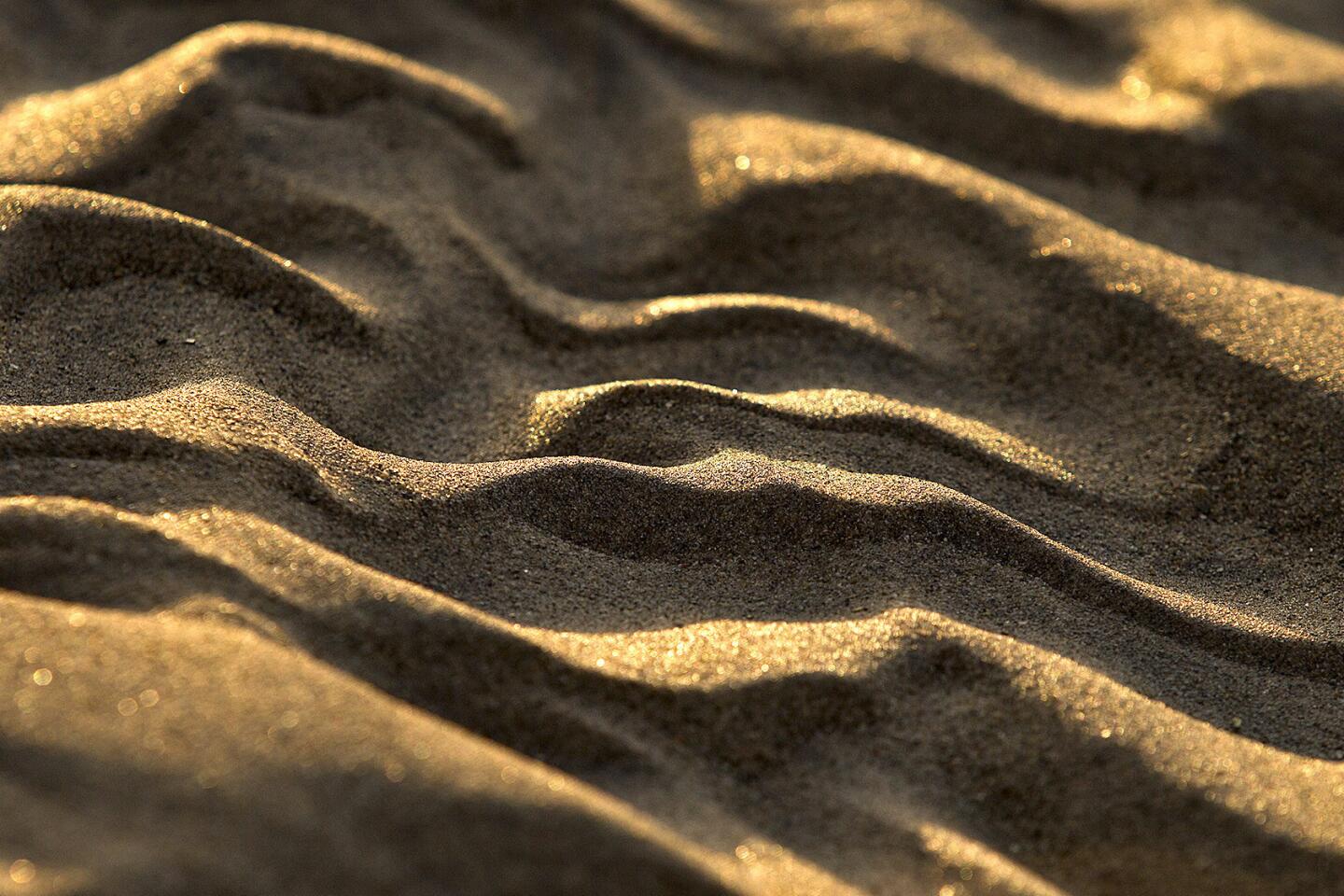
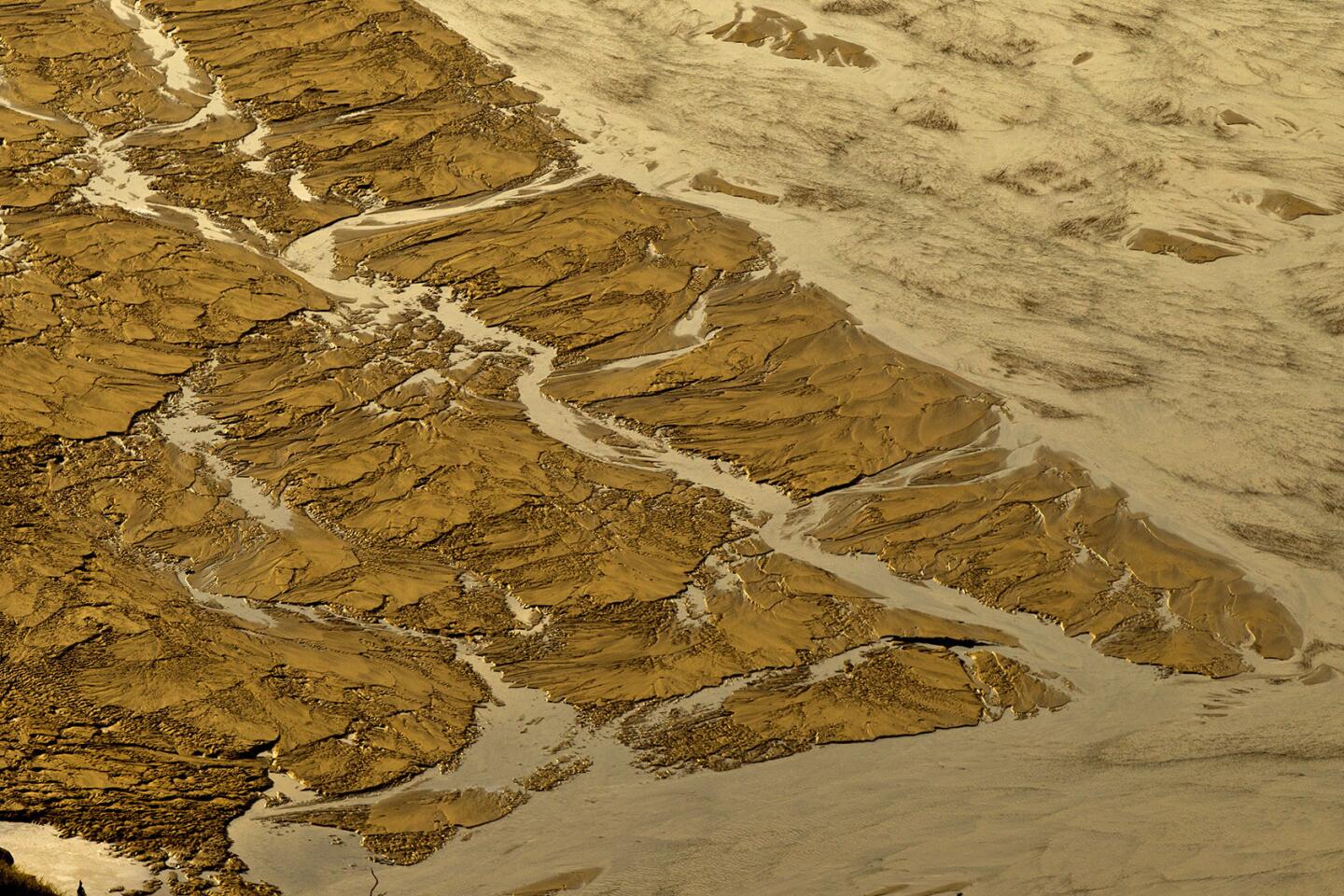
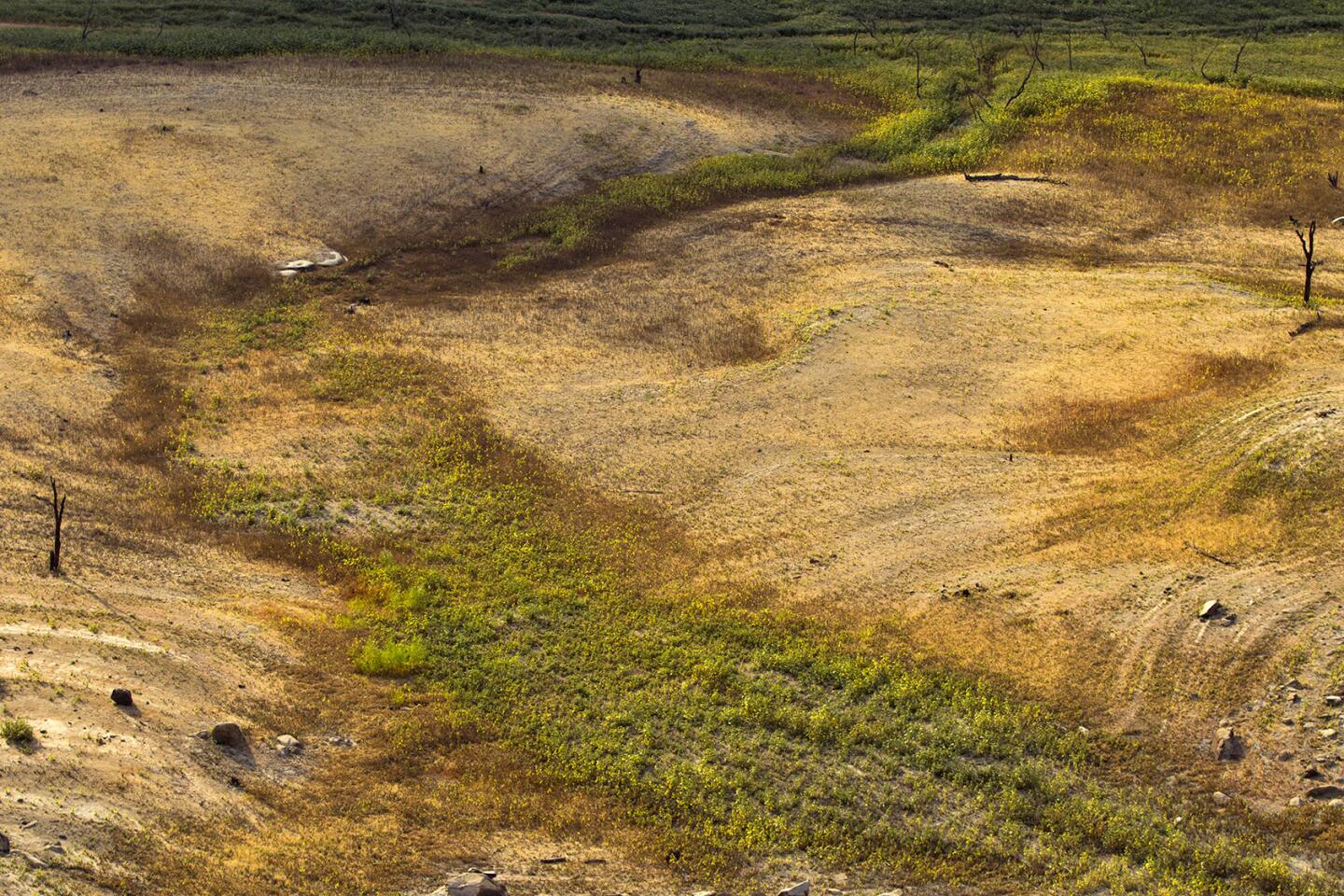
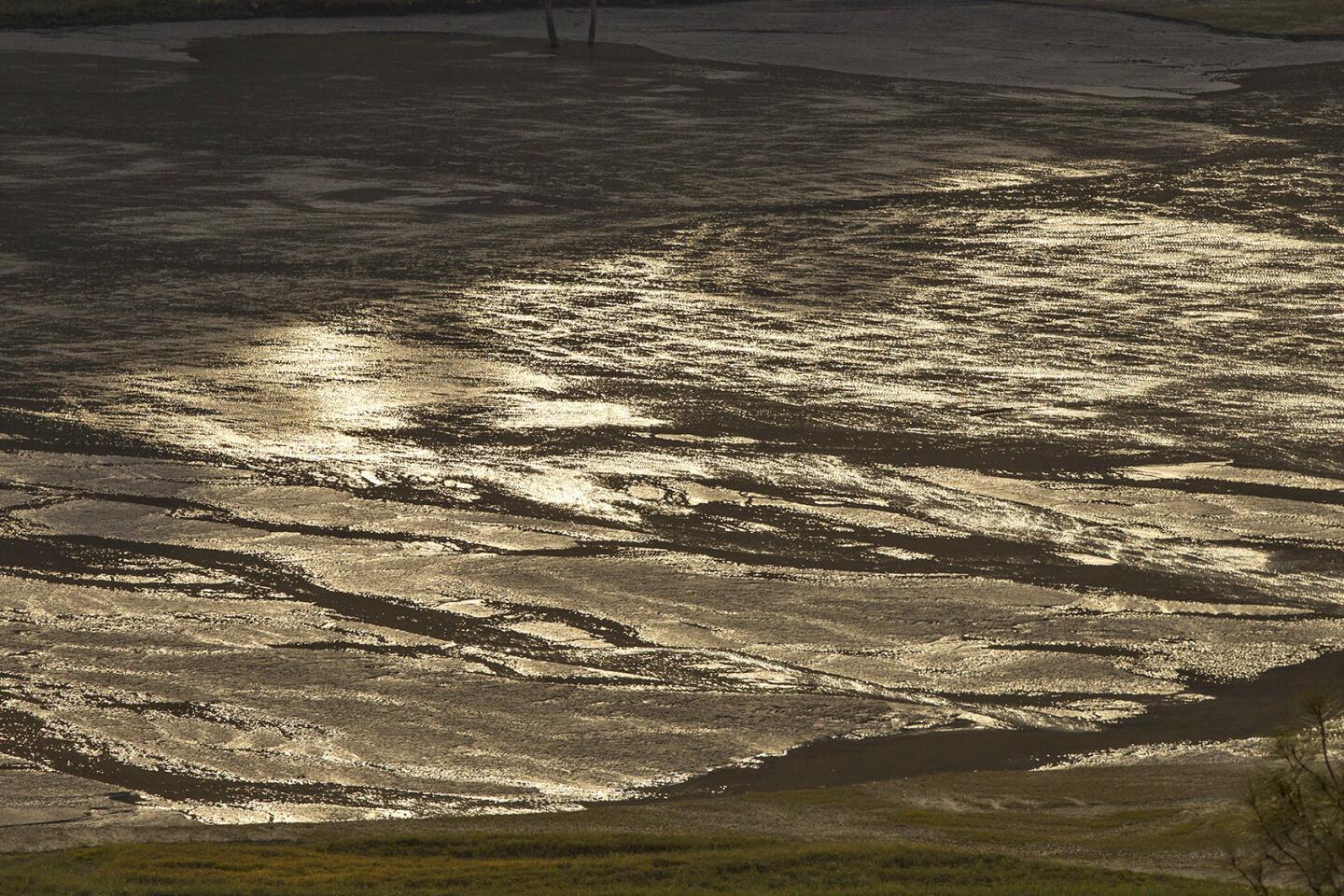
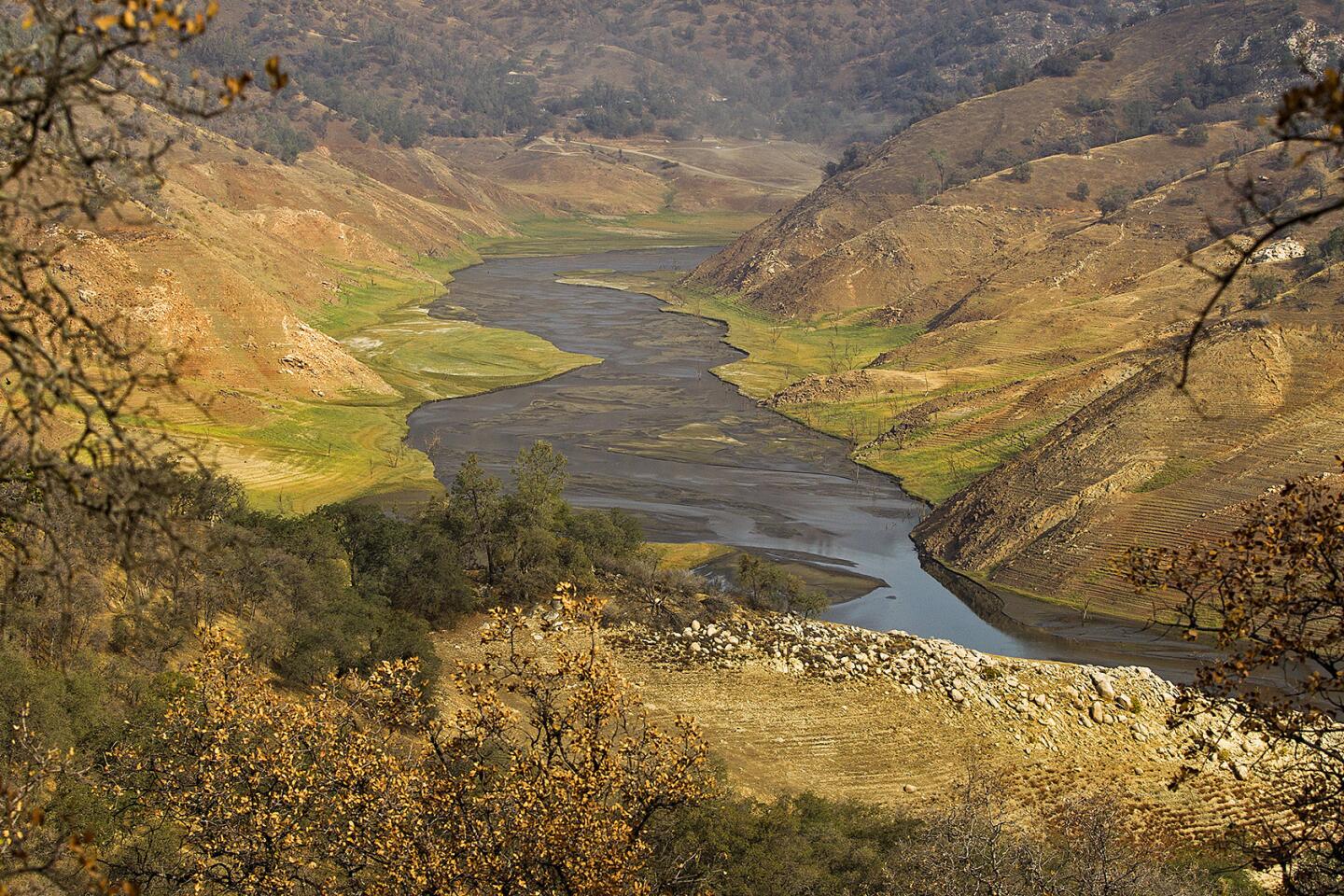
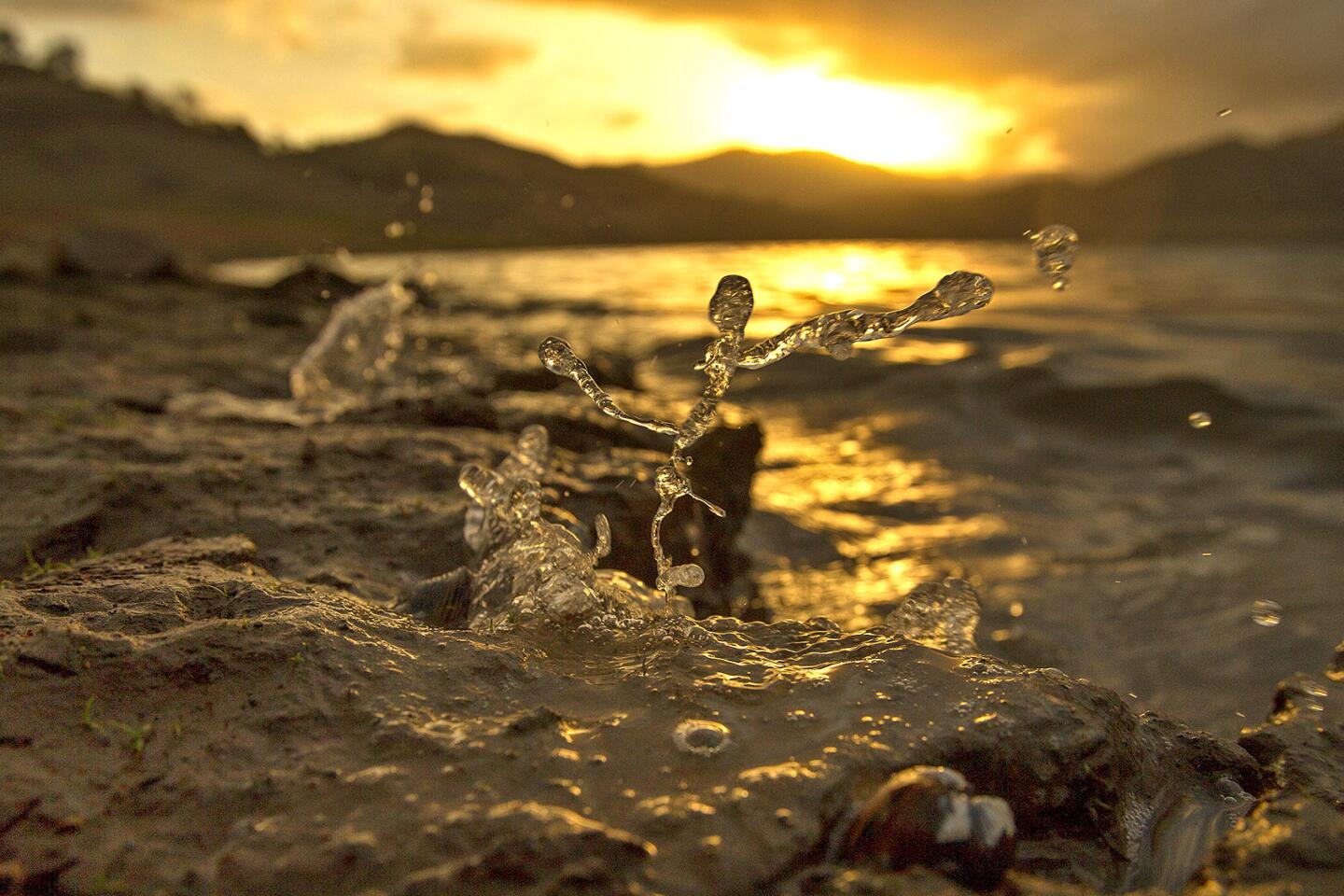
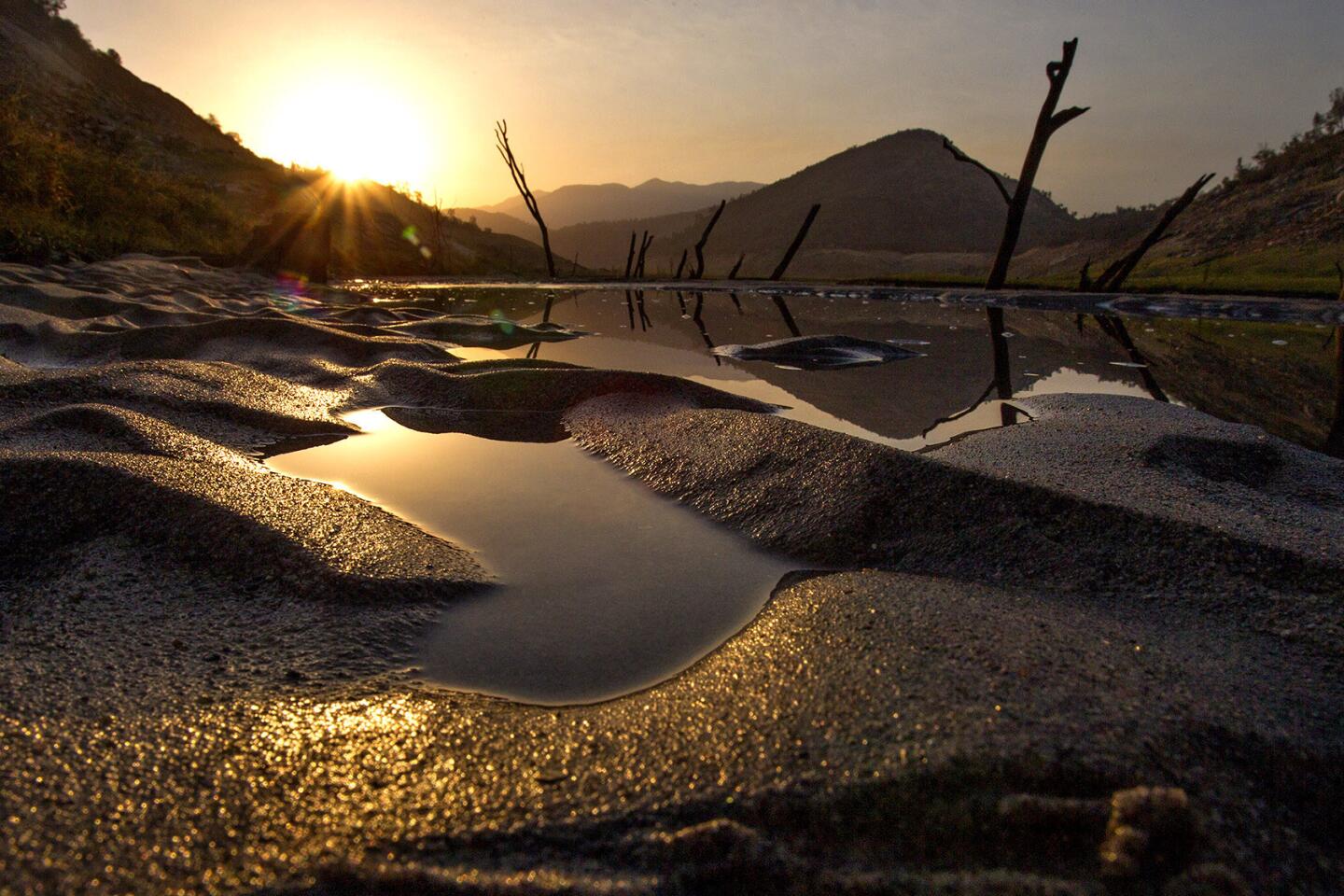
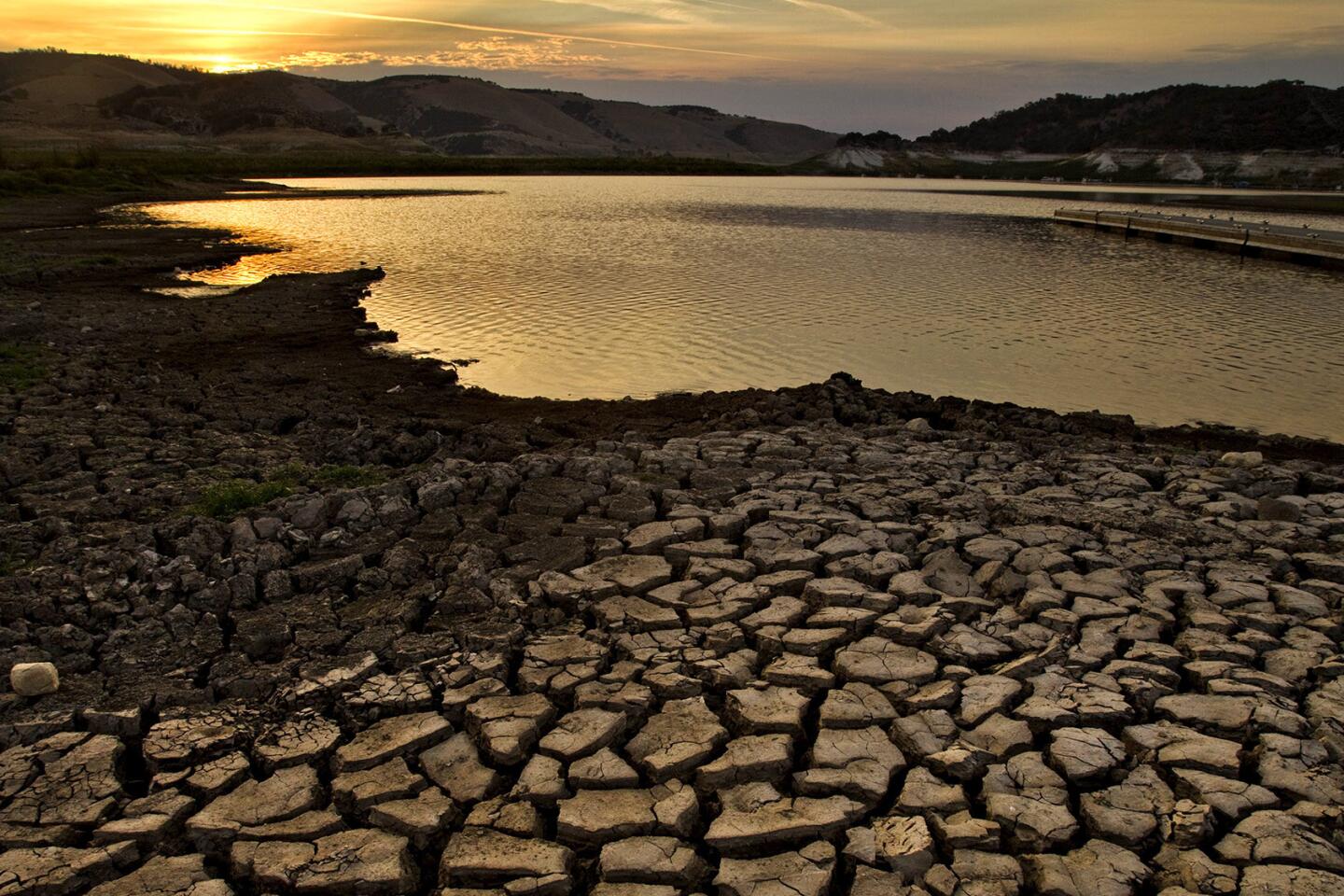
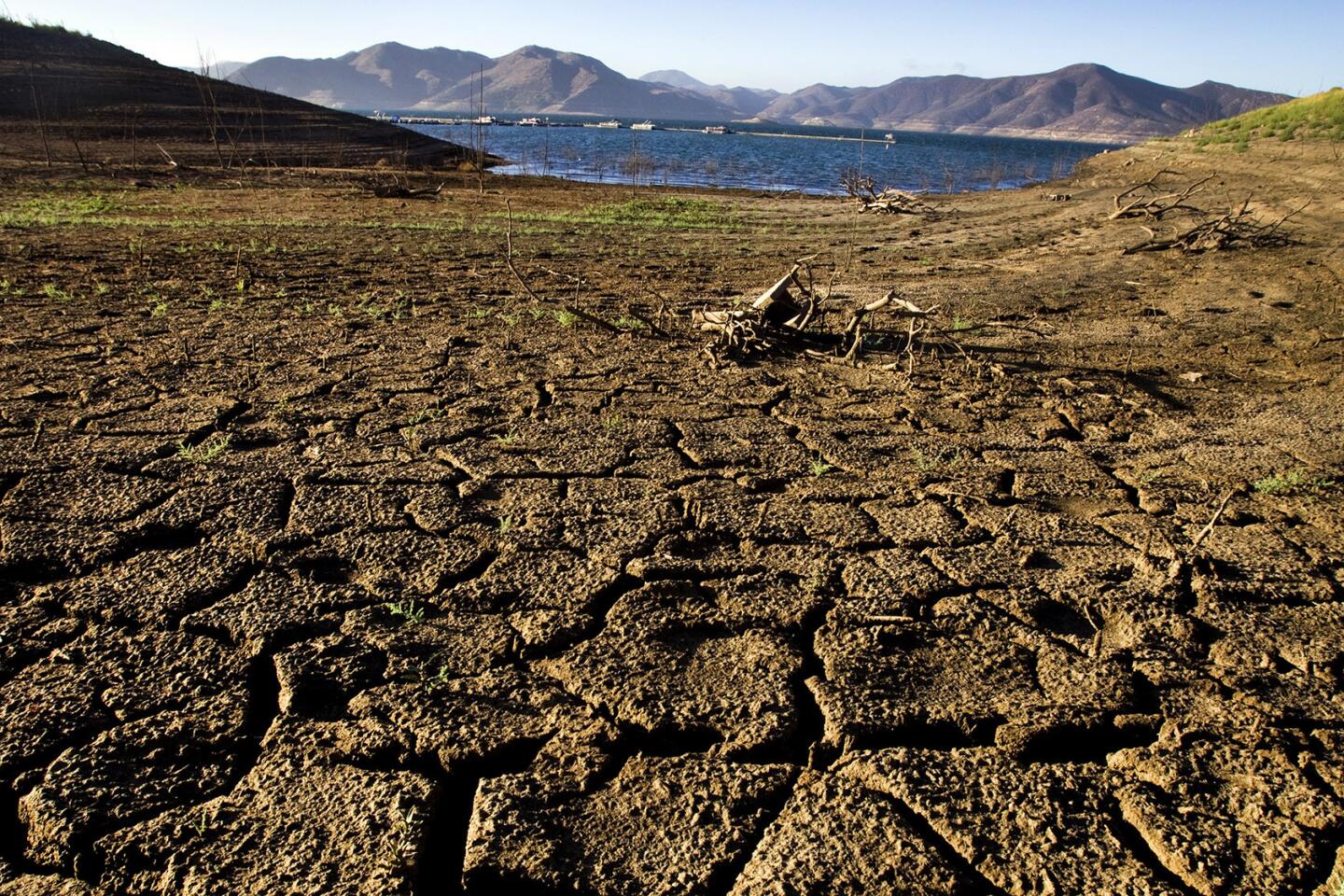
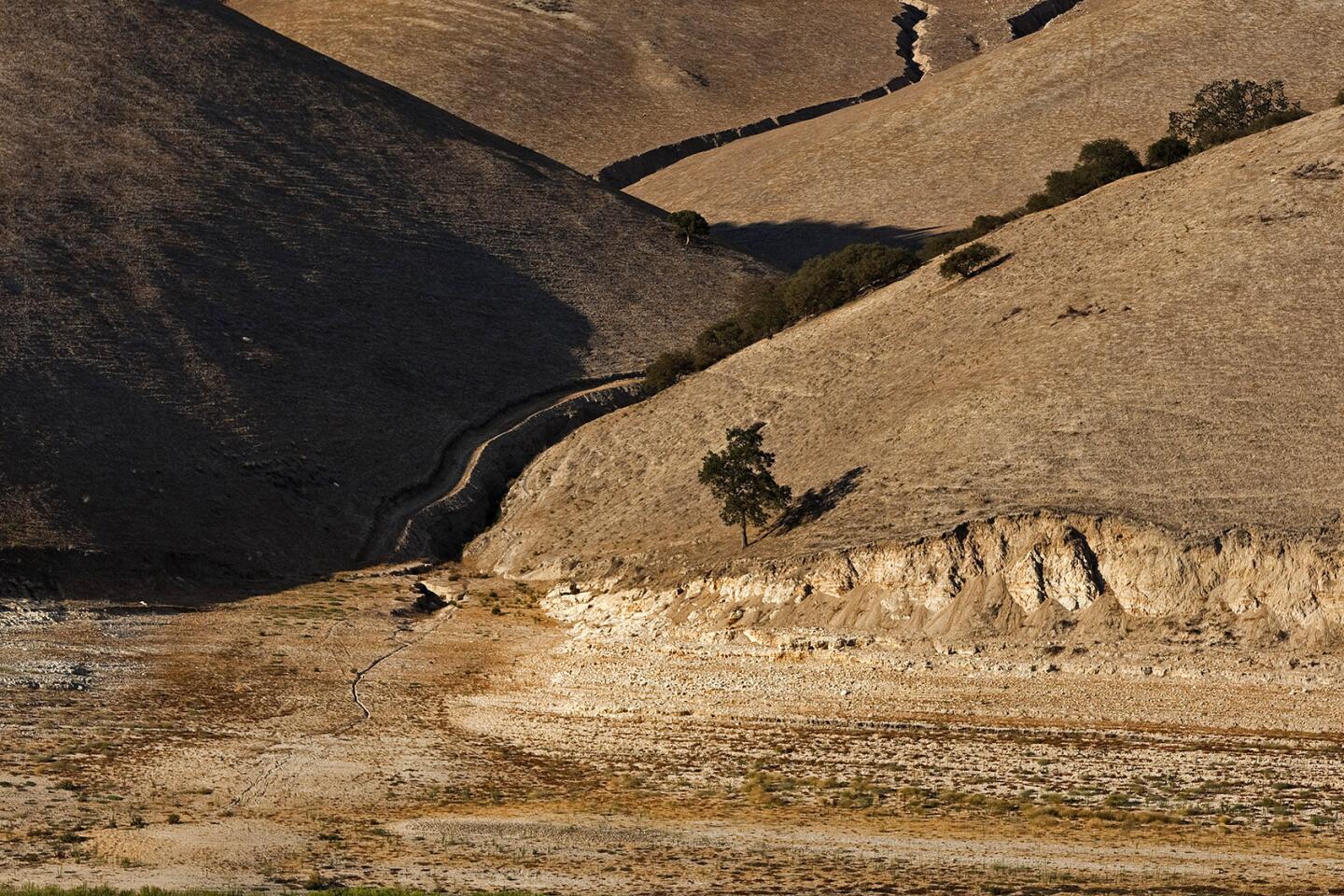
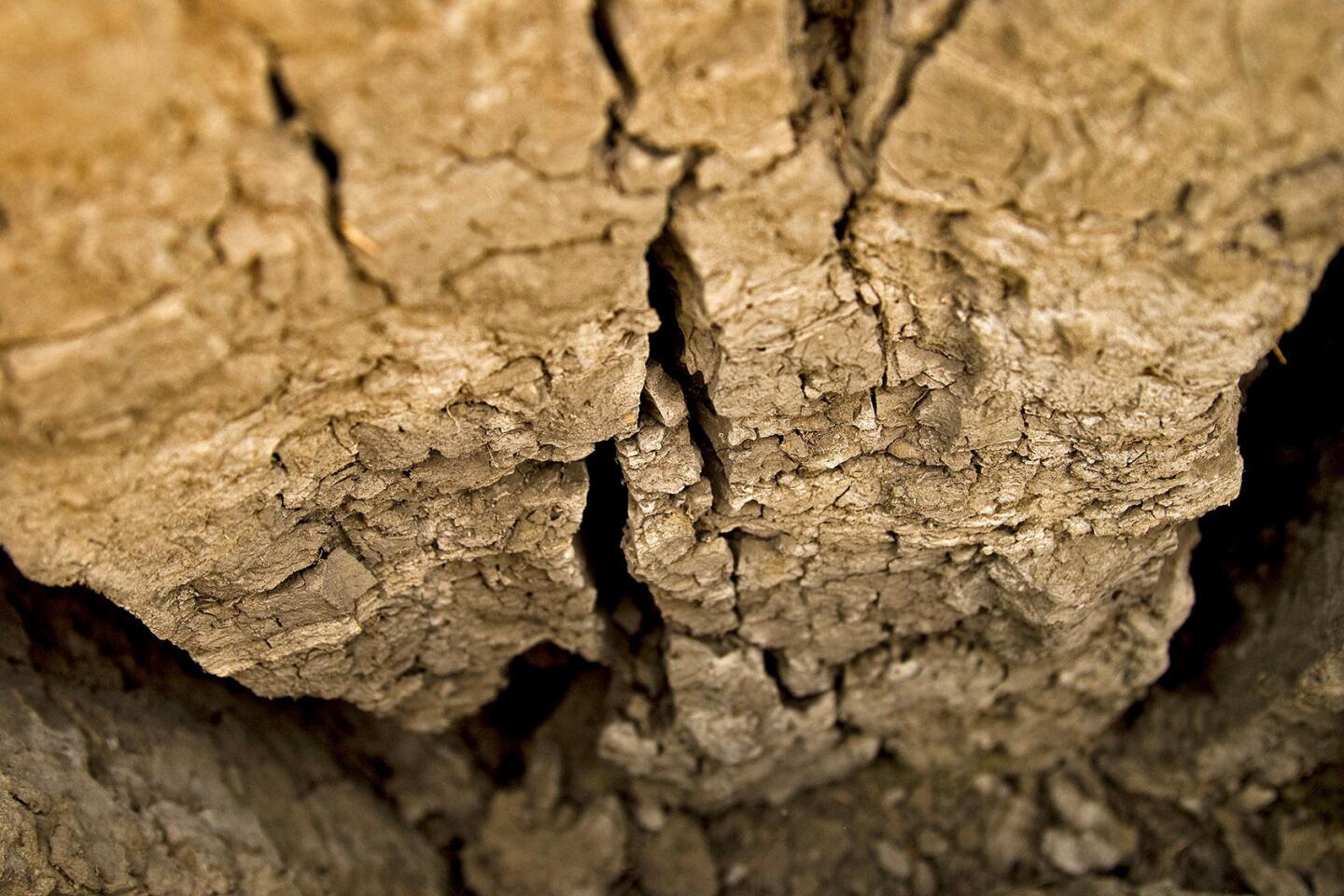
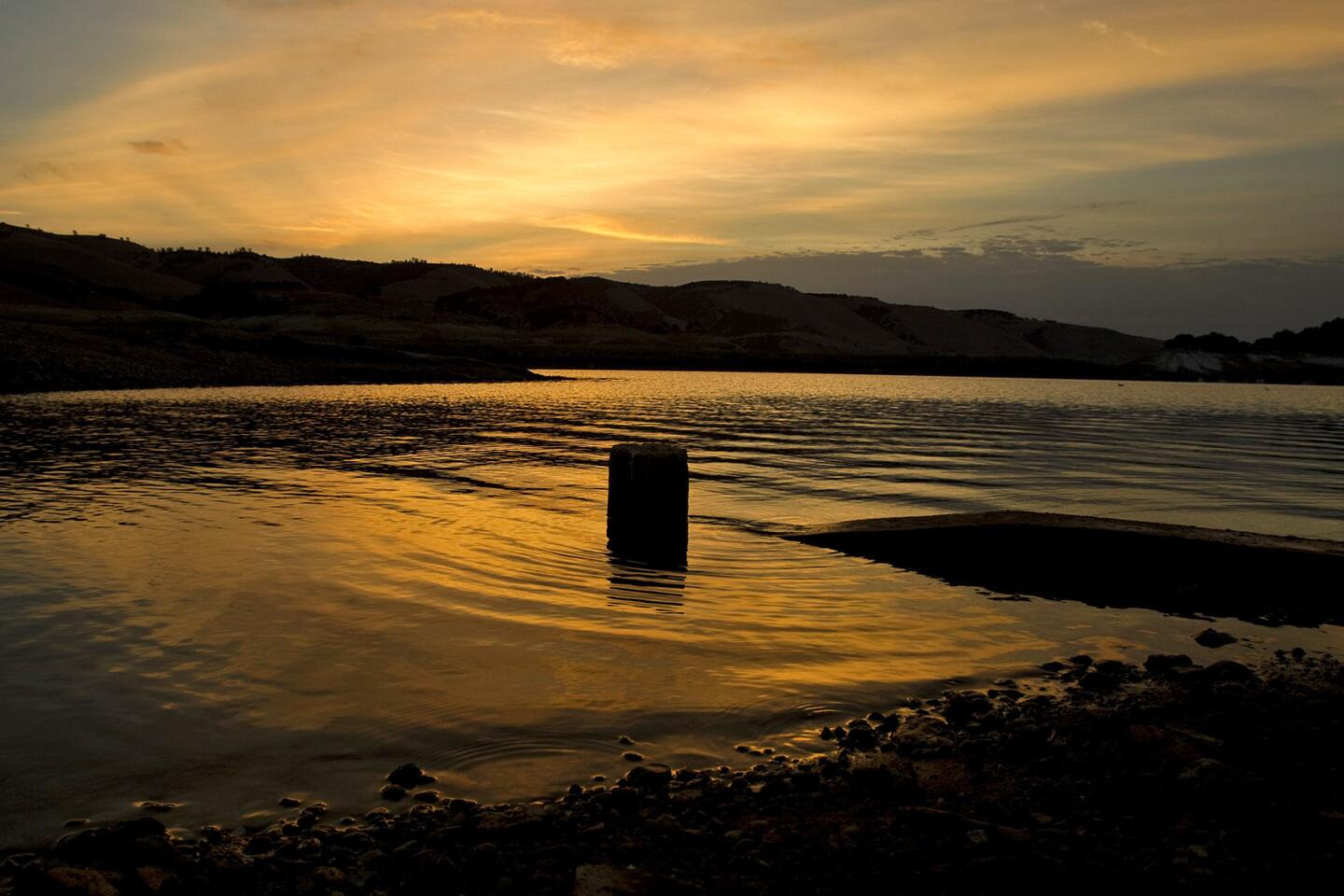
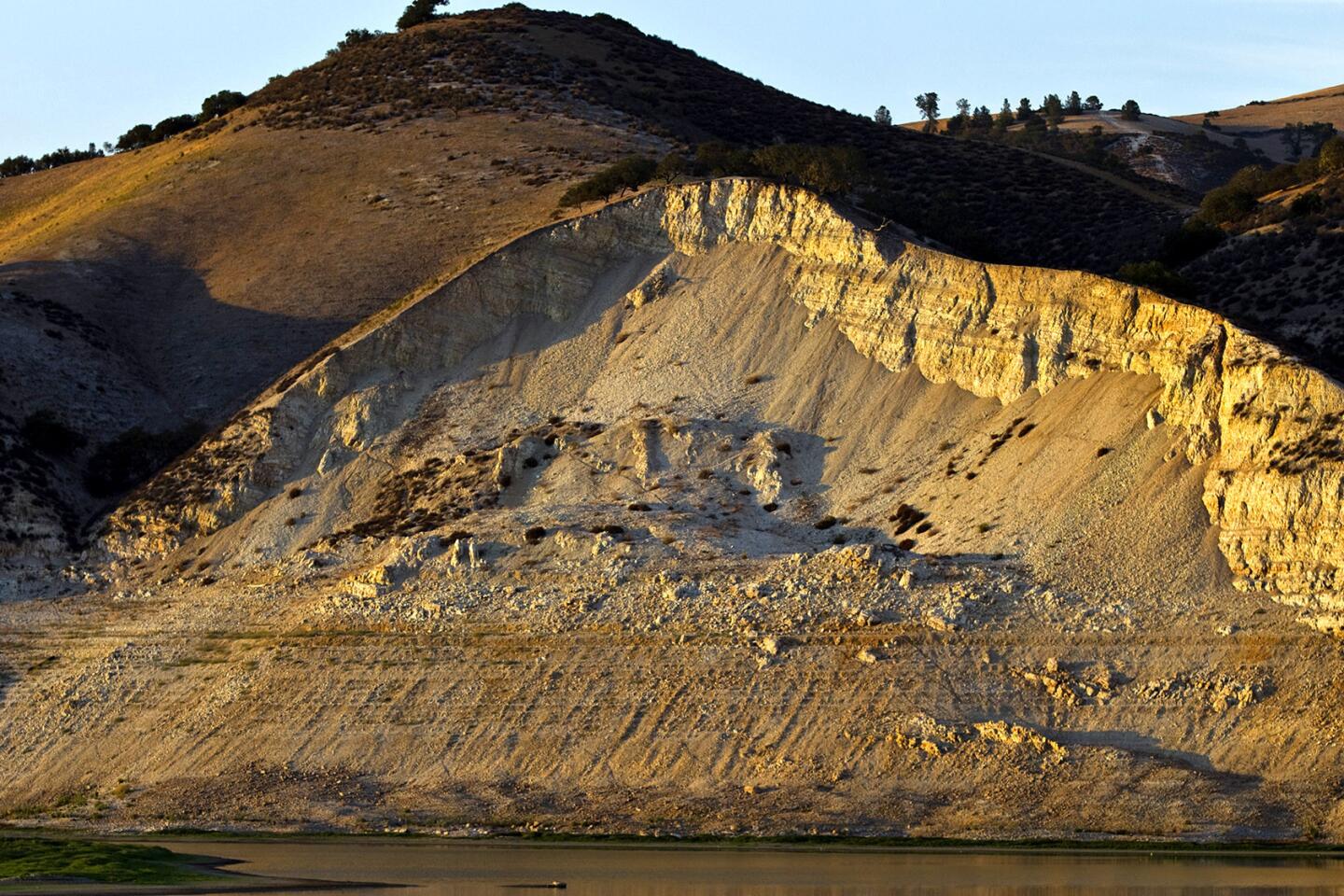
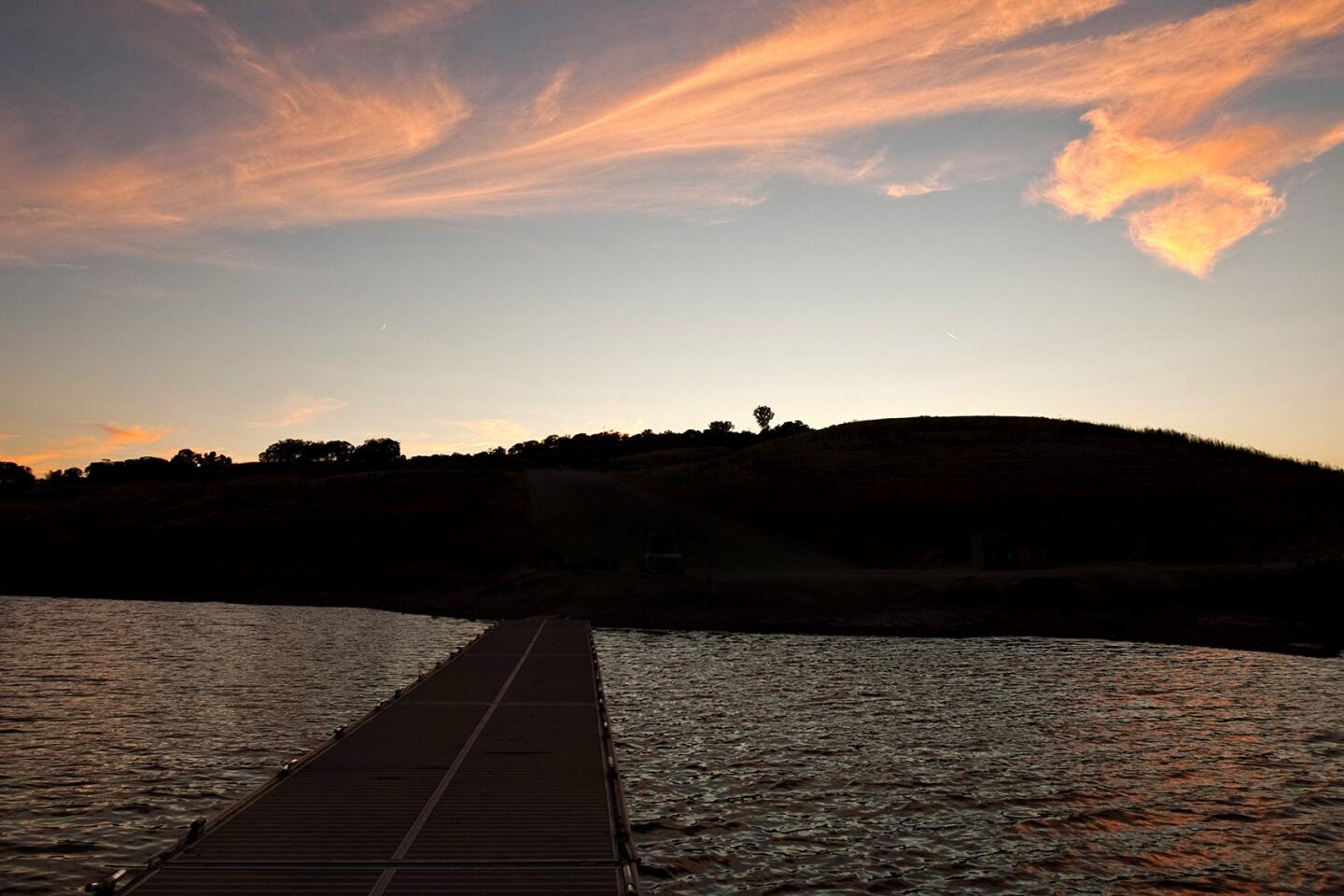
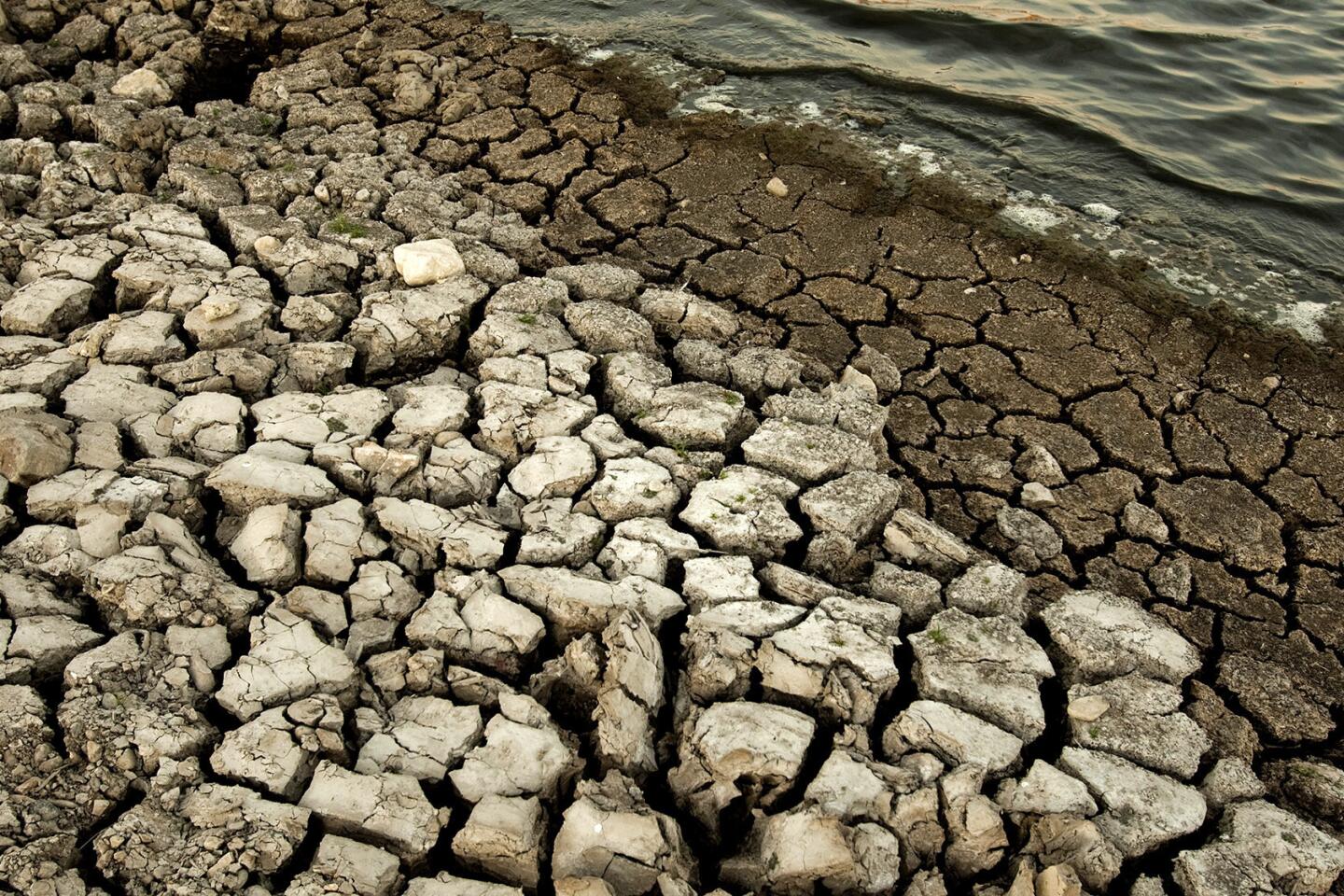
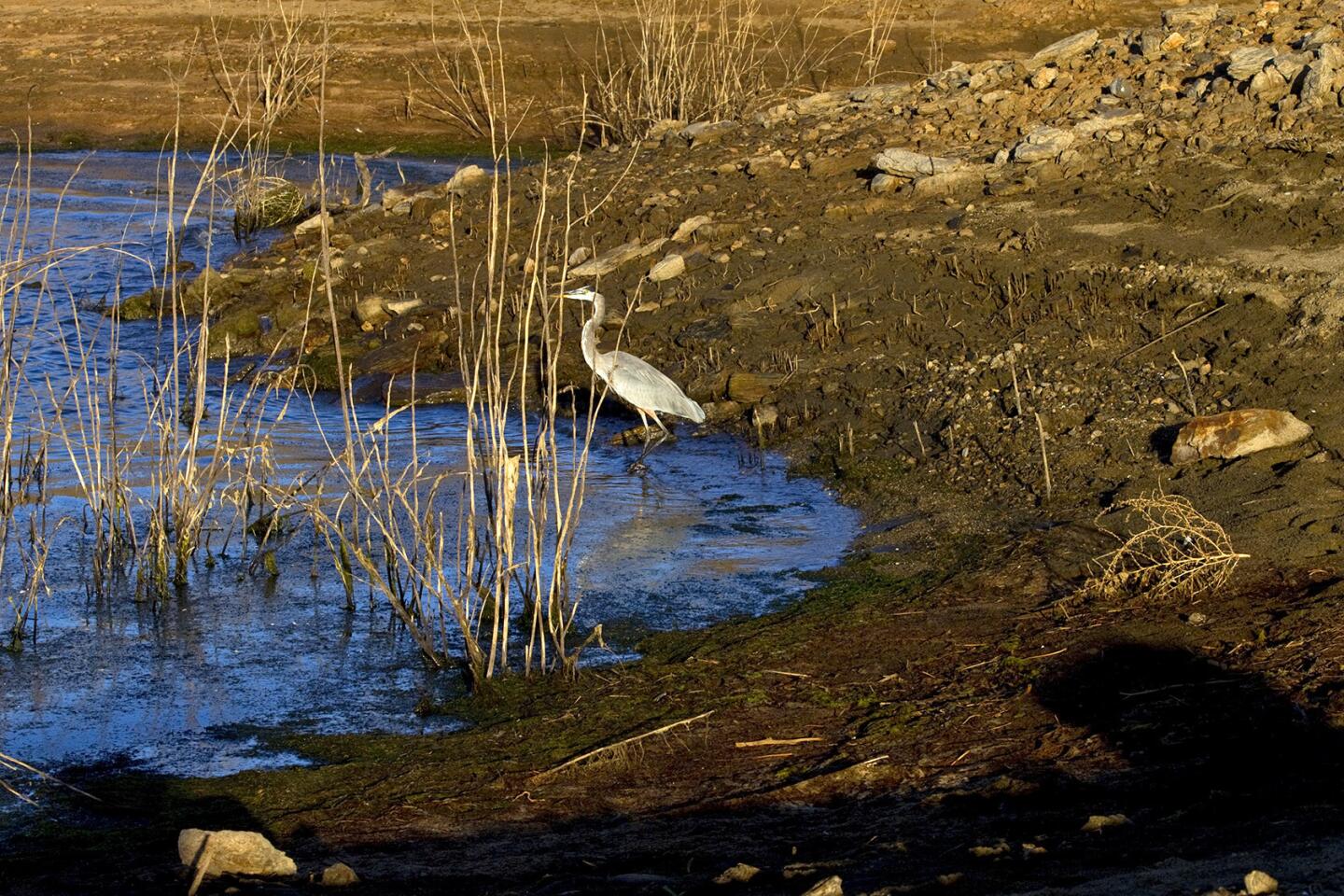
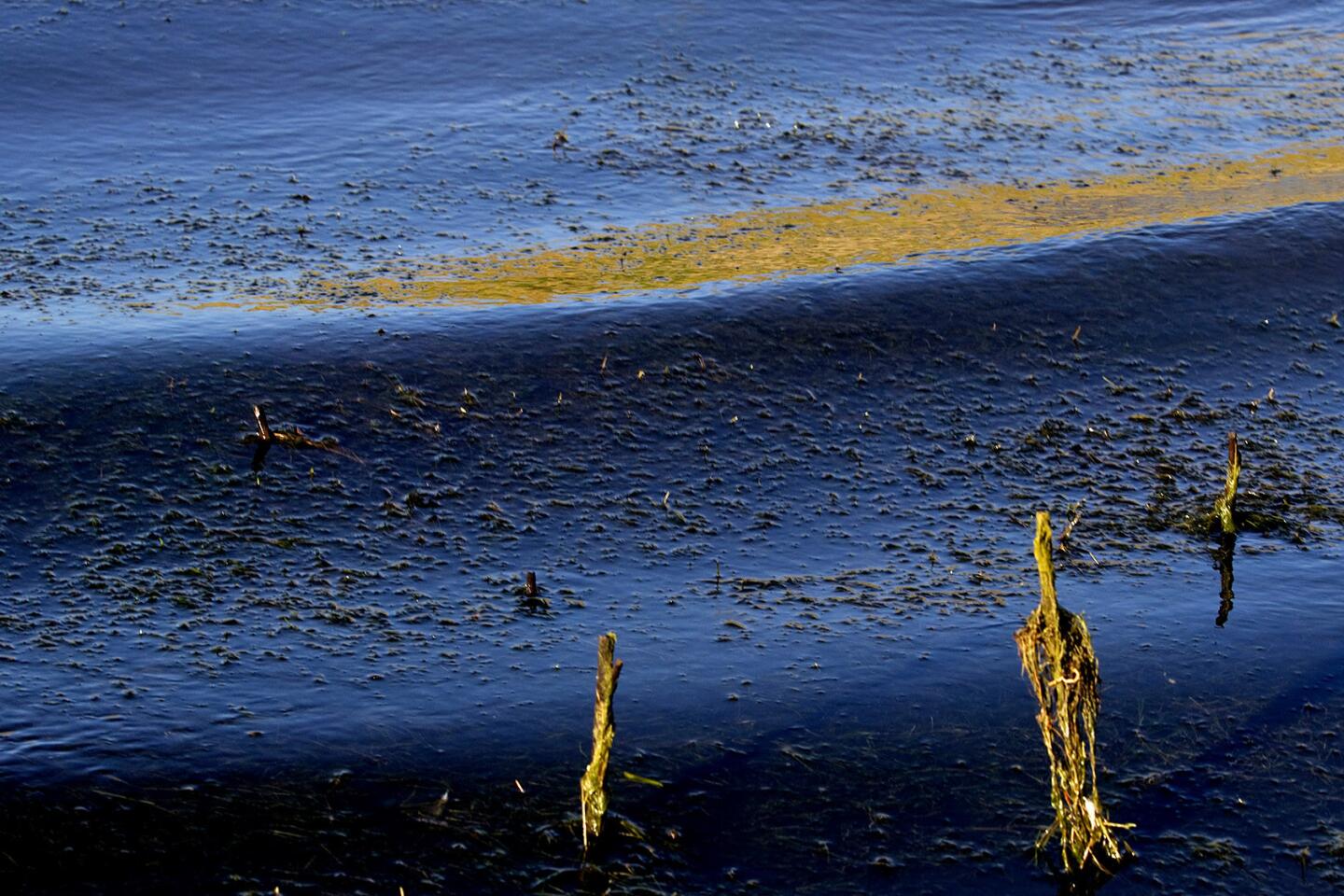
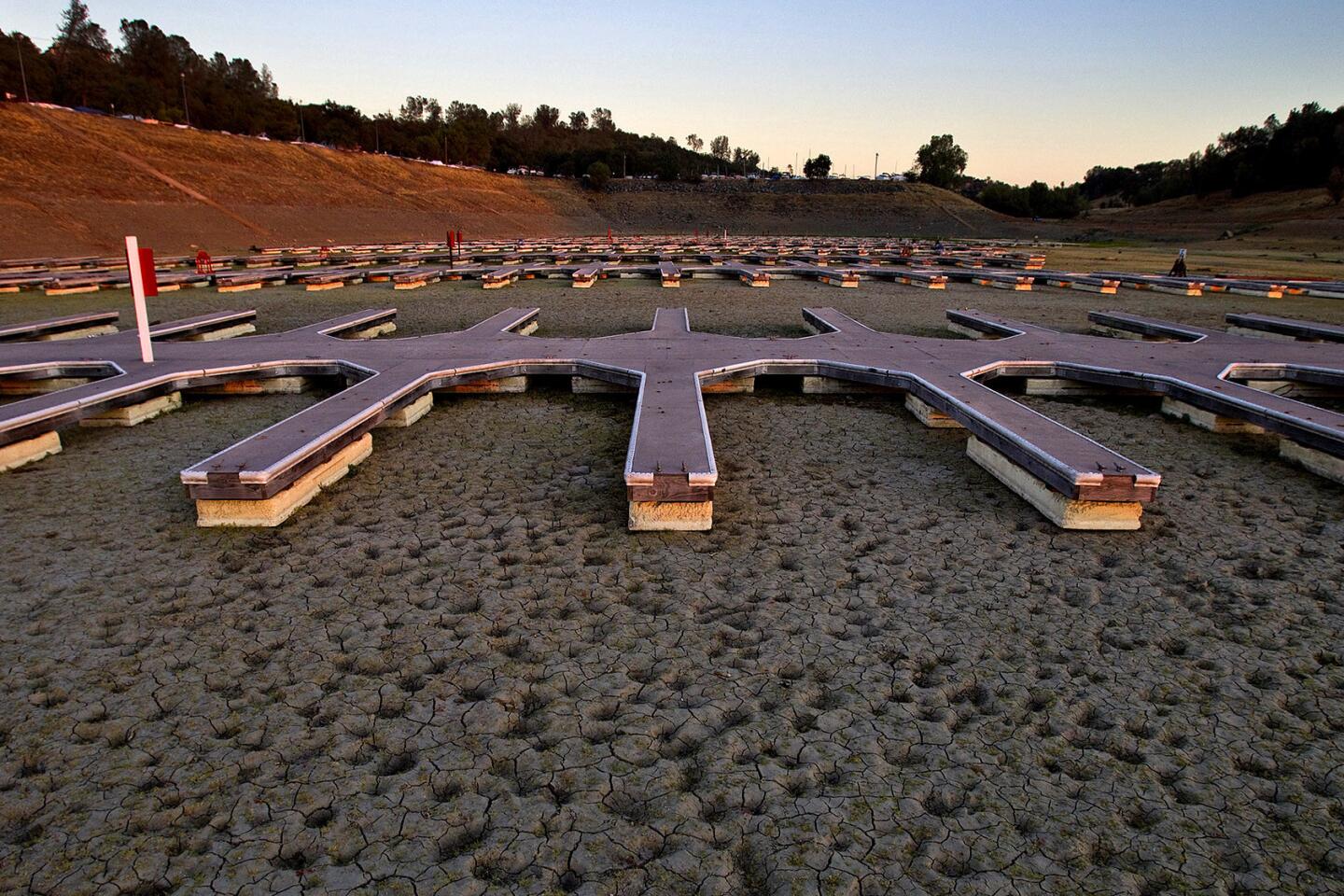
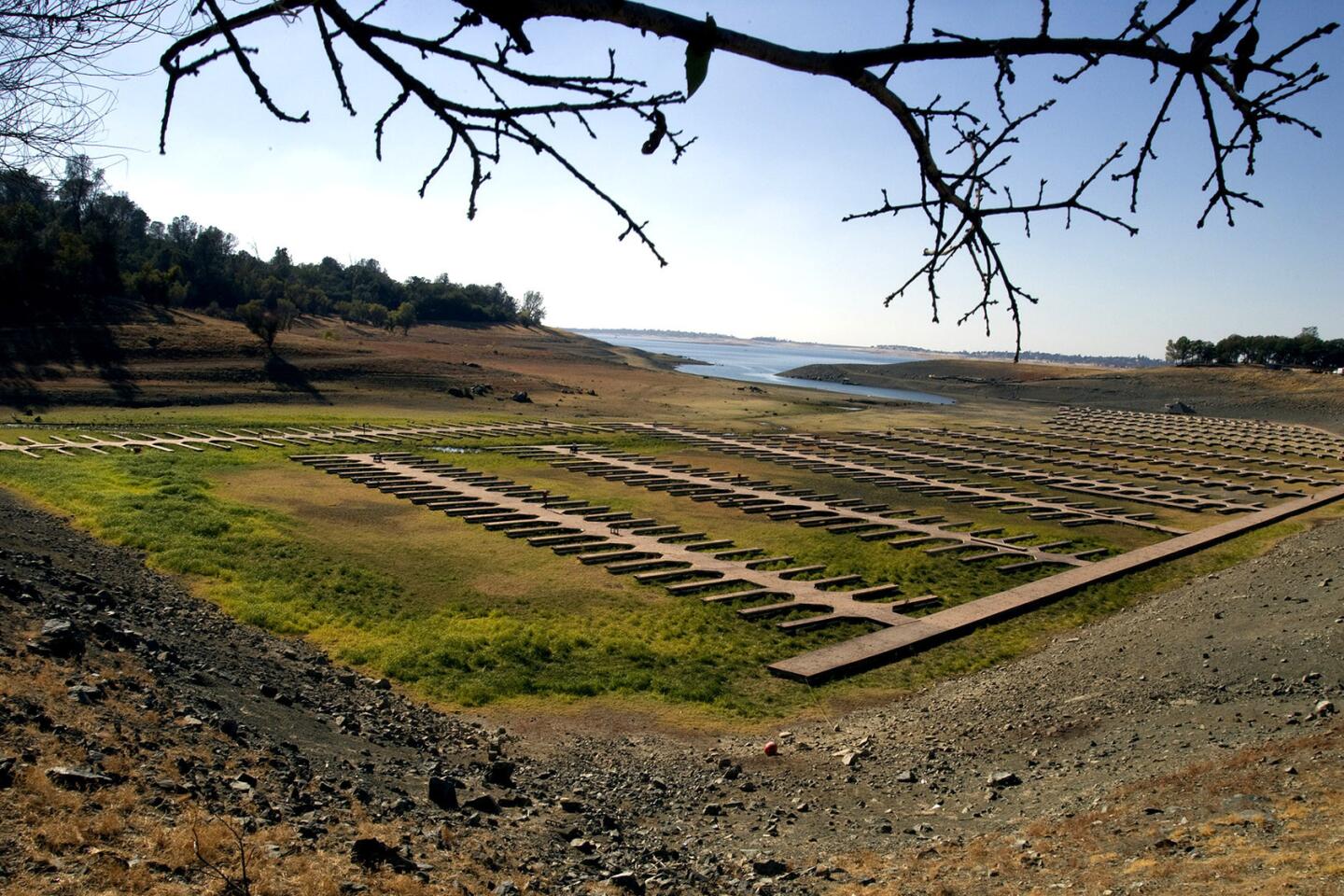
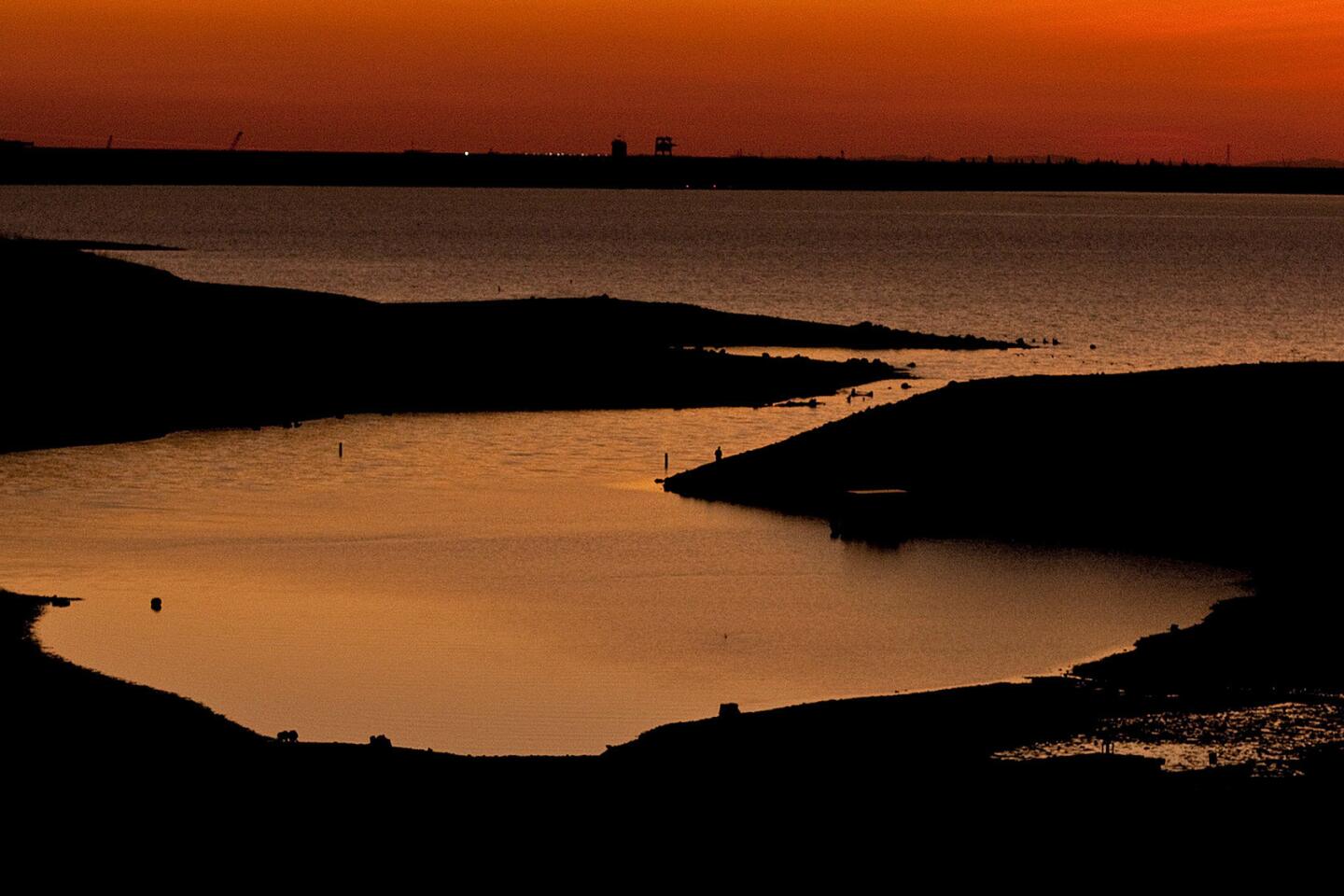
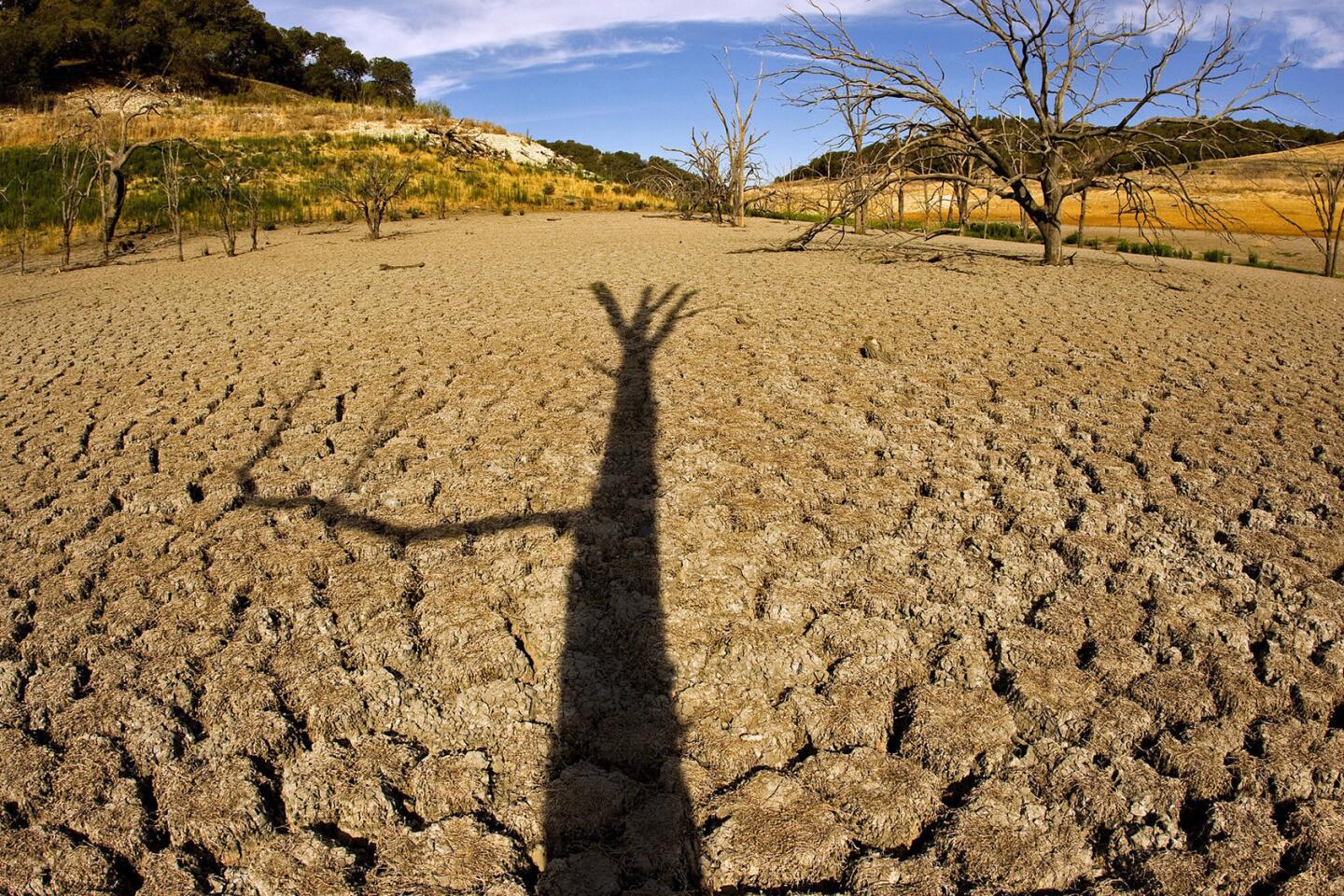
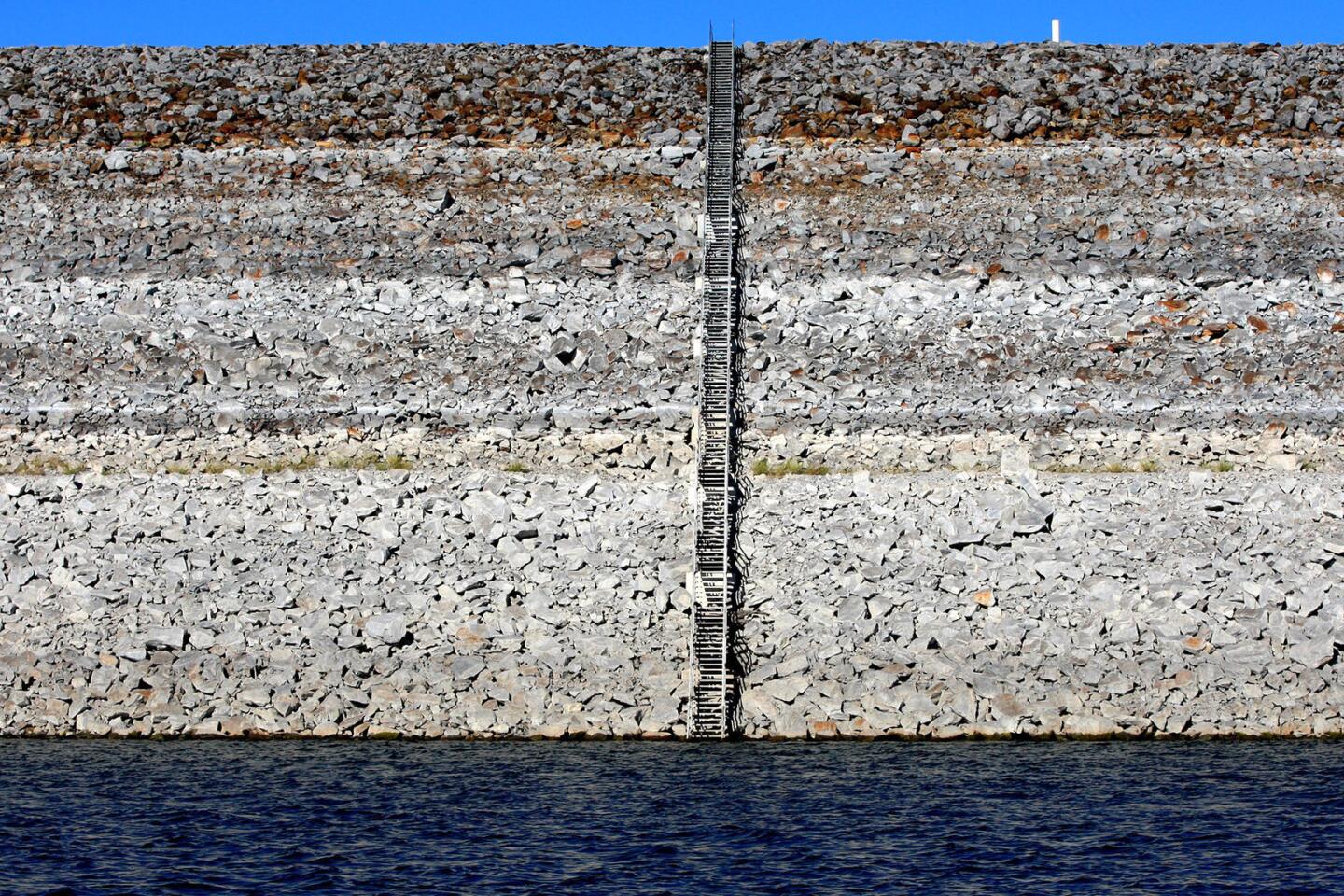
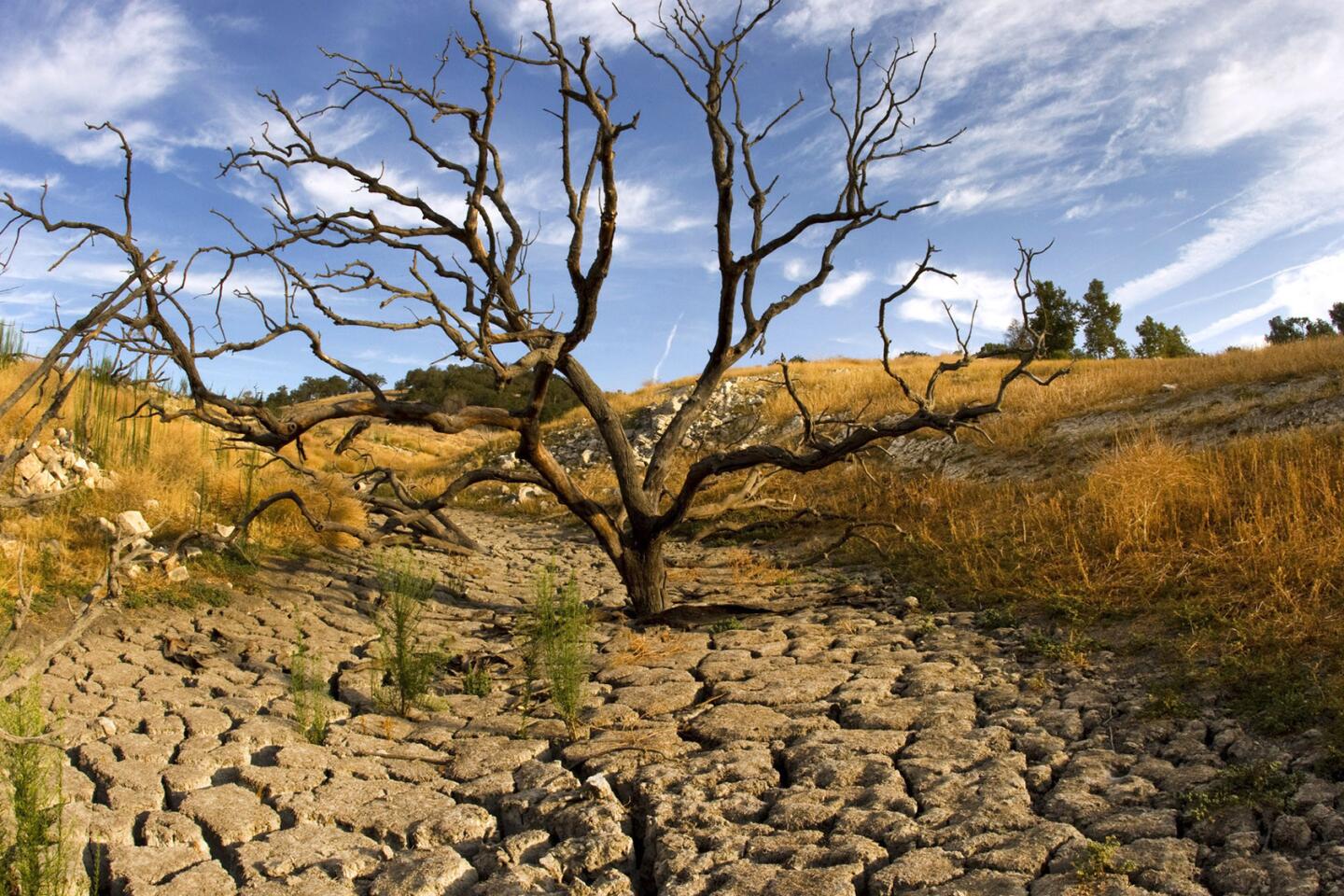
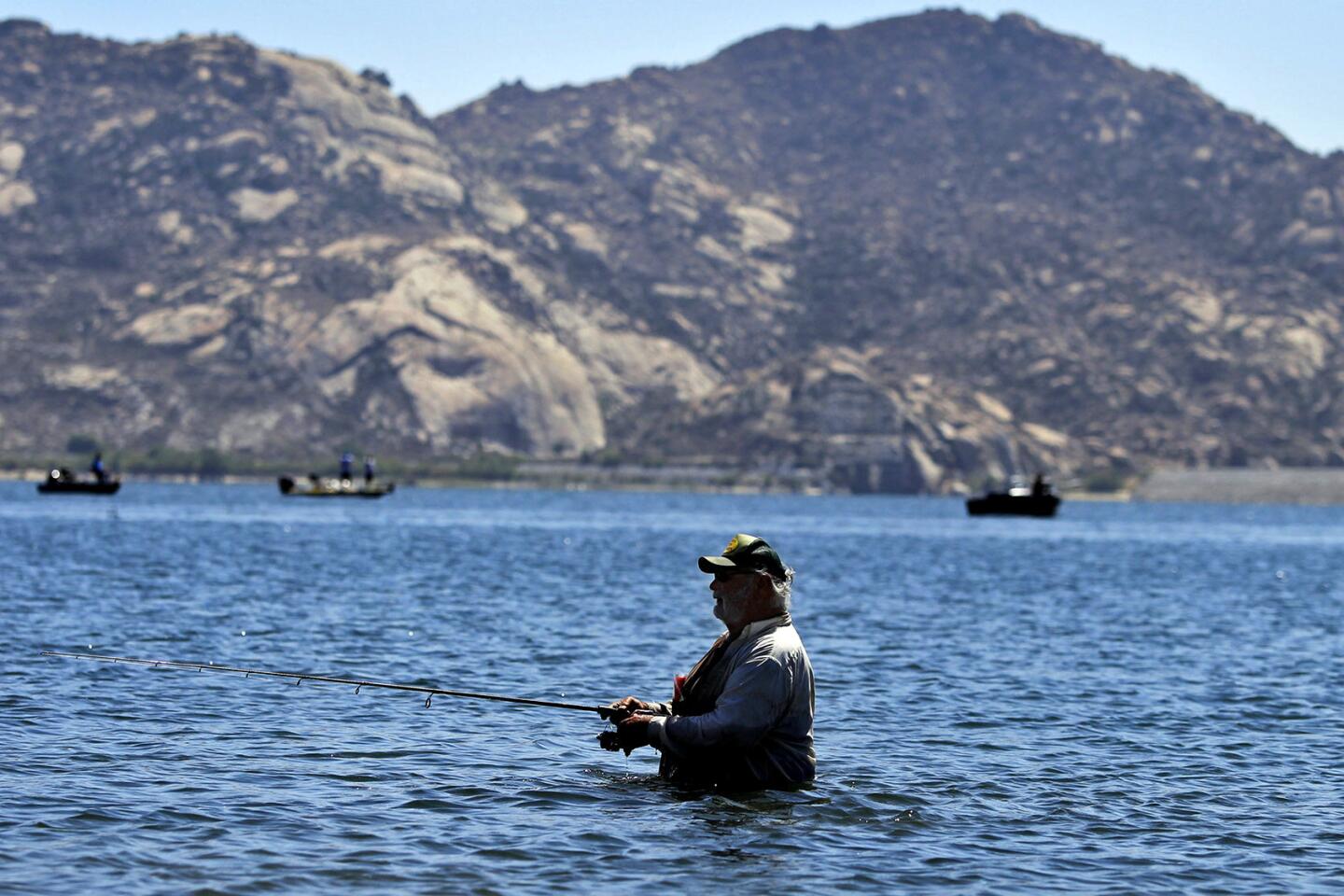
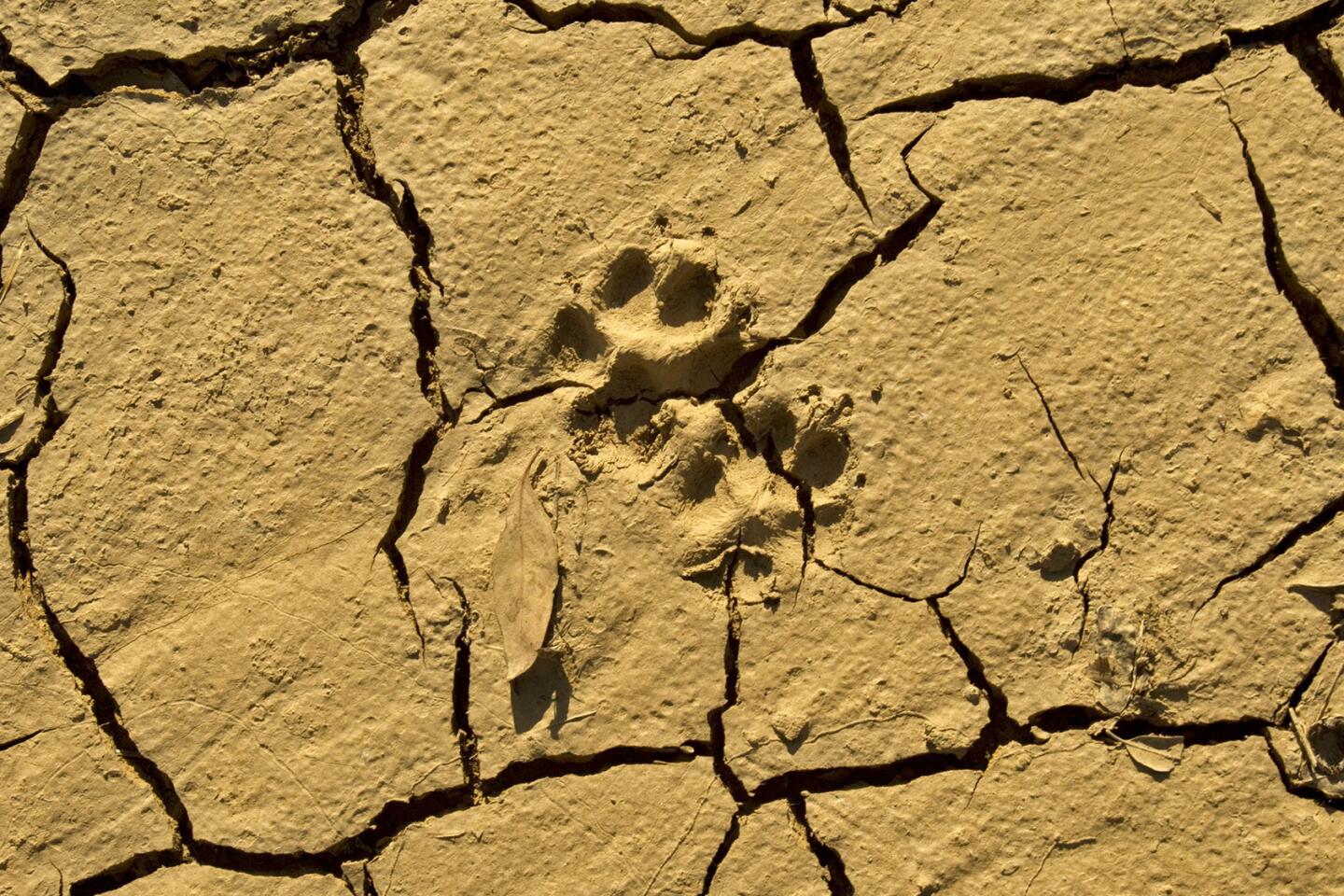
An animal’s footprint is molded into dry, cracked earth in a dry riverbed near a Castaic Lake bridge. Extremely low levels of water at sunrise at Castaic Lake and reveal the effects of the prolonged drought March 8, 2014.
(Allen J. Schaben / Los Angeles Times)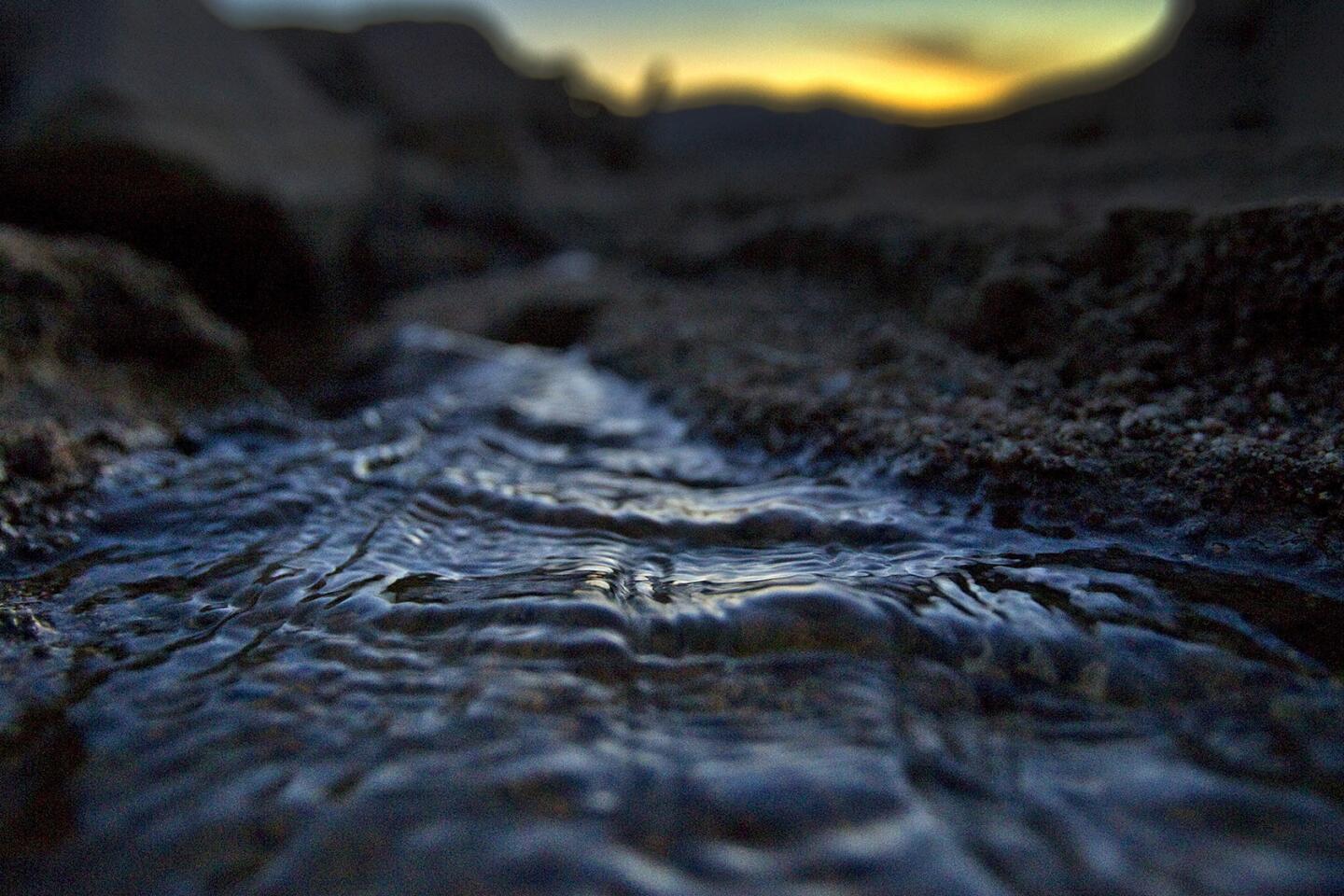
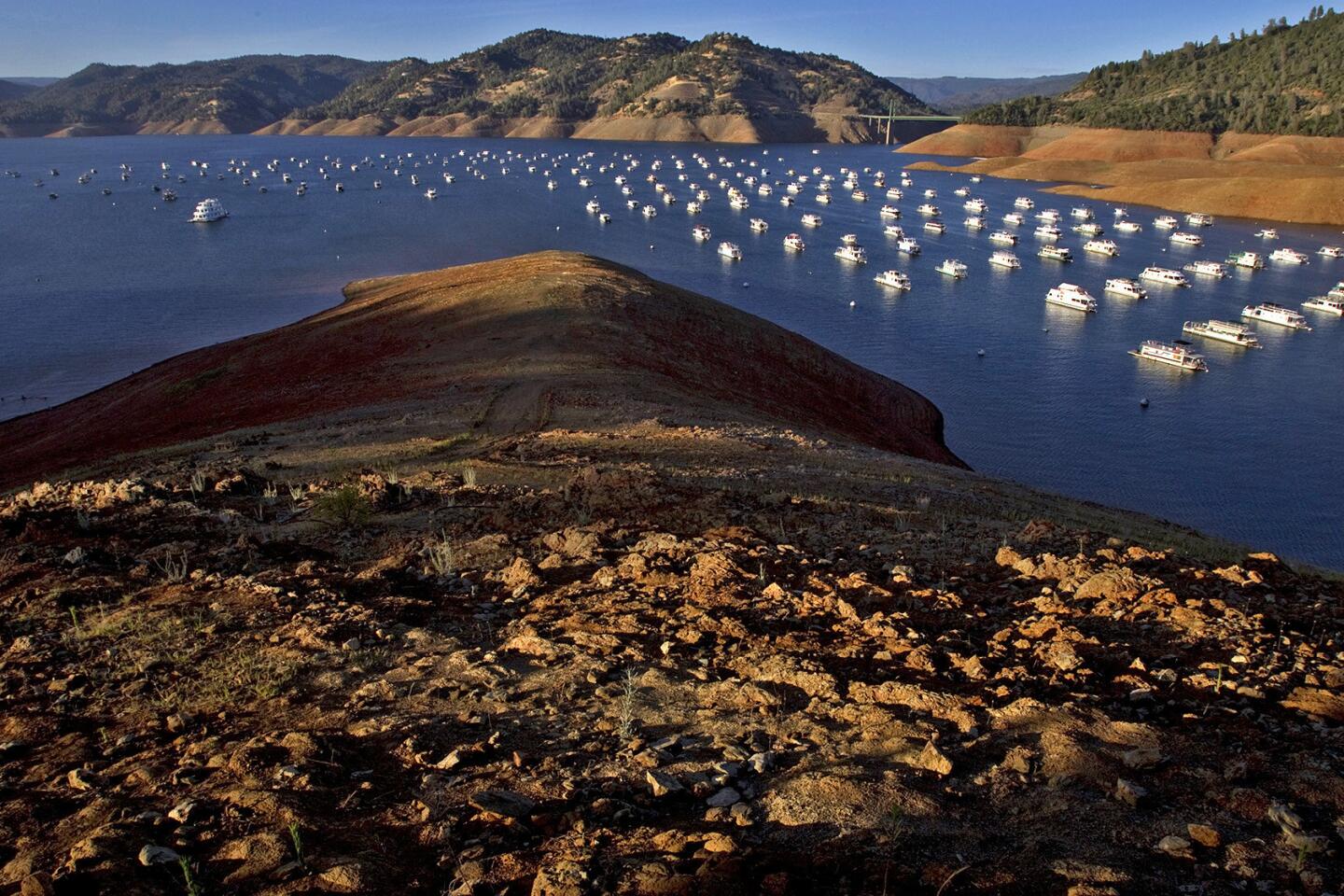
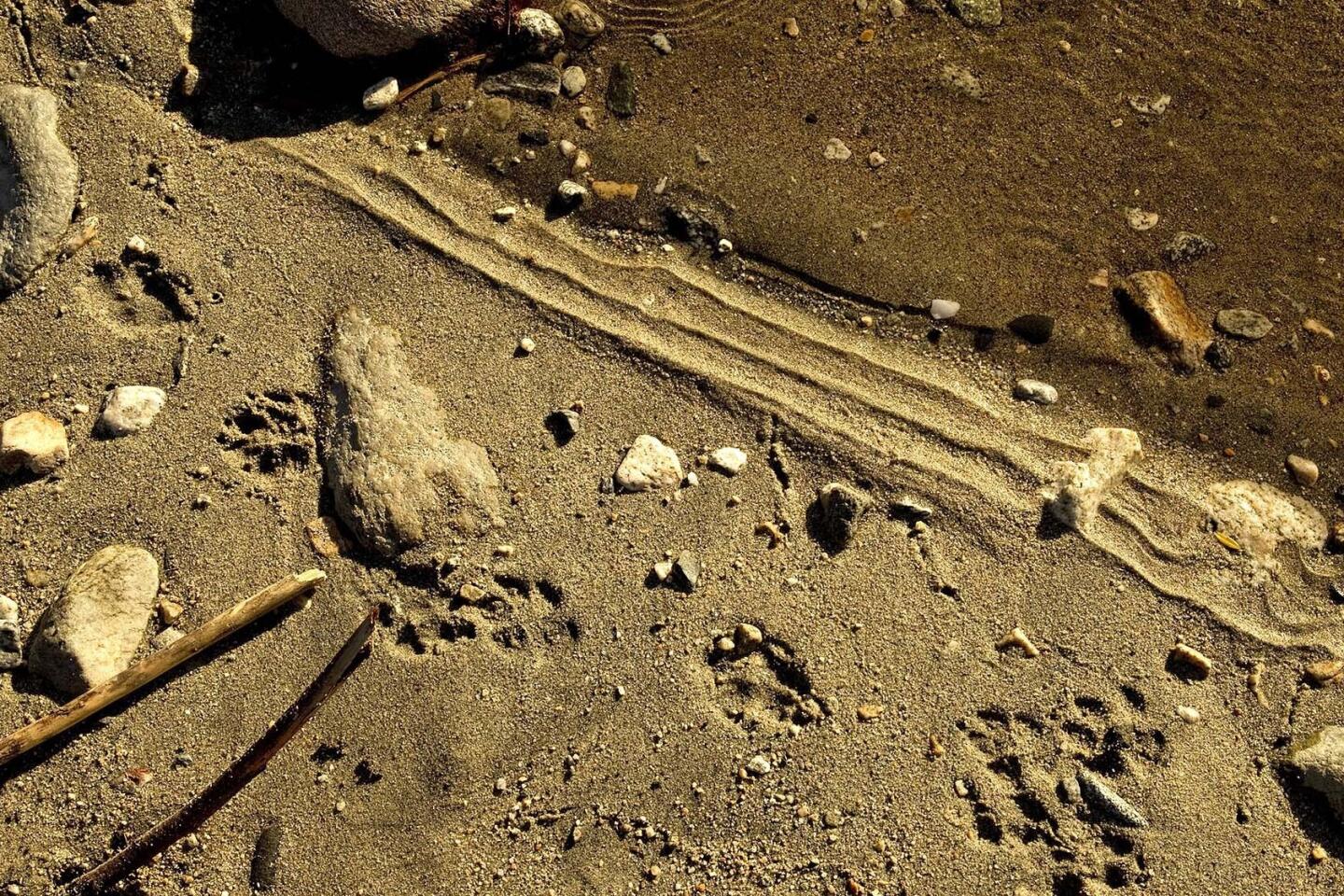
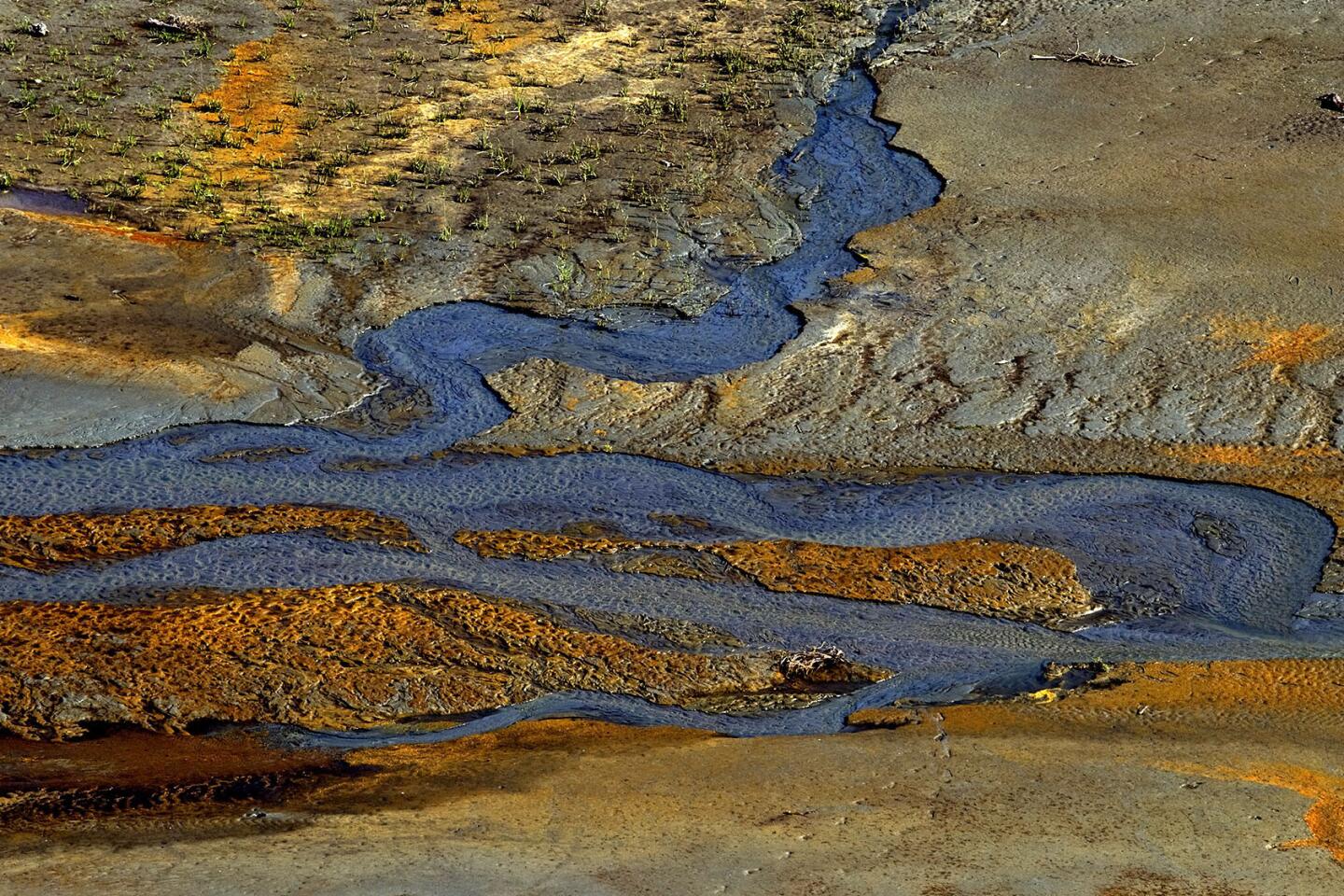
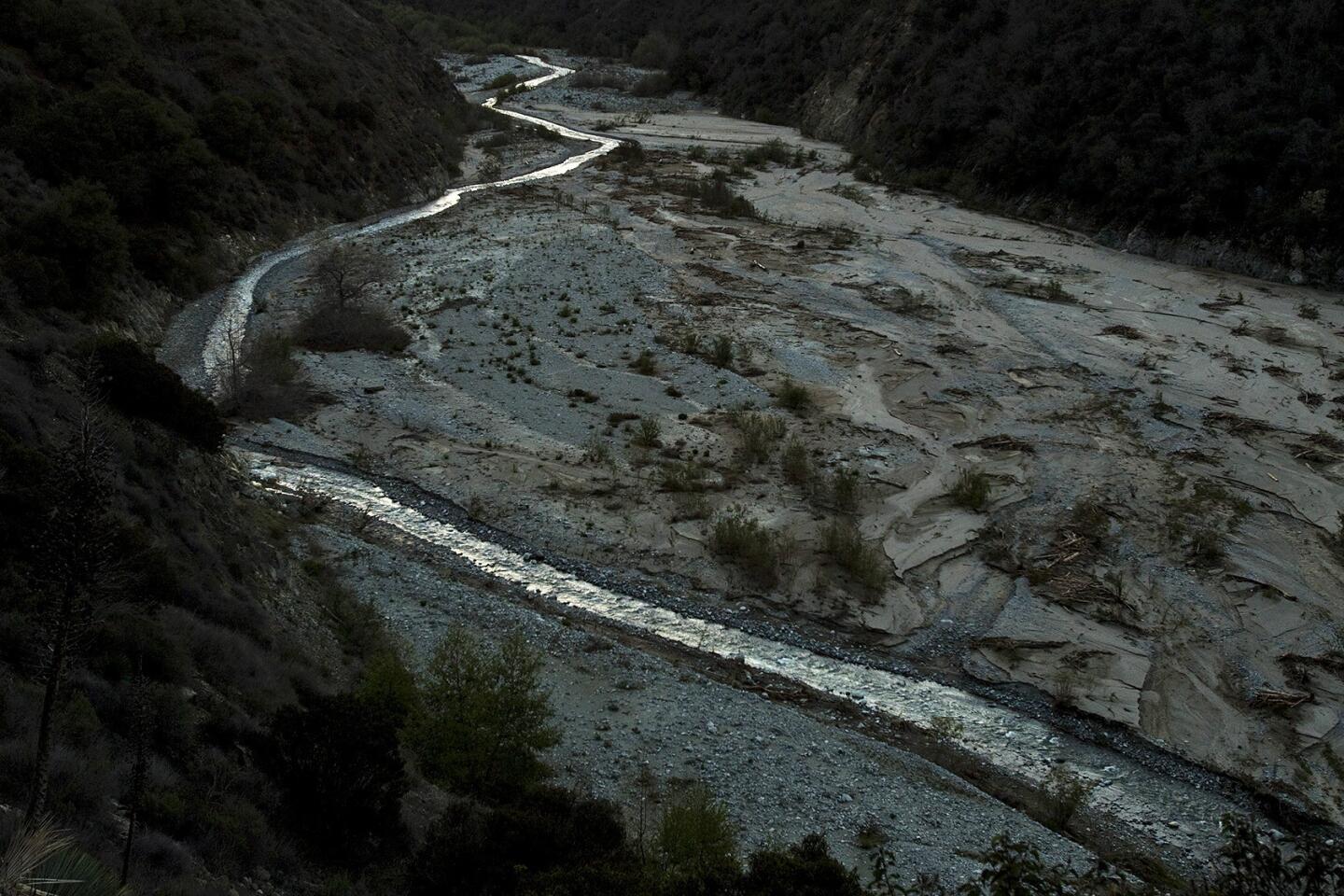
A pre-dawn glow illuminates a narrow, shallow meandering stream flowing in San Gabriel River’s East Fork in the Angeles National Forest, which reveal the effects of the prolonged drought March 12, 2014.
(Allen J. Schaben / Los Angeles Times)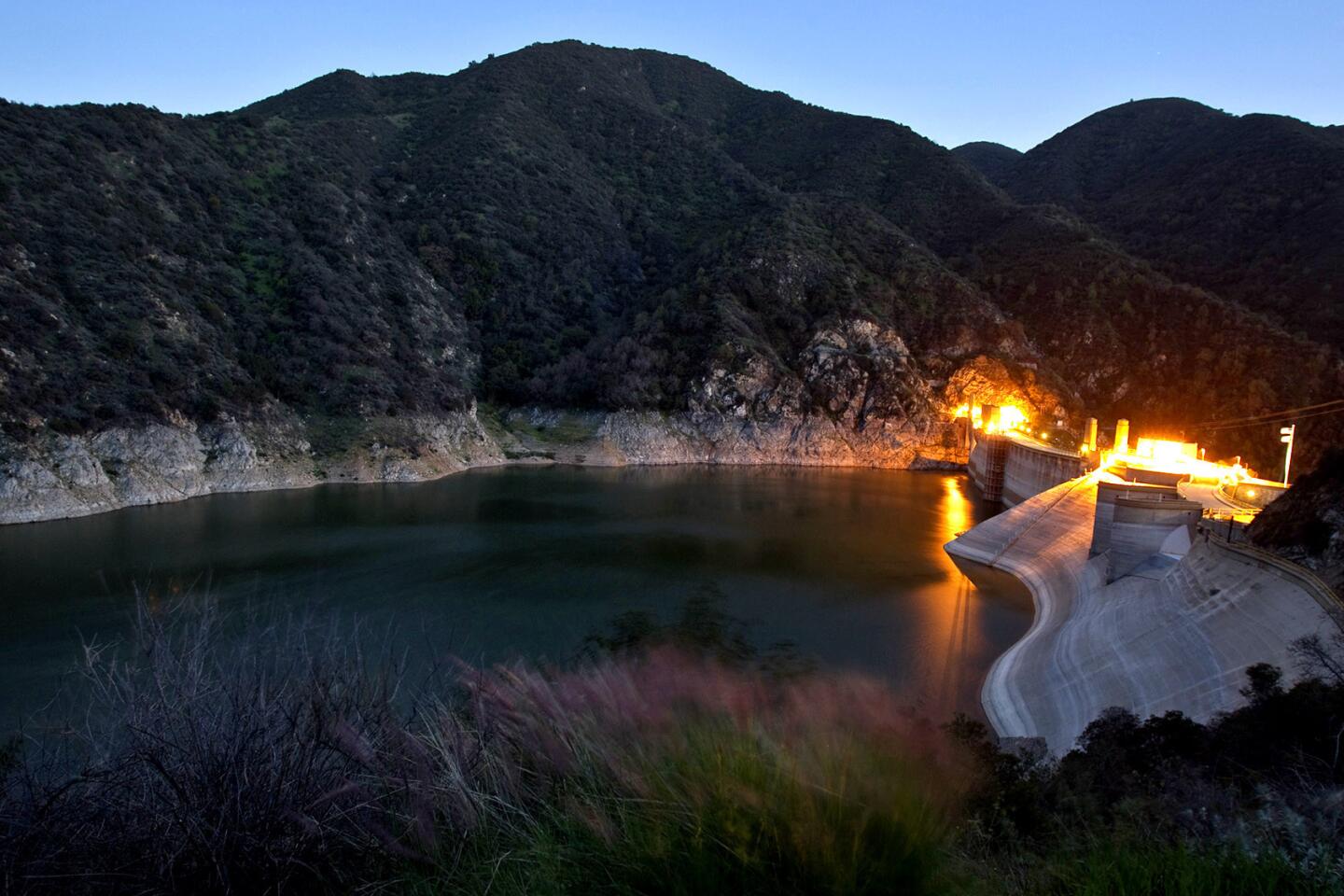
A white rocky ring reveals low levels of water in the Morris Dam, just north of Azusa in the Angeles National Forest, reflecting the effects of the prolonged drought March 12, 2014.
(Allen J. Schaben / Los Angeles Times)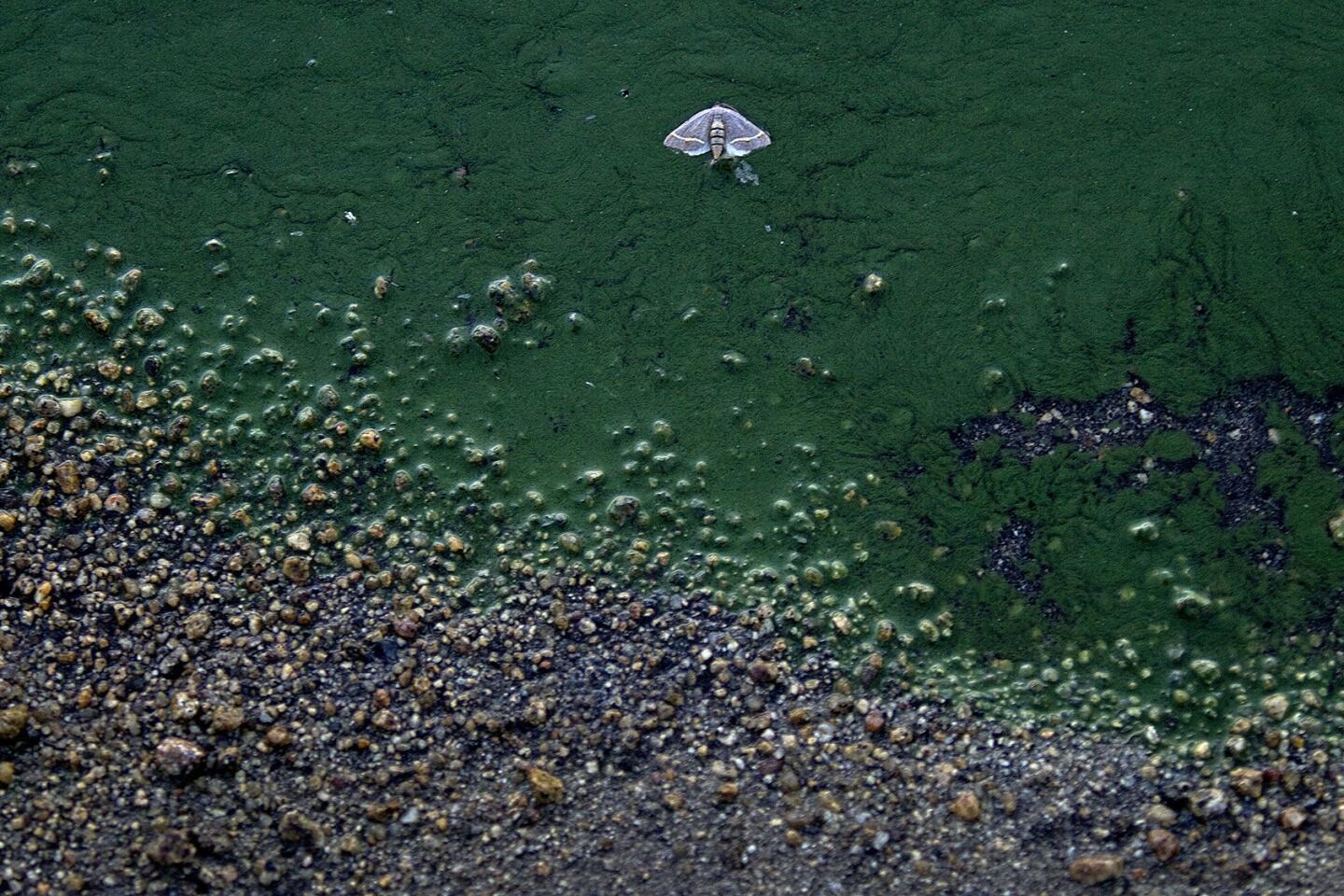
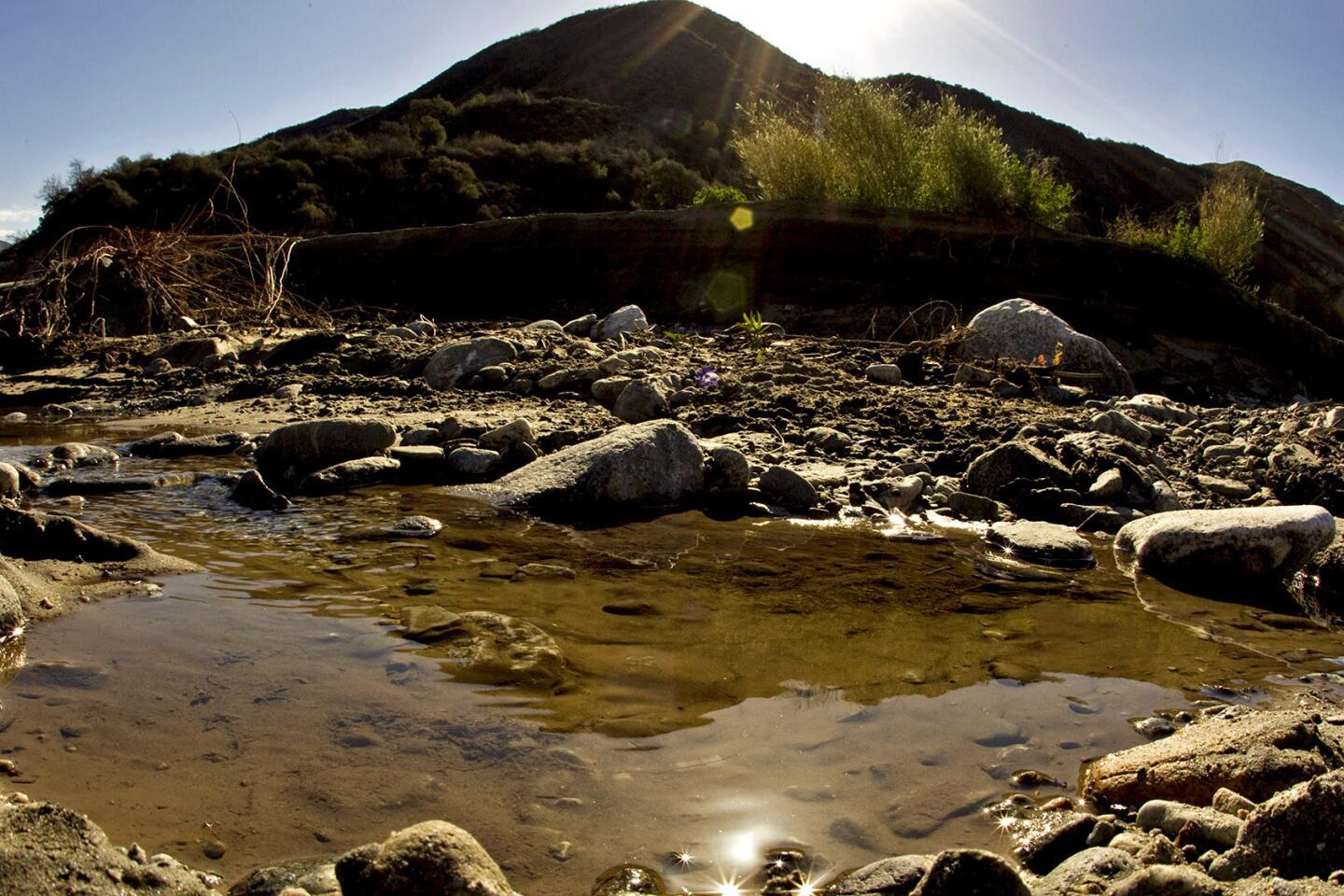
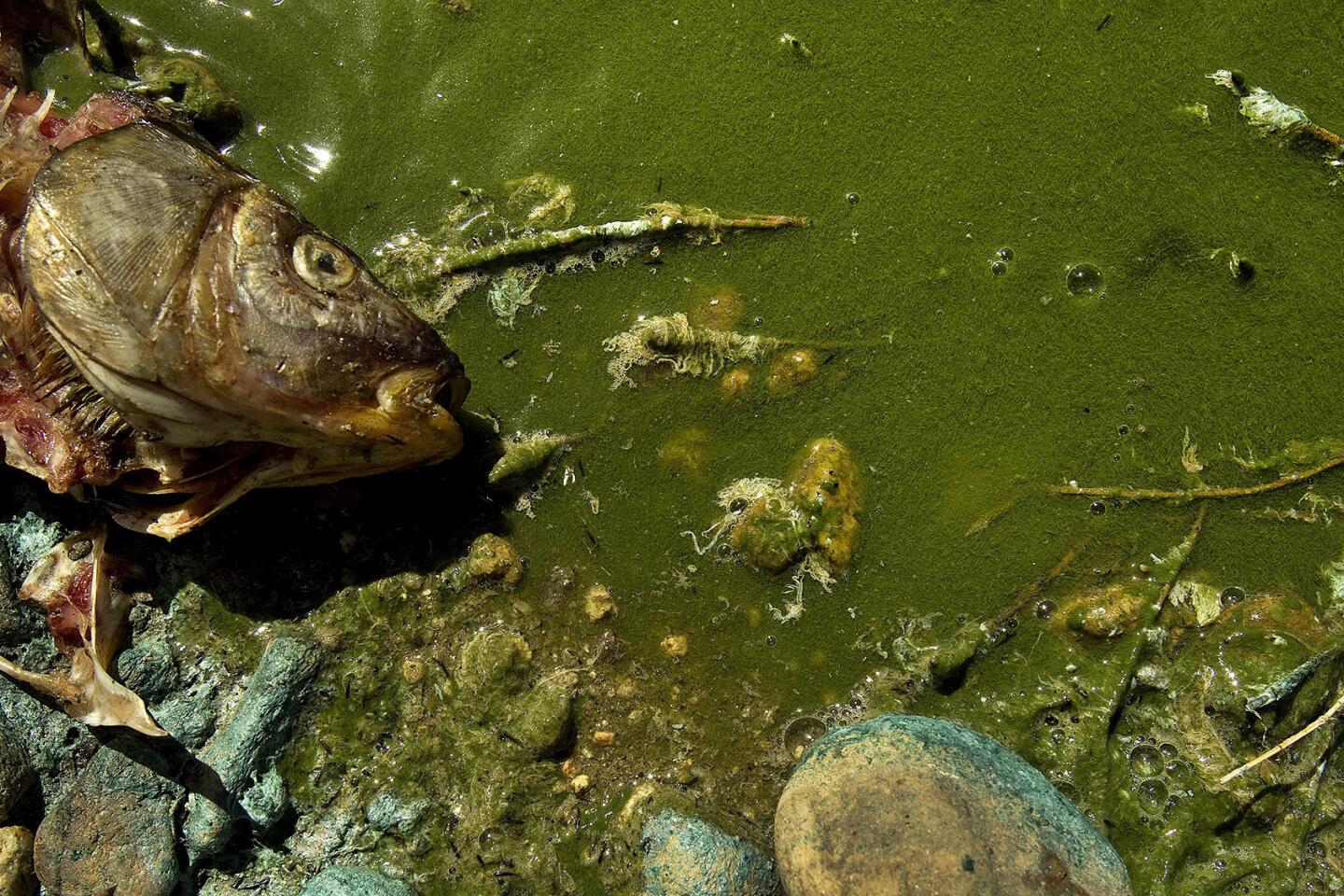
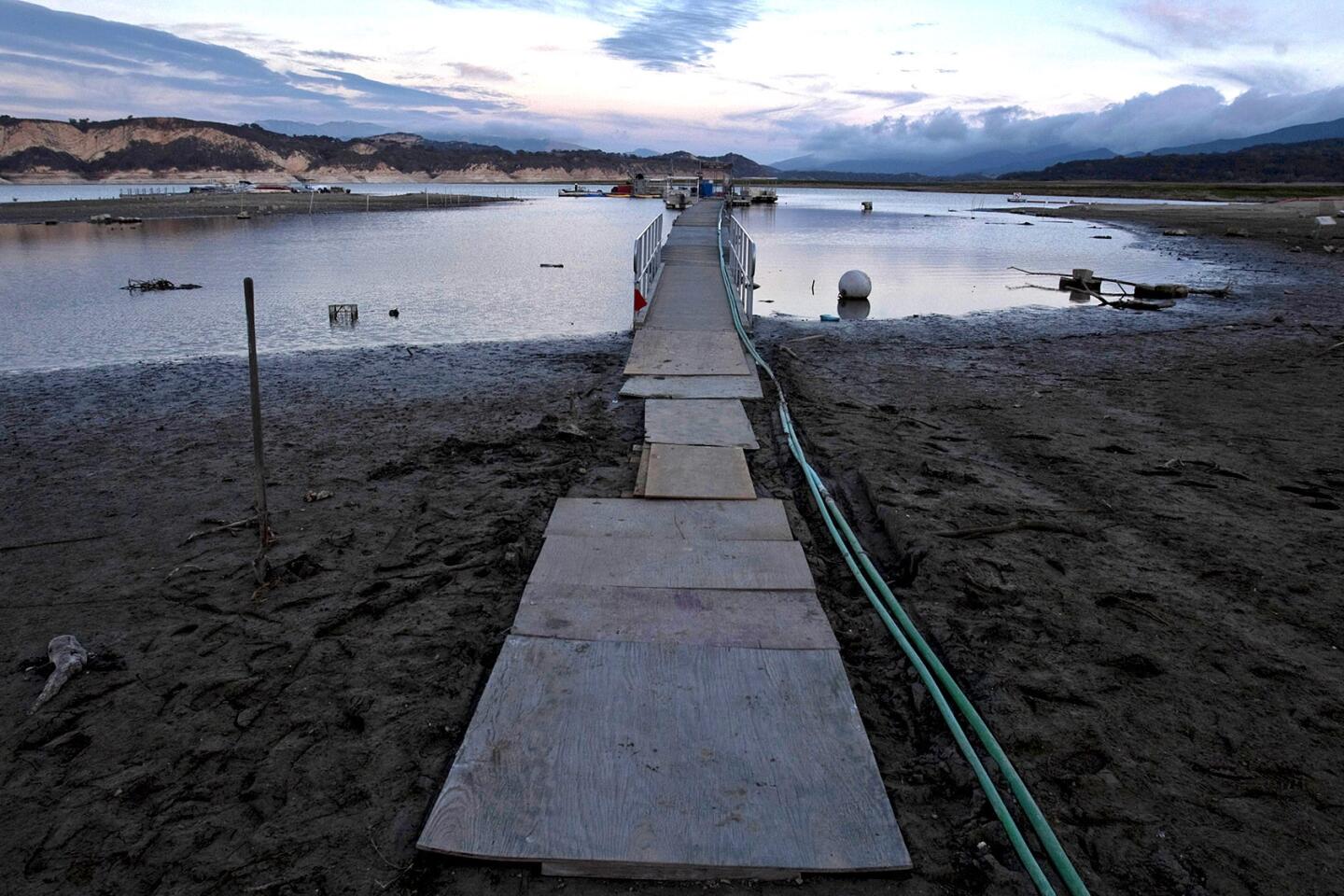
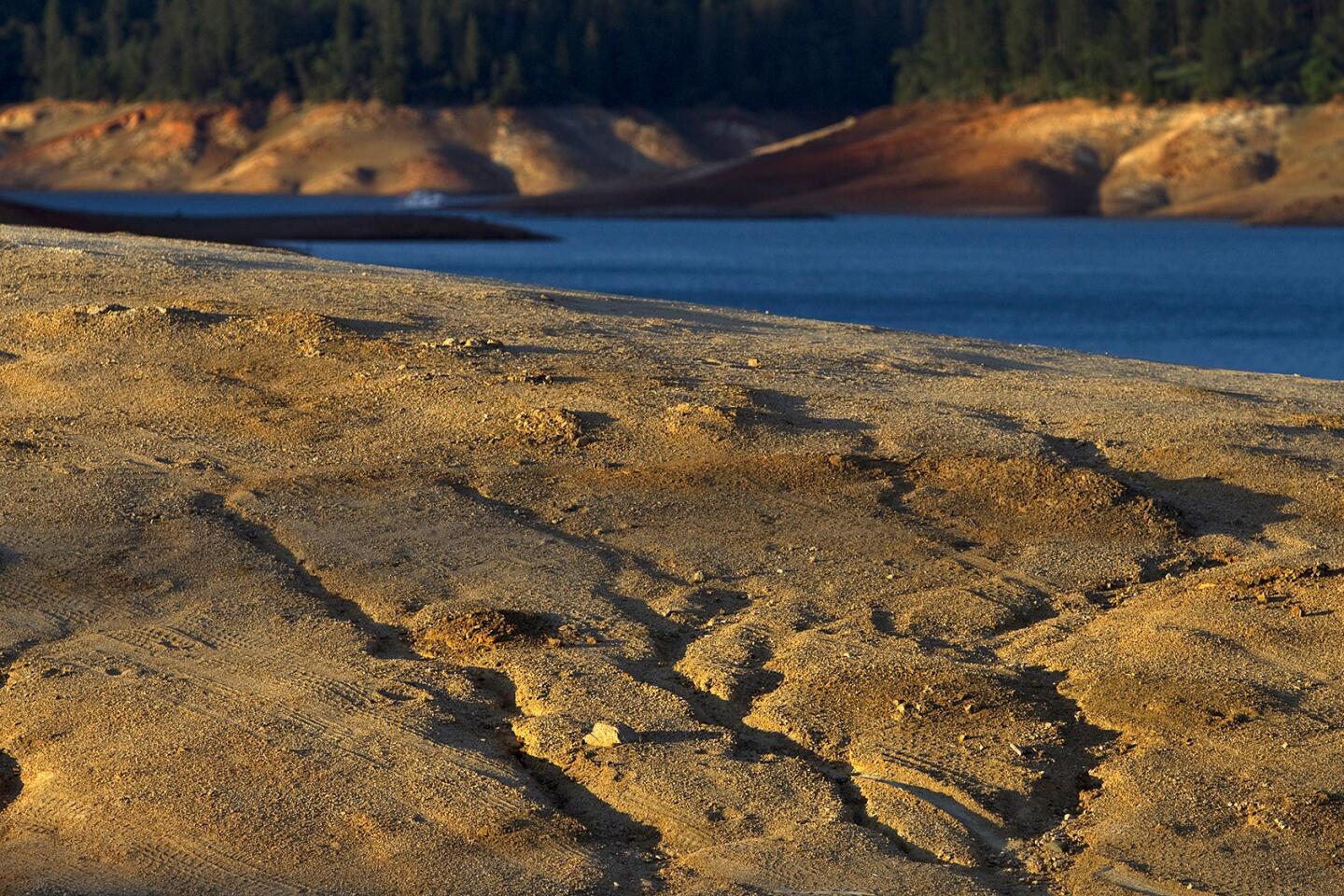
Dry ruts in a island reveal where the water level used to be at Lake Shasta due to serious drought conditions. Lake Shasta is at 31% of capacity due to the ongoing drought and is likely to get worse.
(Allen J. Schaben / Los Angeles Times)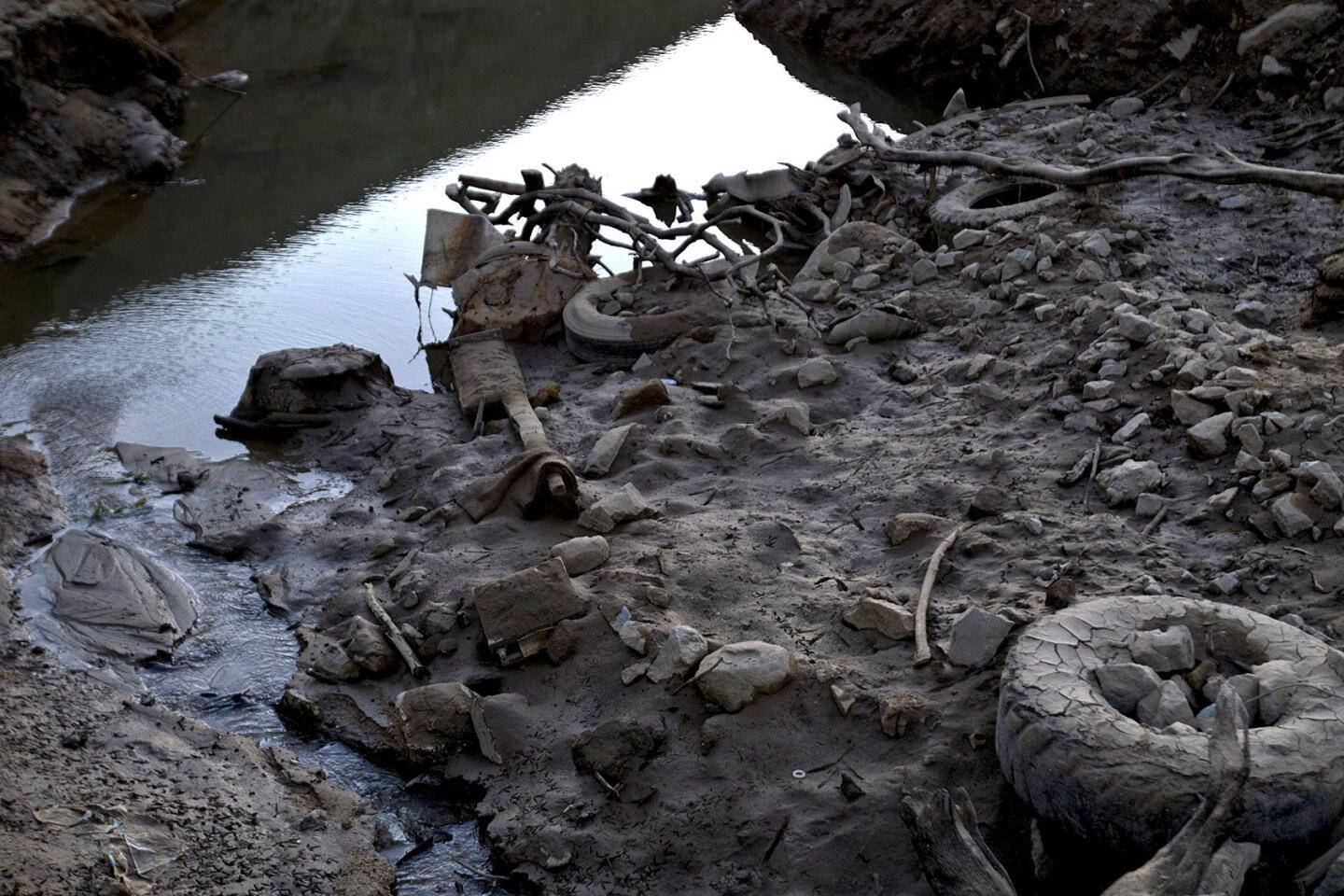
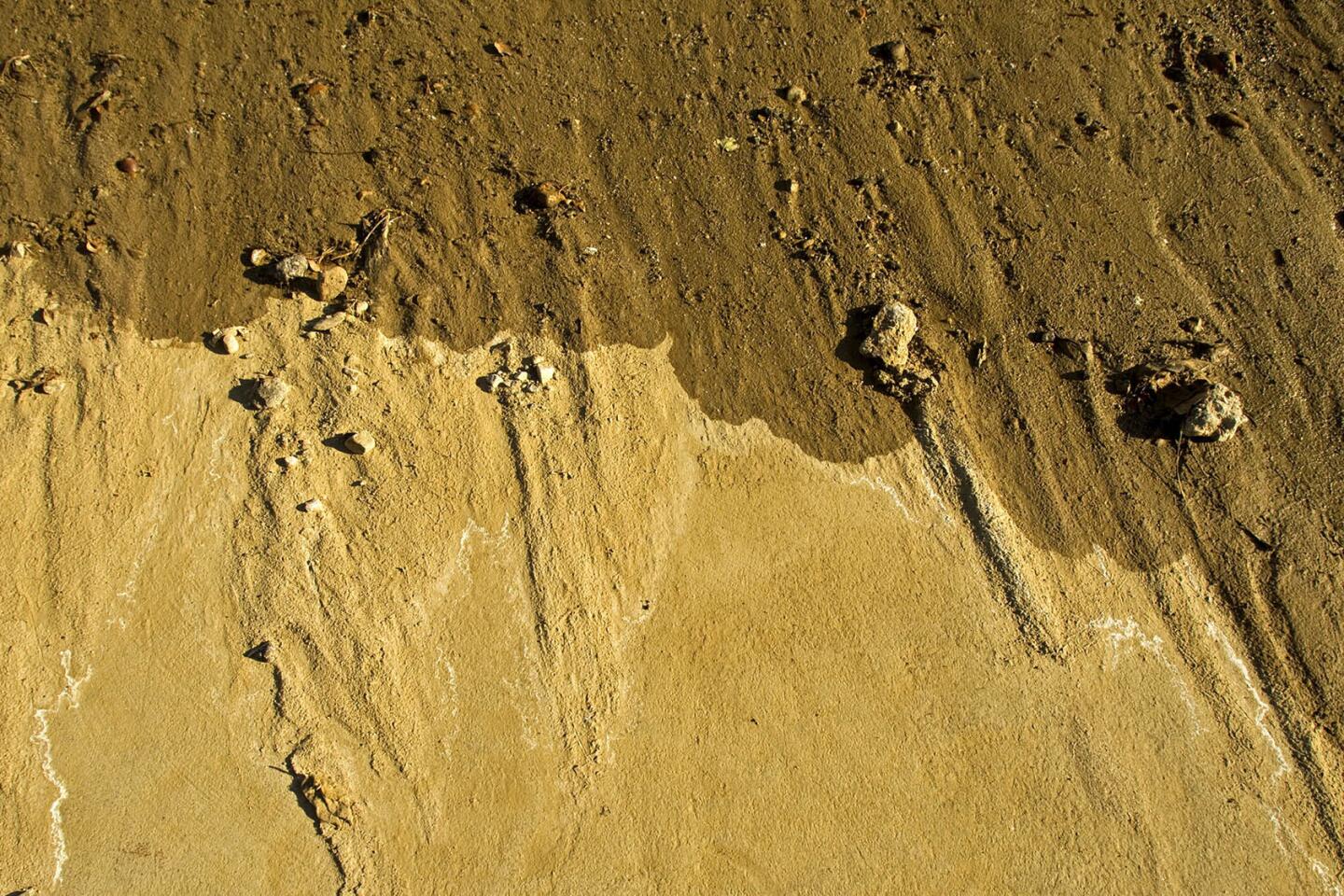
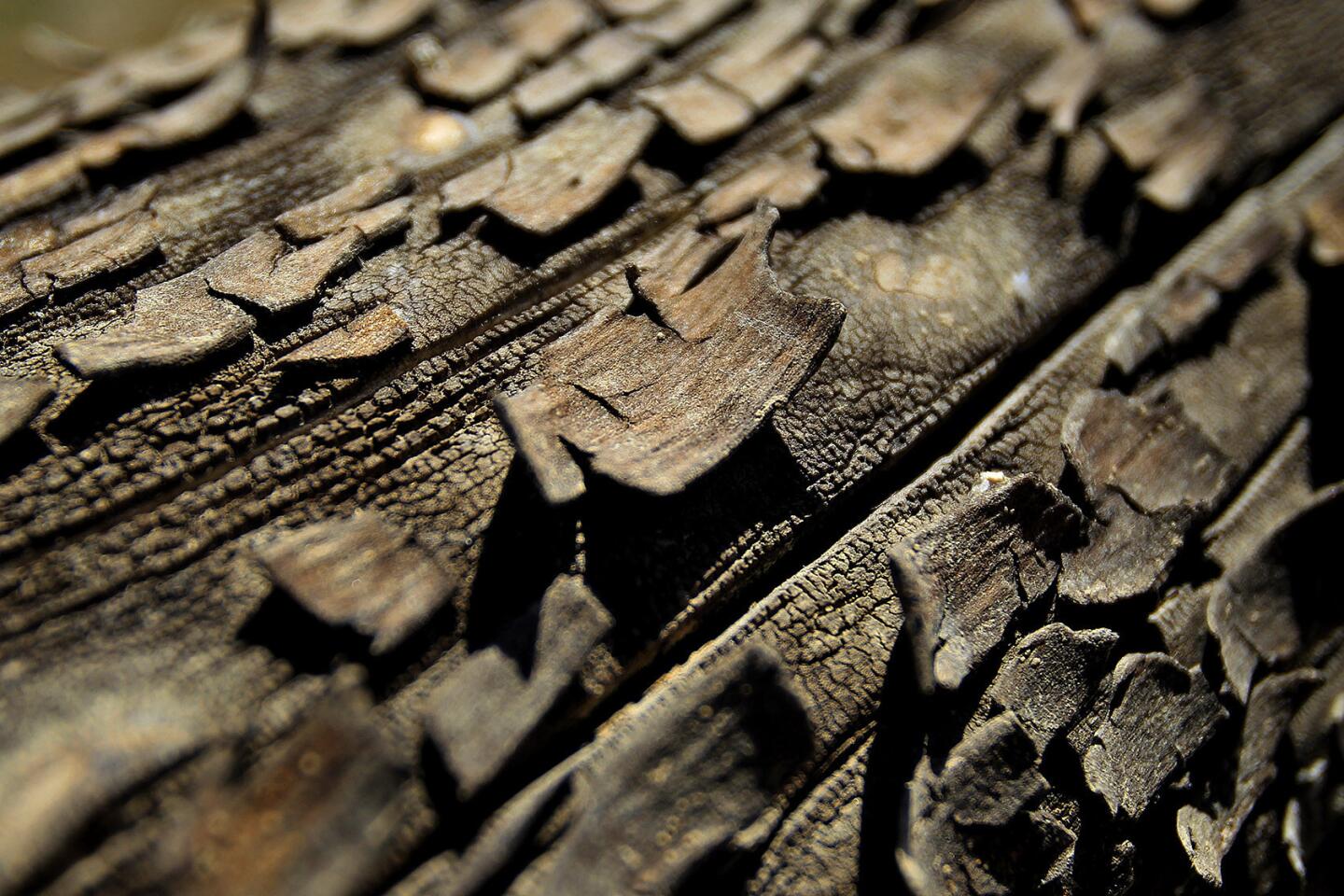
Severe drought conditions are evident as dried bark peels in the hot sun where water levels are down 160 feet from the high water mark at Lake Oroville June 21, 2014. Officials say Lake Oroville is at 43% capacity and likely to get worse, but is not as bad as the drought of 1976-77.
(Allen J. Schaben / Los Angeles Times)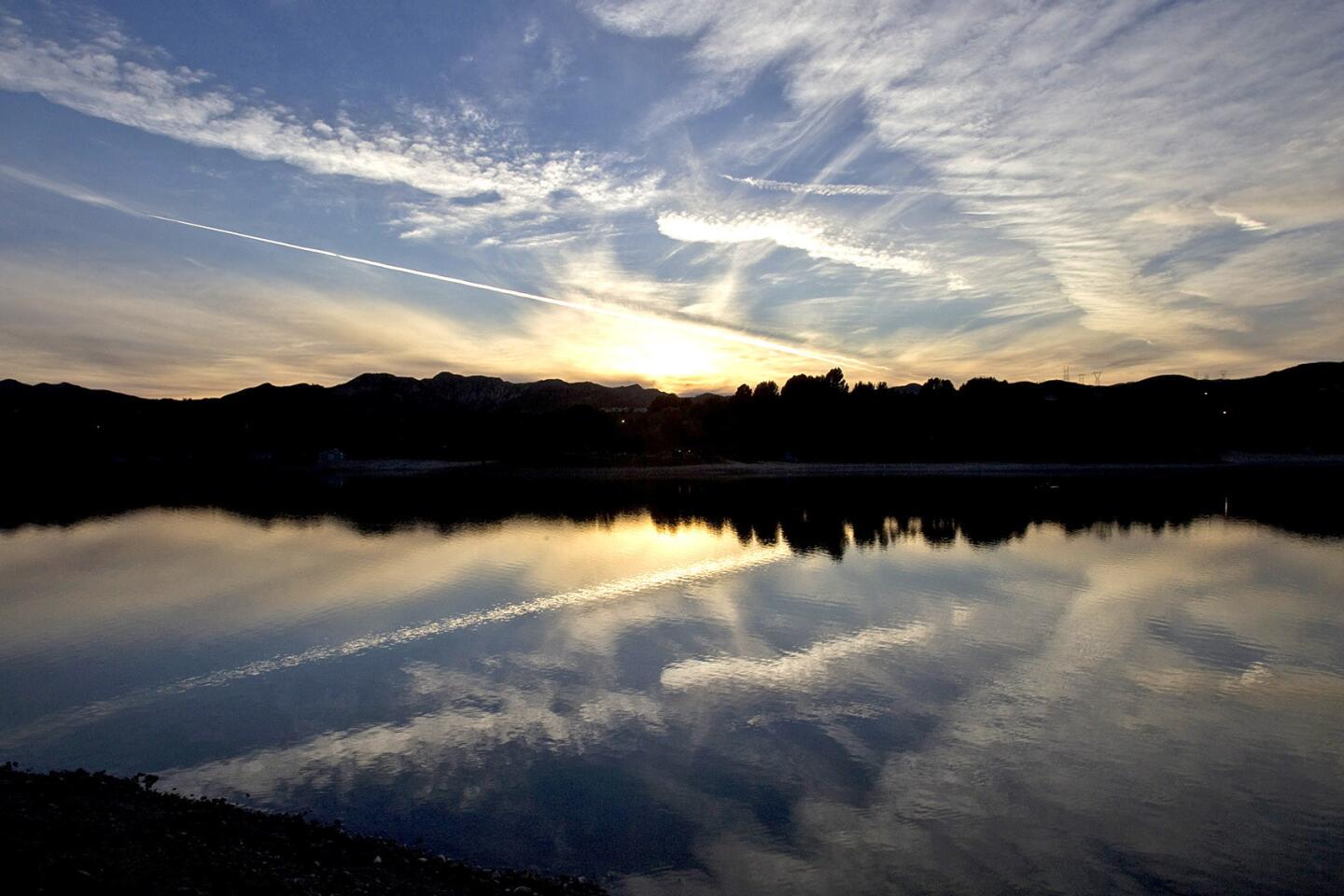
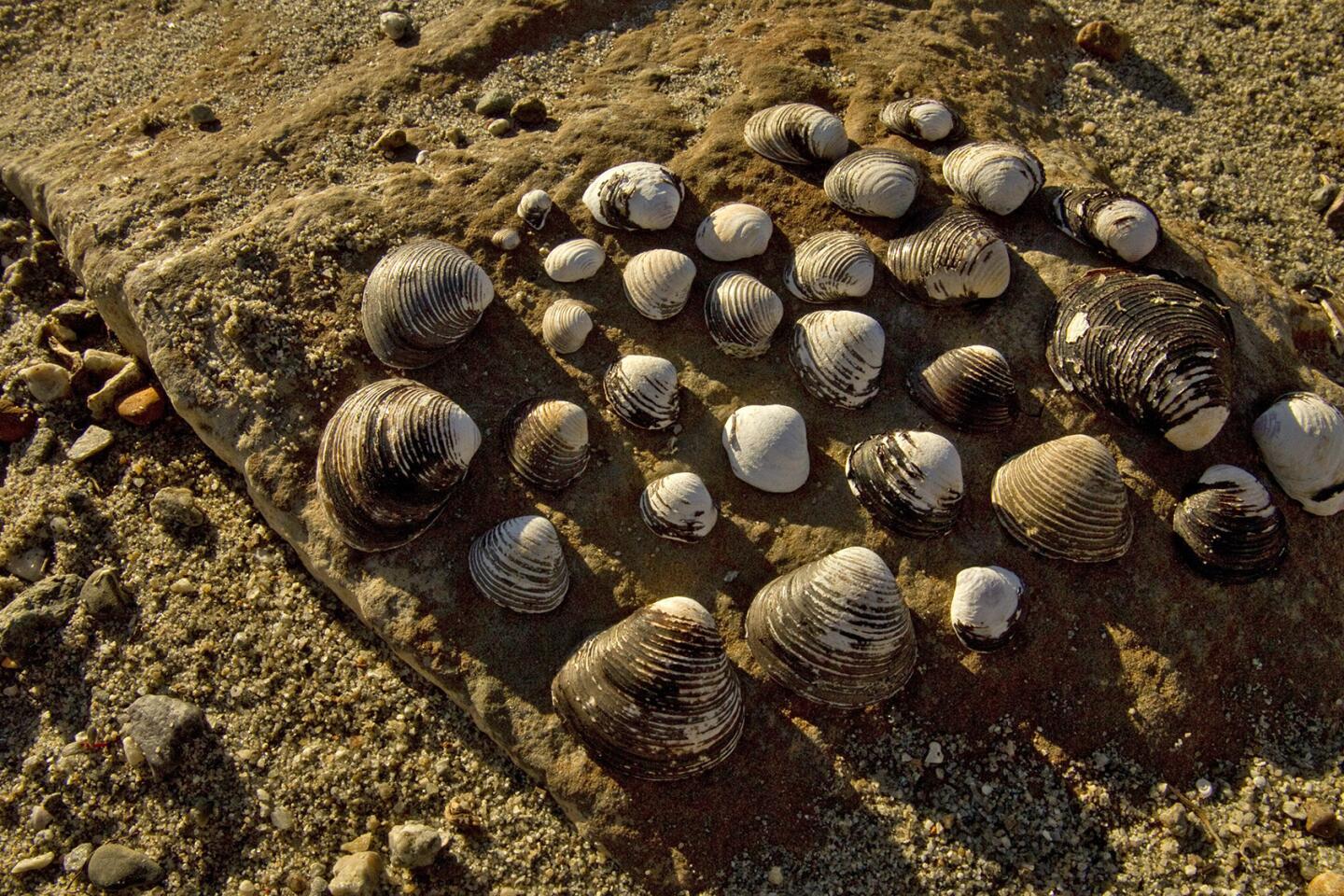
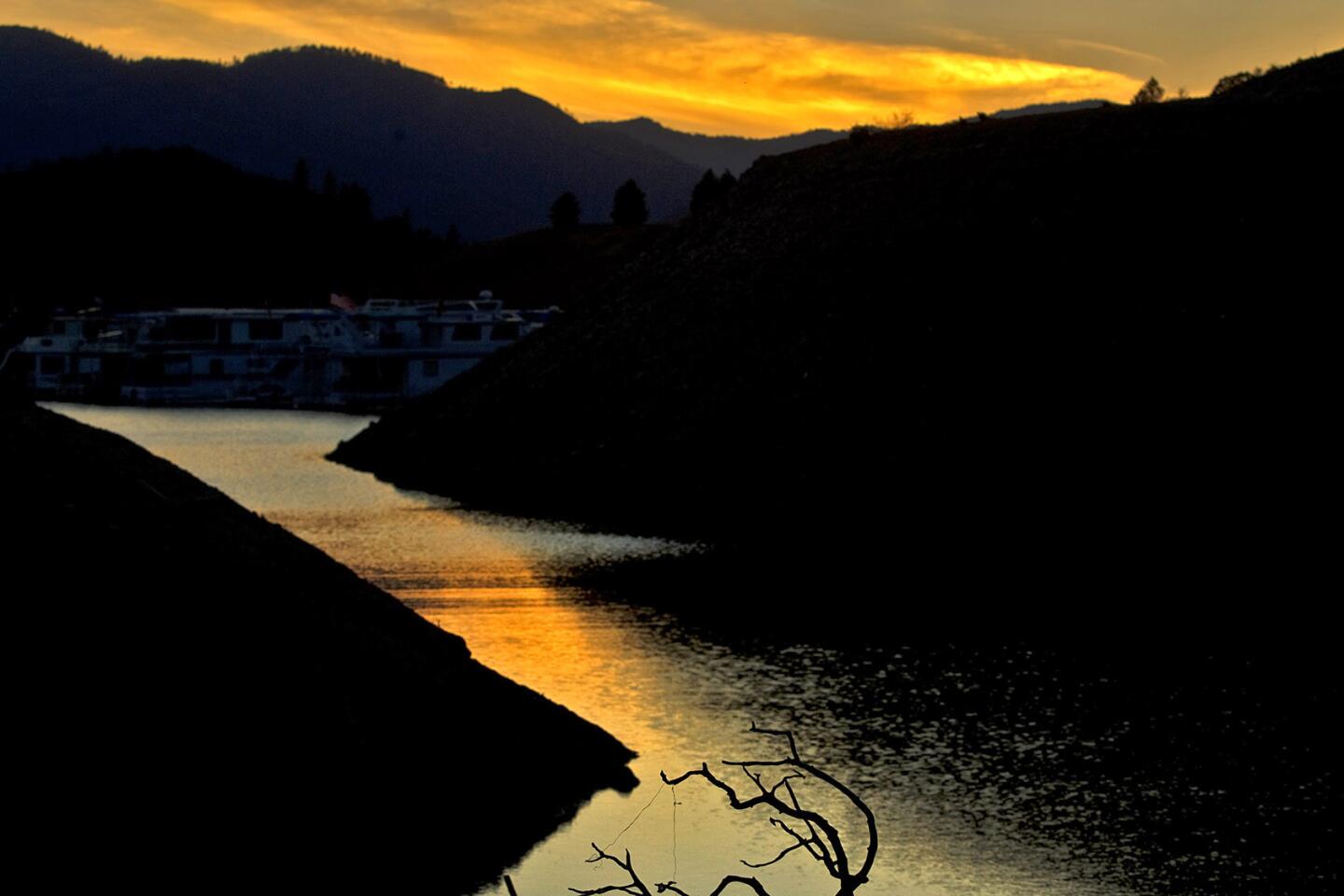
Fallen tree branches and a narrow body of water receding into Lake Shasta at dusk reveal signs of serious drought conditions June 22, 2014. Lake Shasta is at 37% of capacity due to the ongoing drought and is likely to get worse.
(Allen J. Schaben / Los Angeles Times)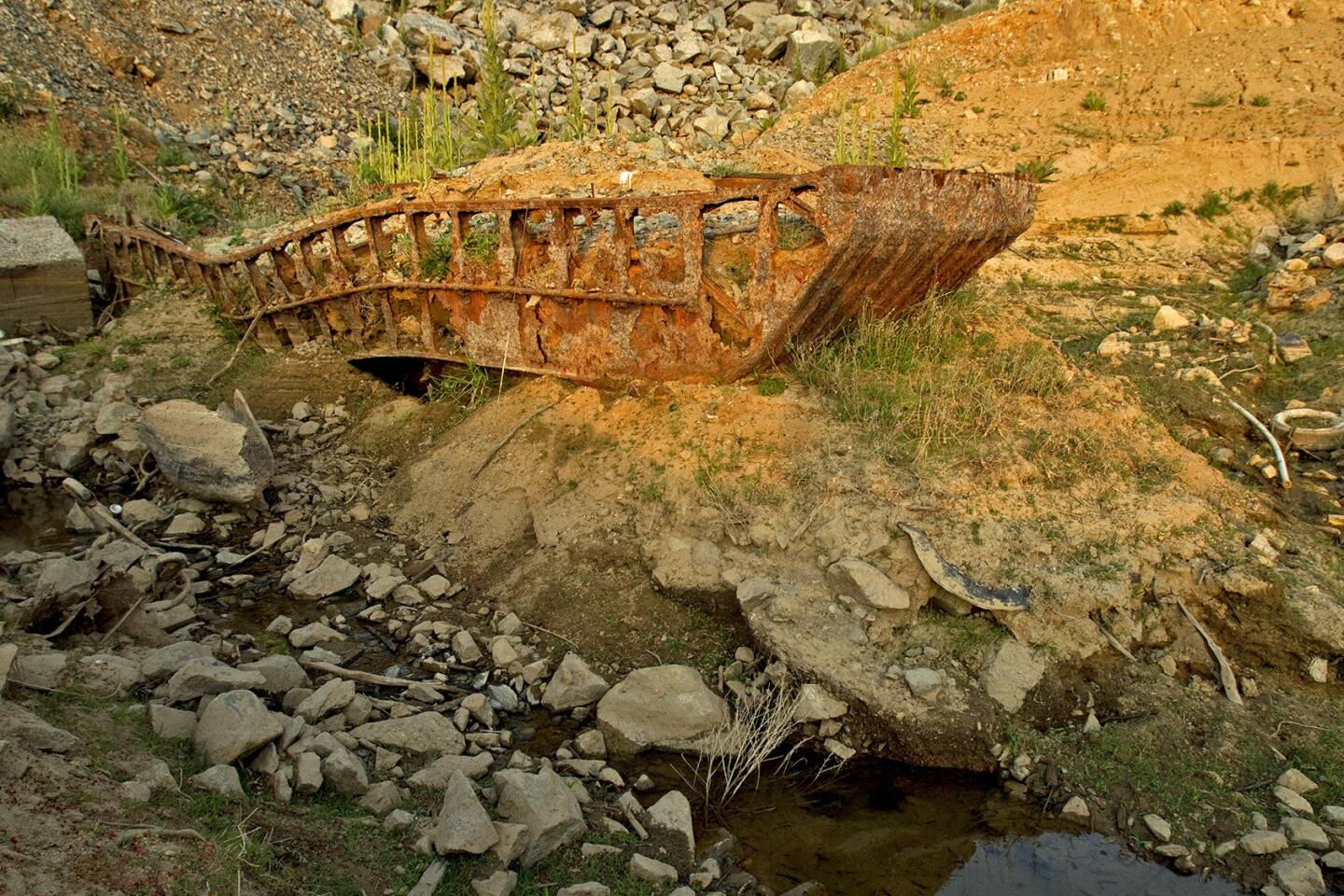
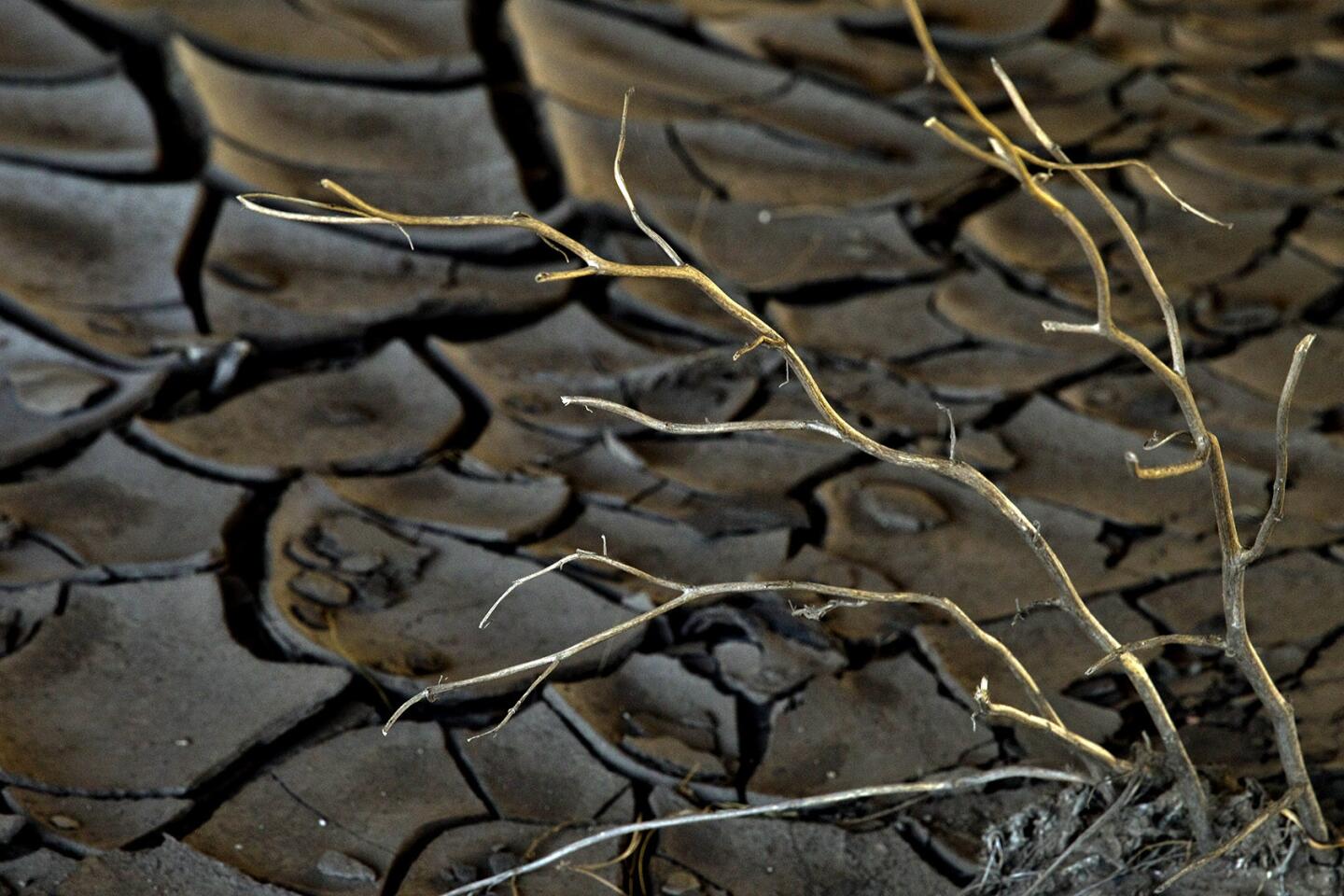
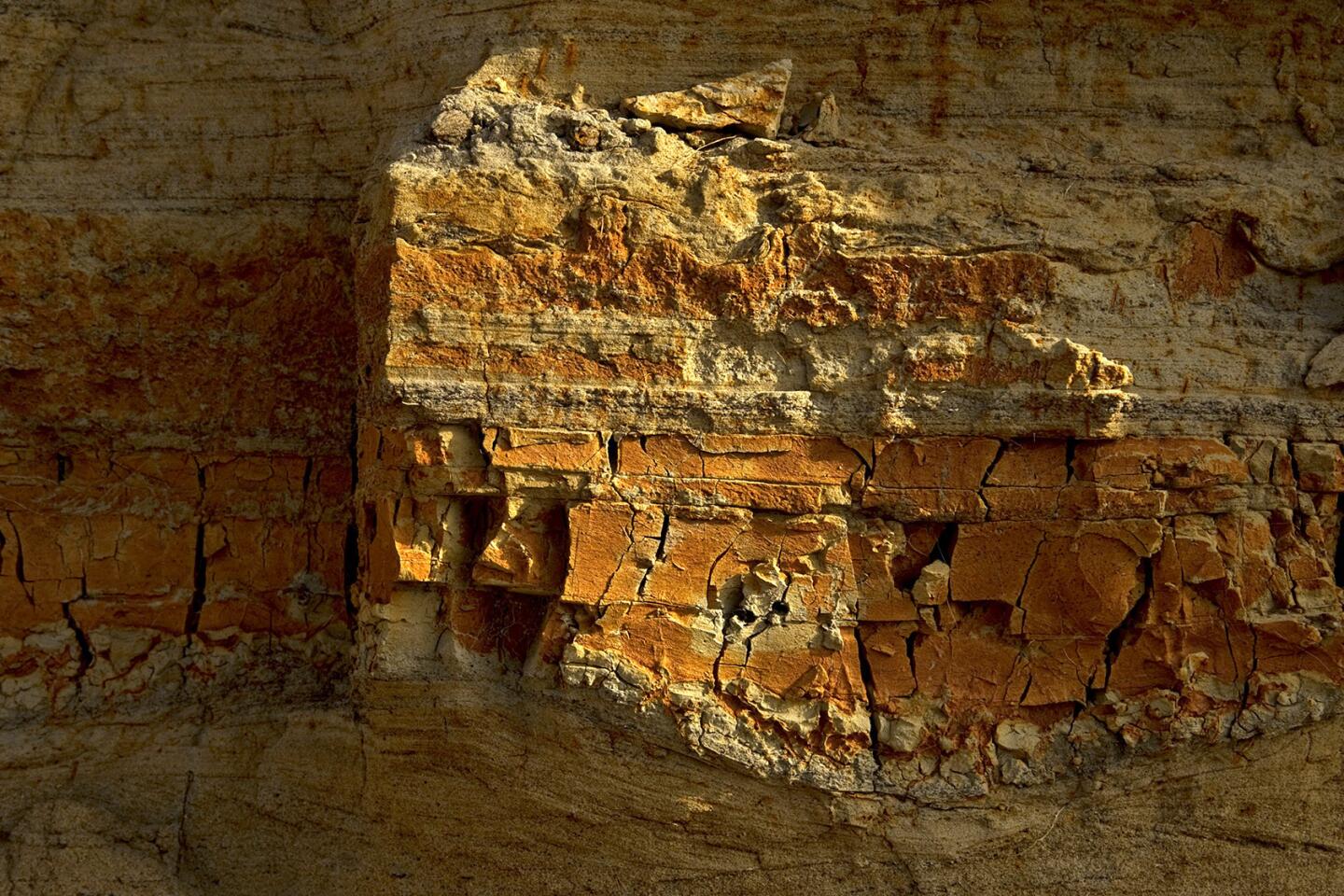
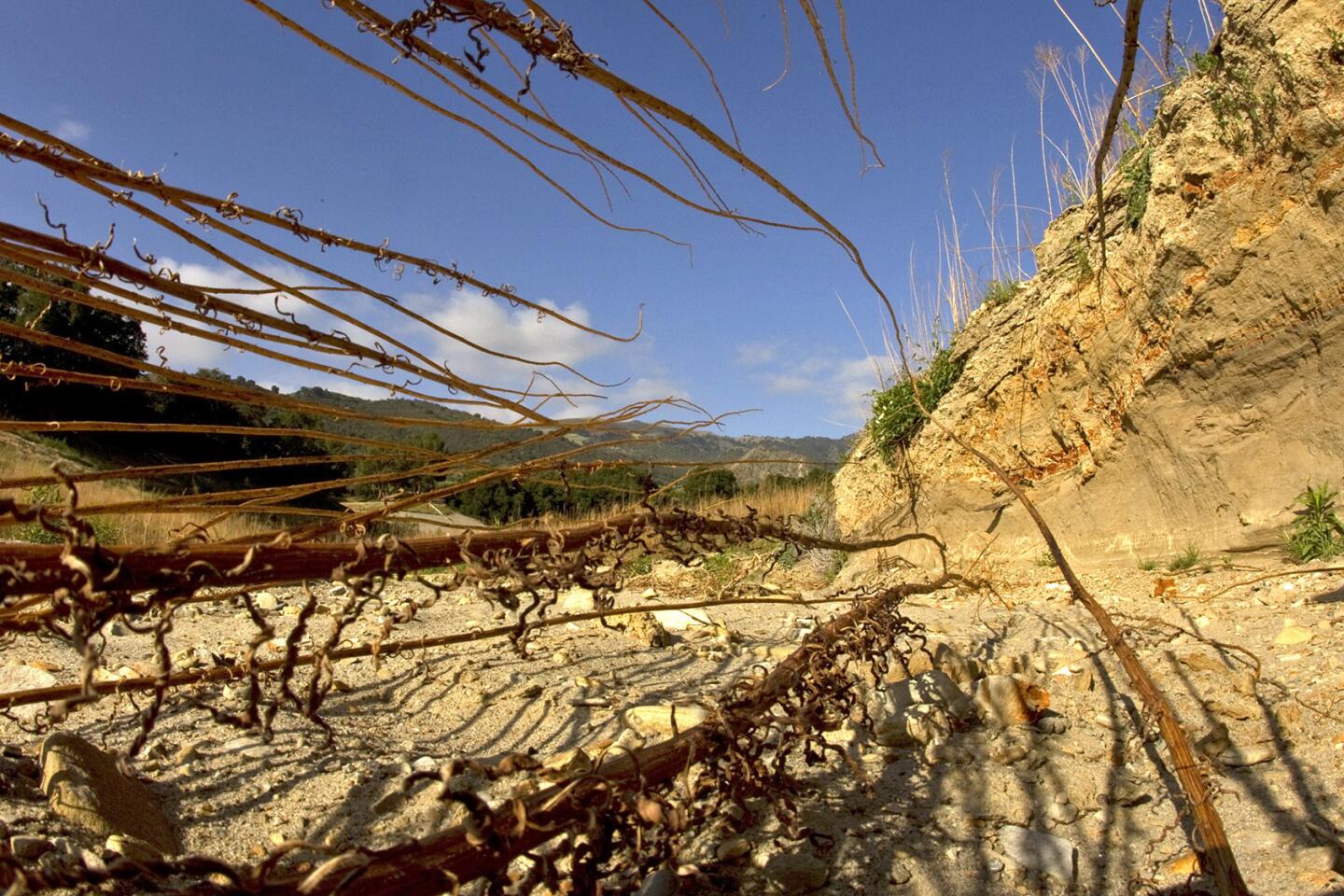
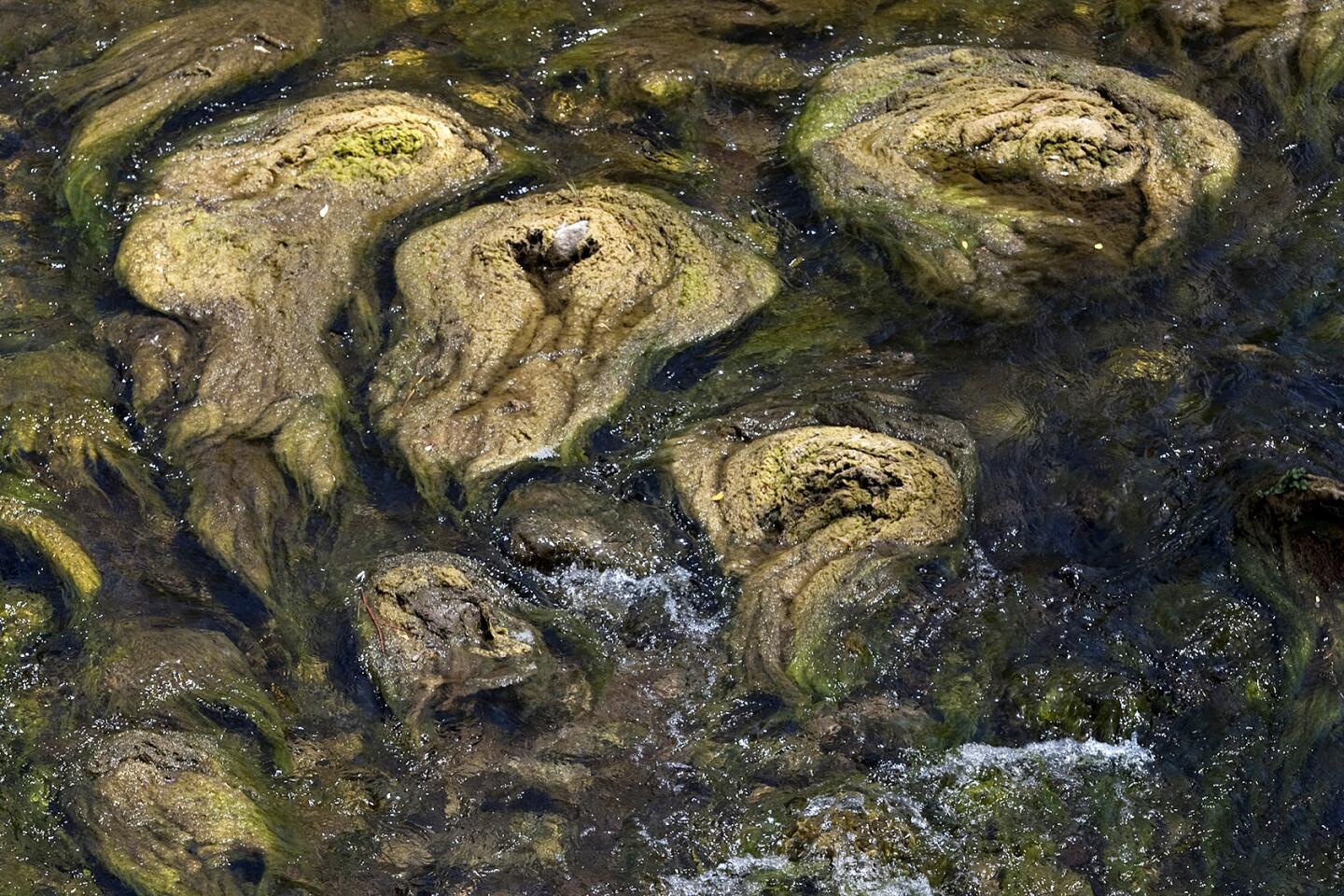
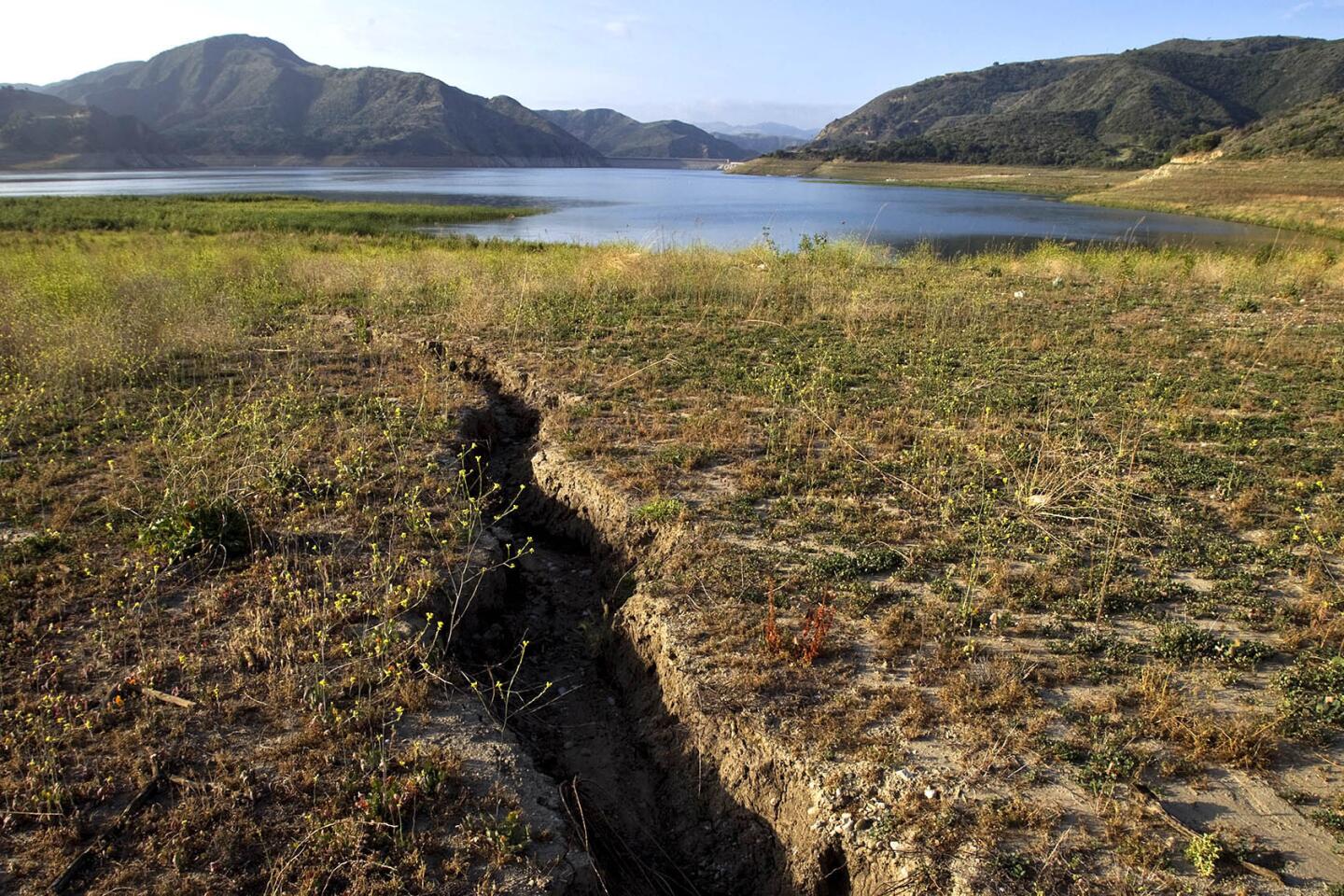
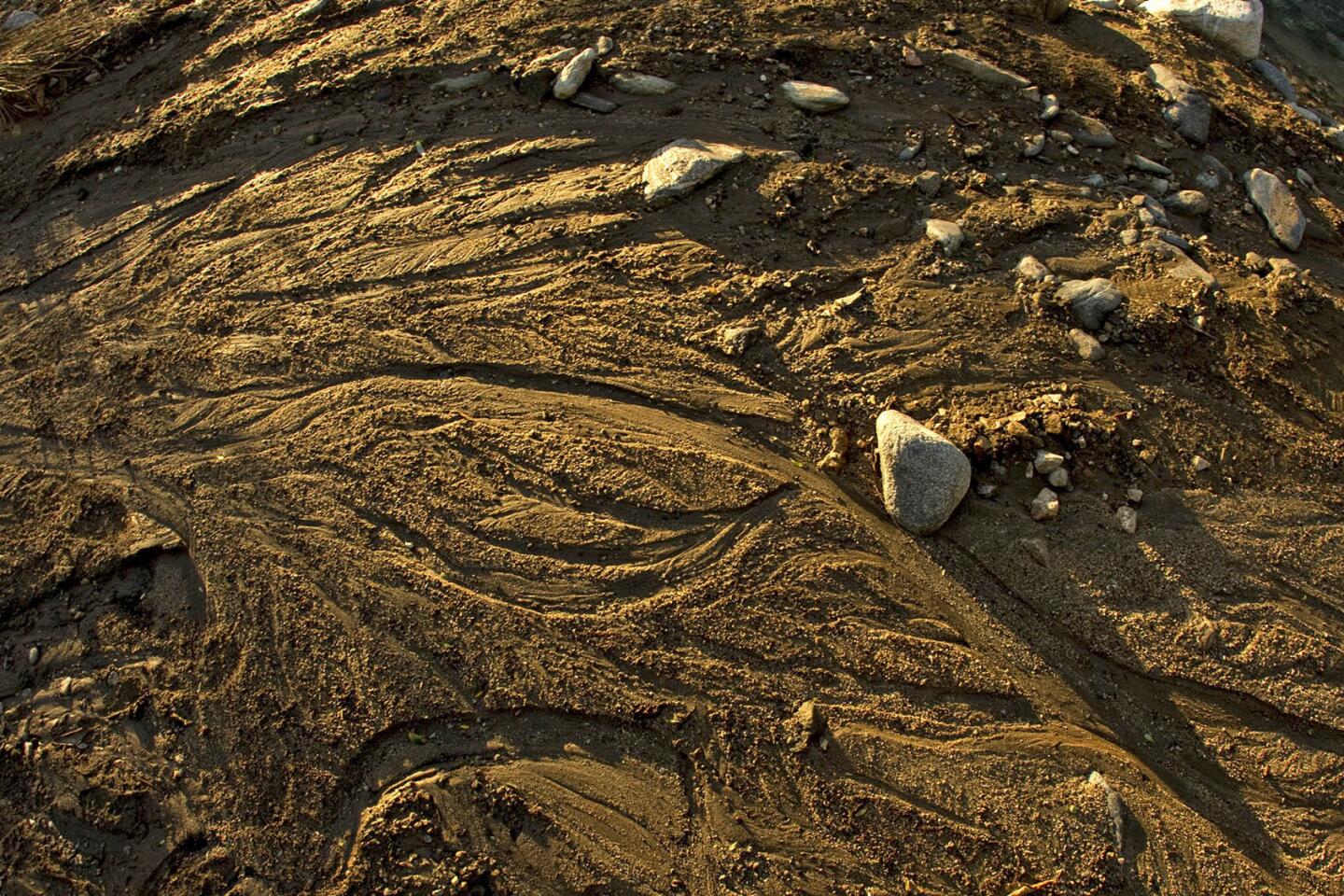
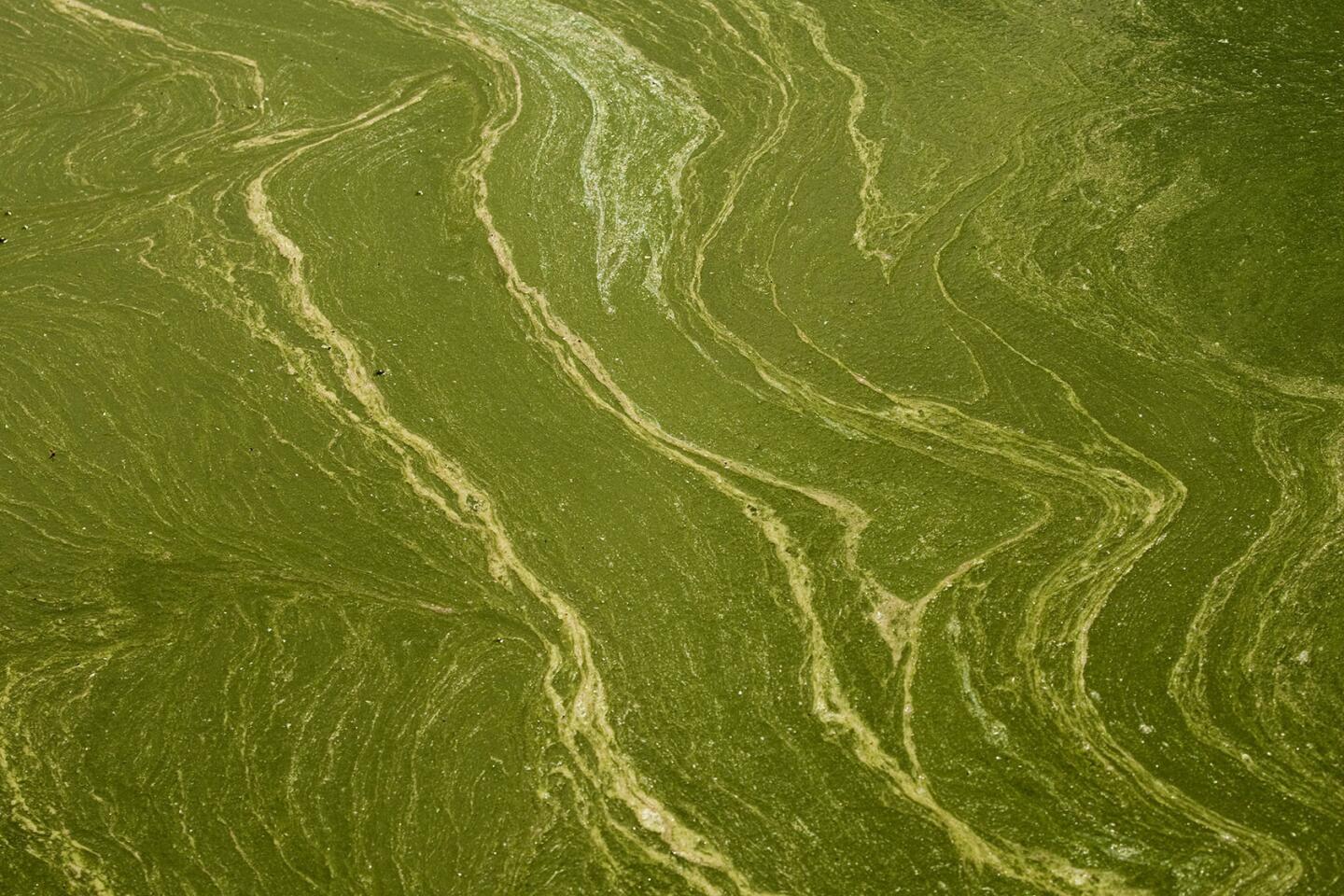
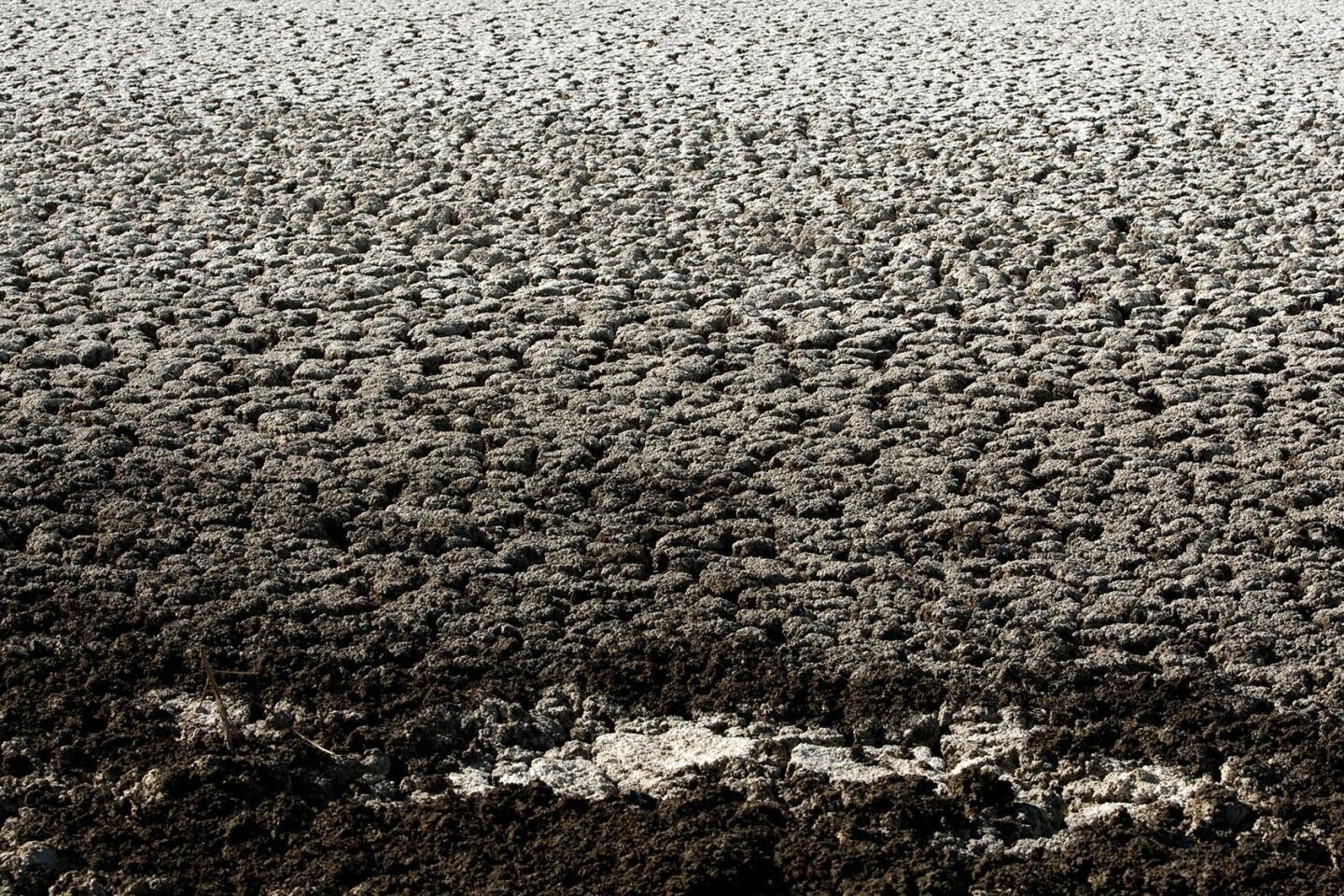
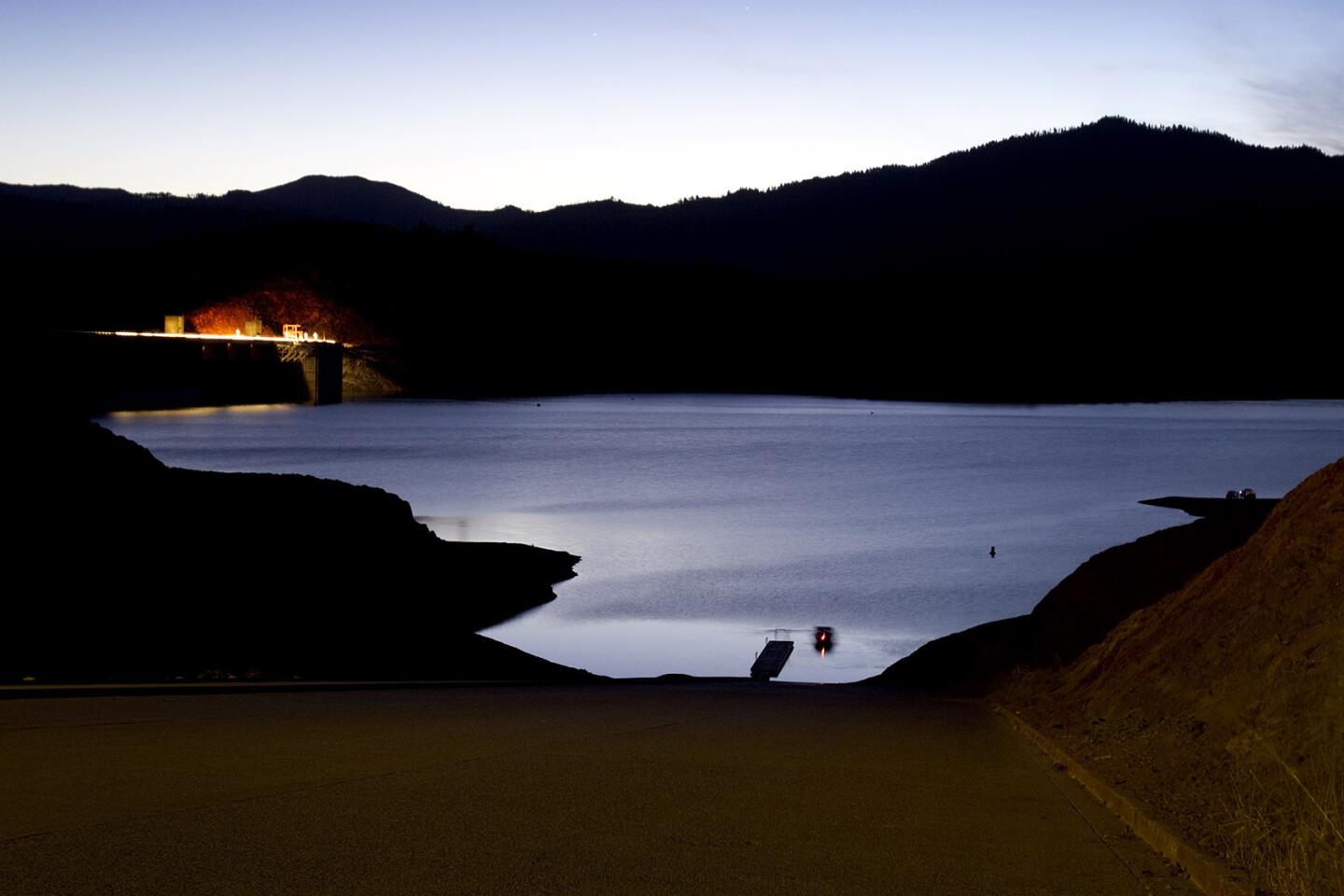

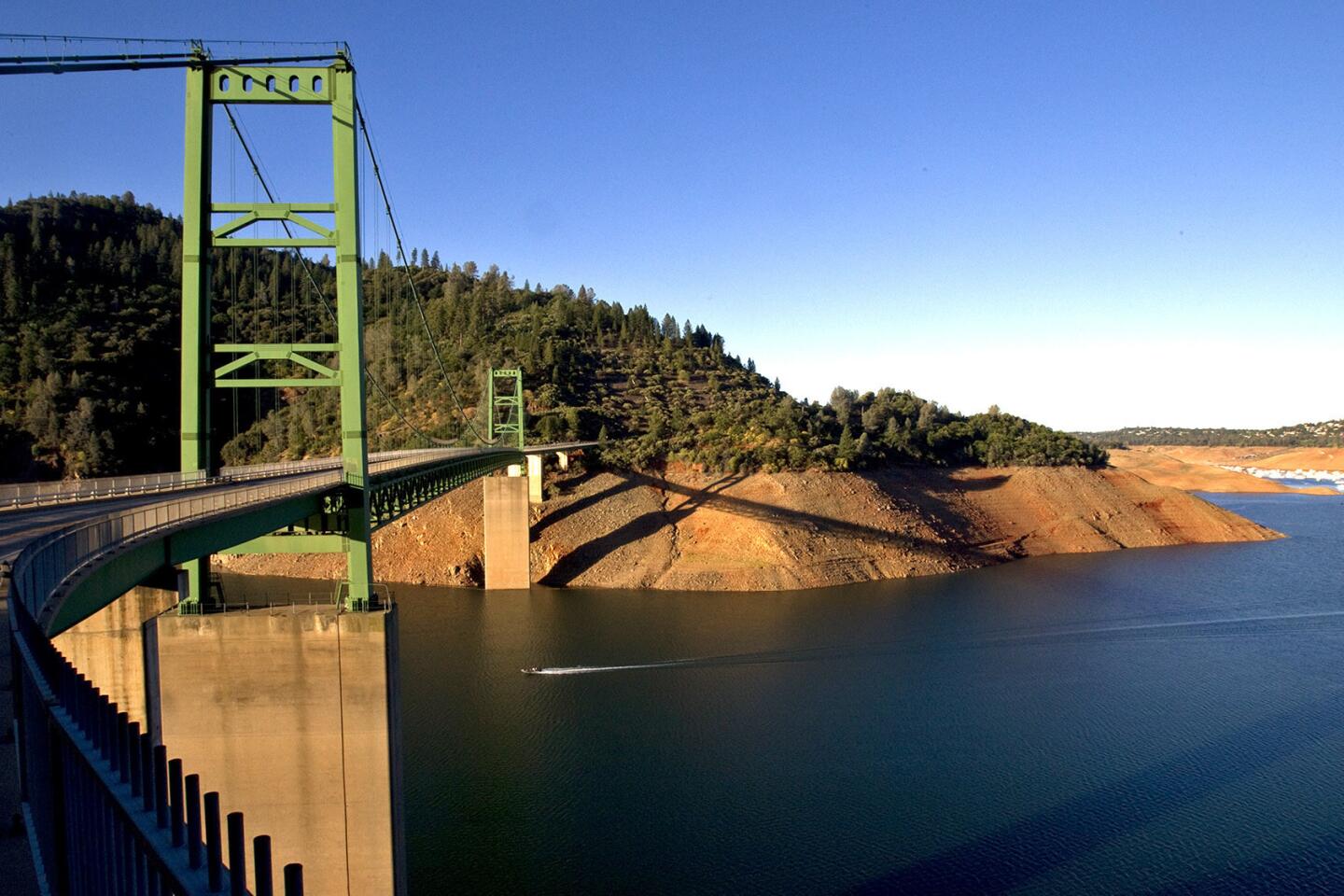
A boater speeds under the New Bidwell Bar Suspension Bridge as severe drought conditions show the water down 160 feet from the high water mark at Lake Oroville on June 21, 2014. Officials say Lake Oroville is at 43% capacity and is likely to get worse, but is not as bad as the drought of 1976-77.
(Allen J. Schaben / Los Angeles Times)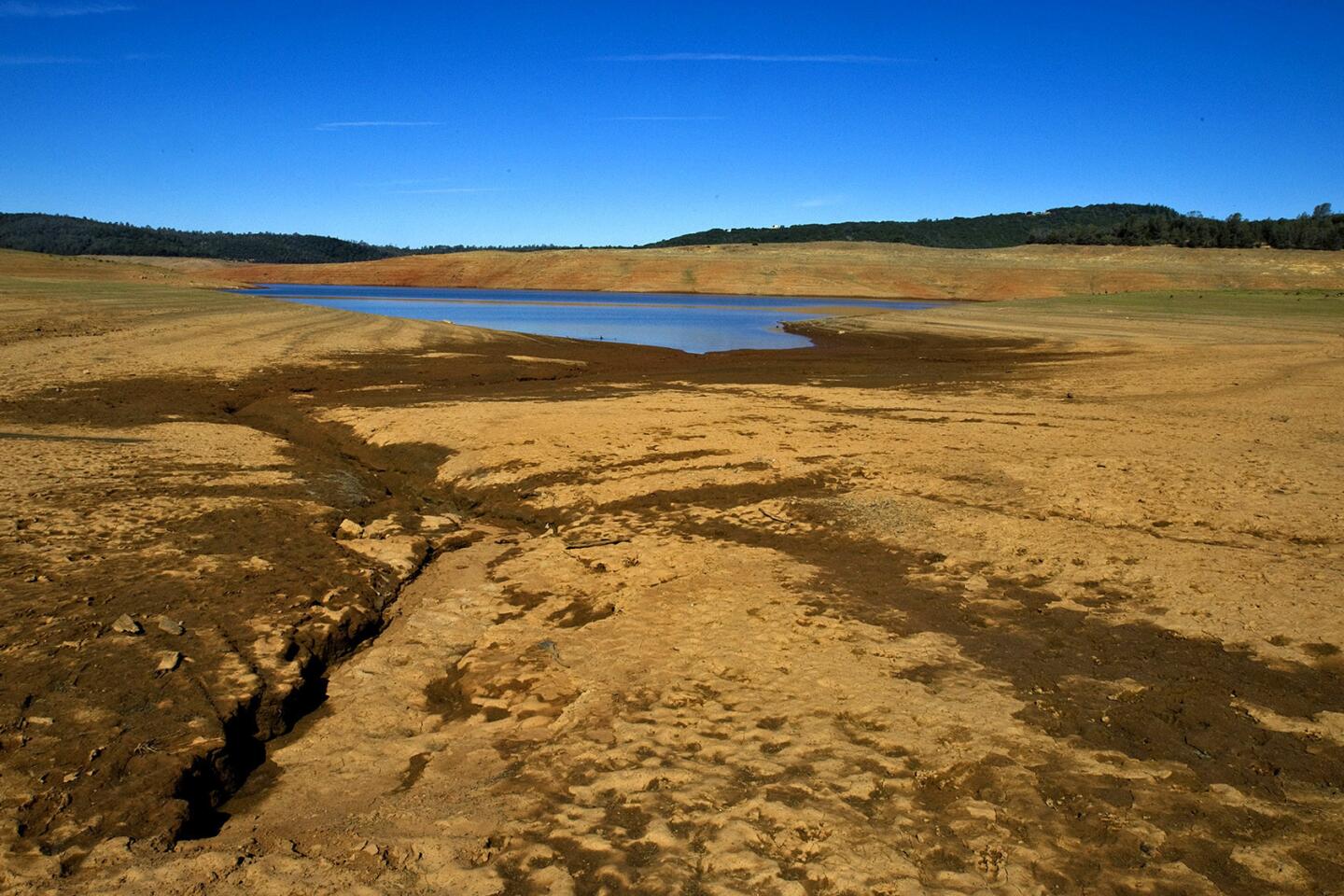
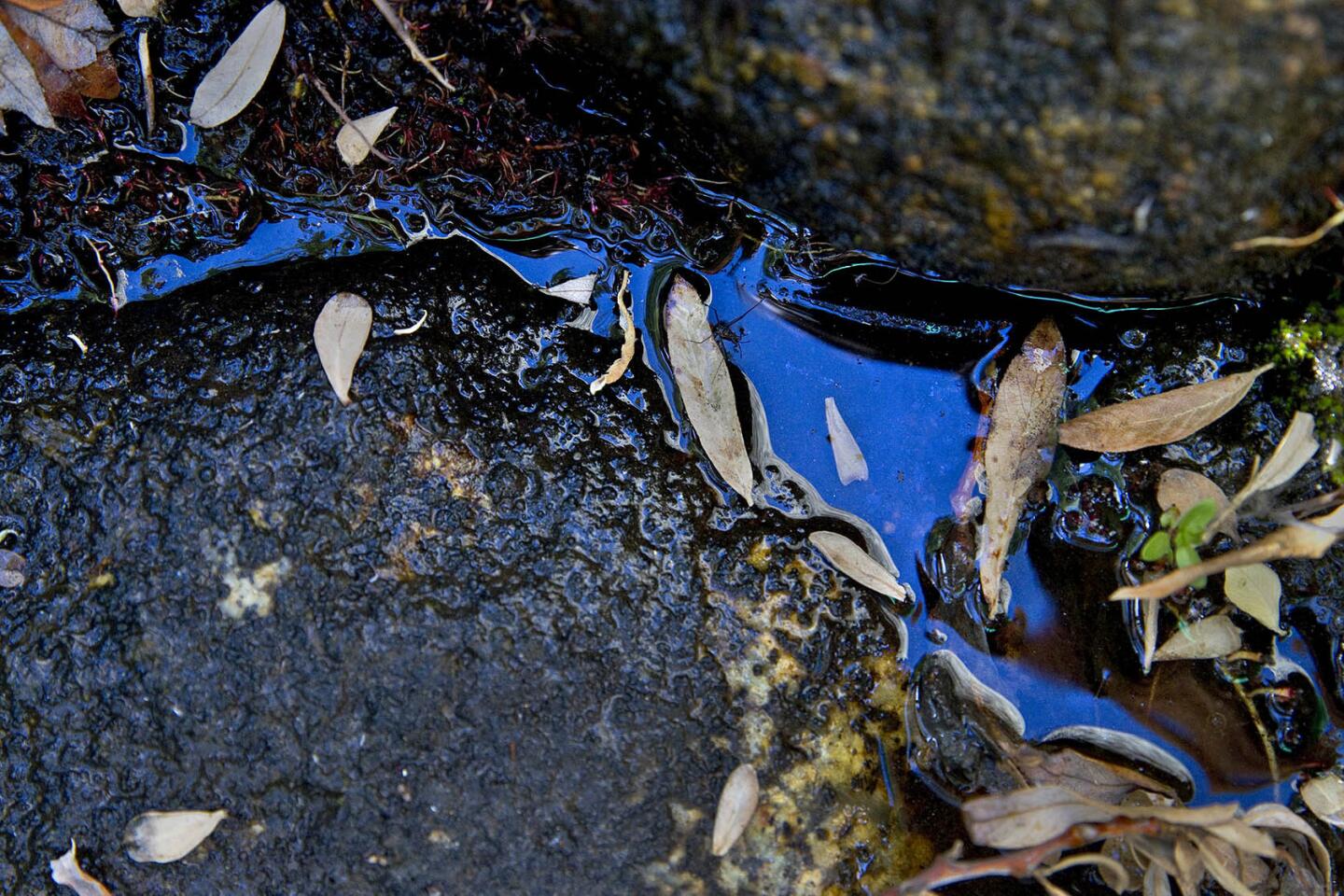
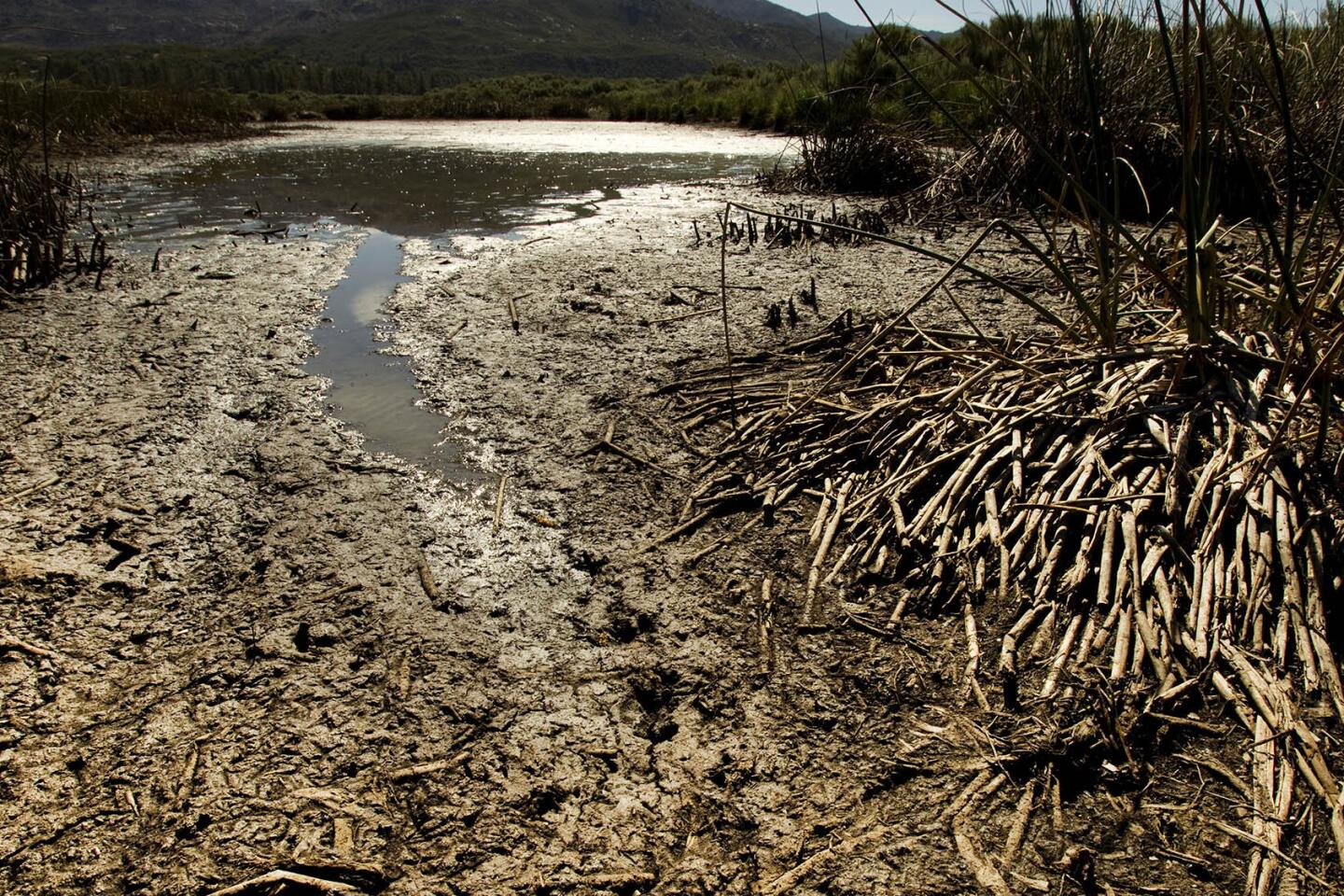
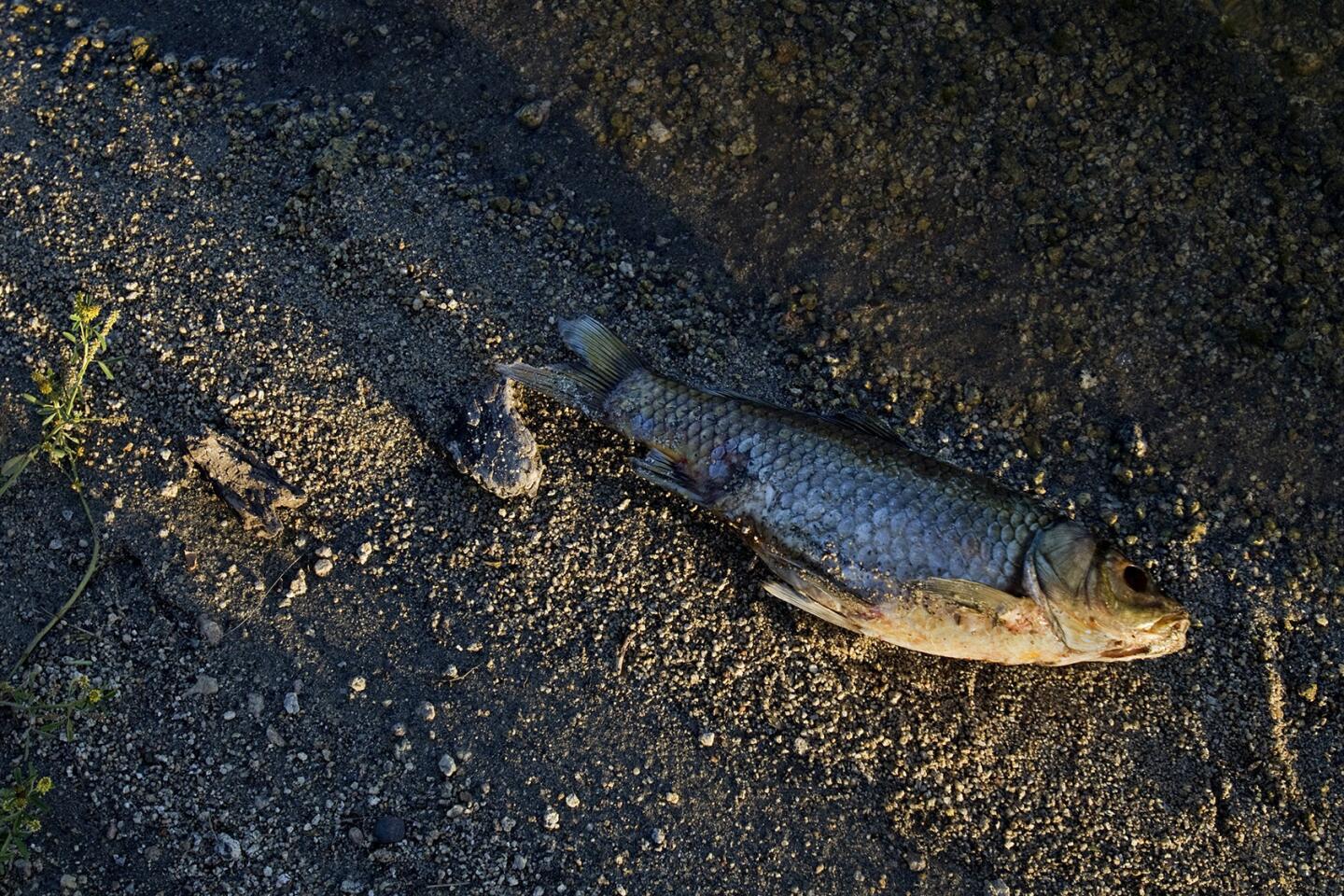
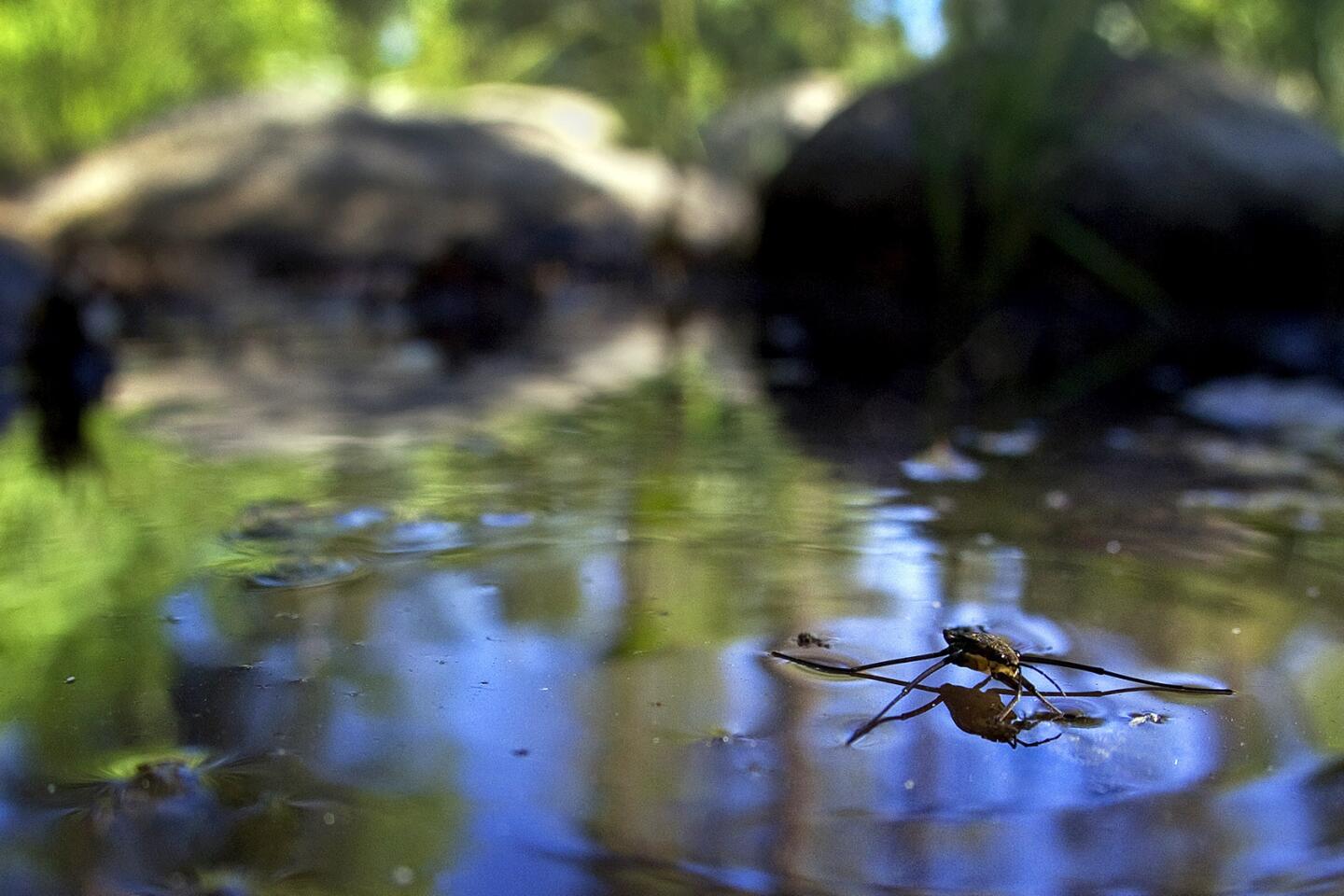
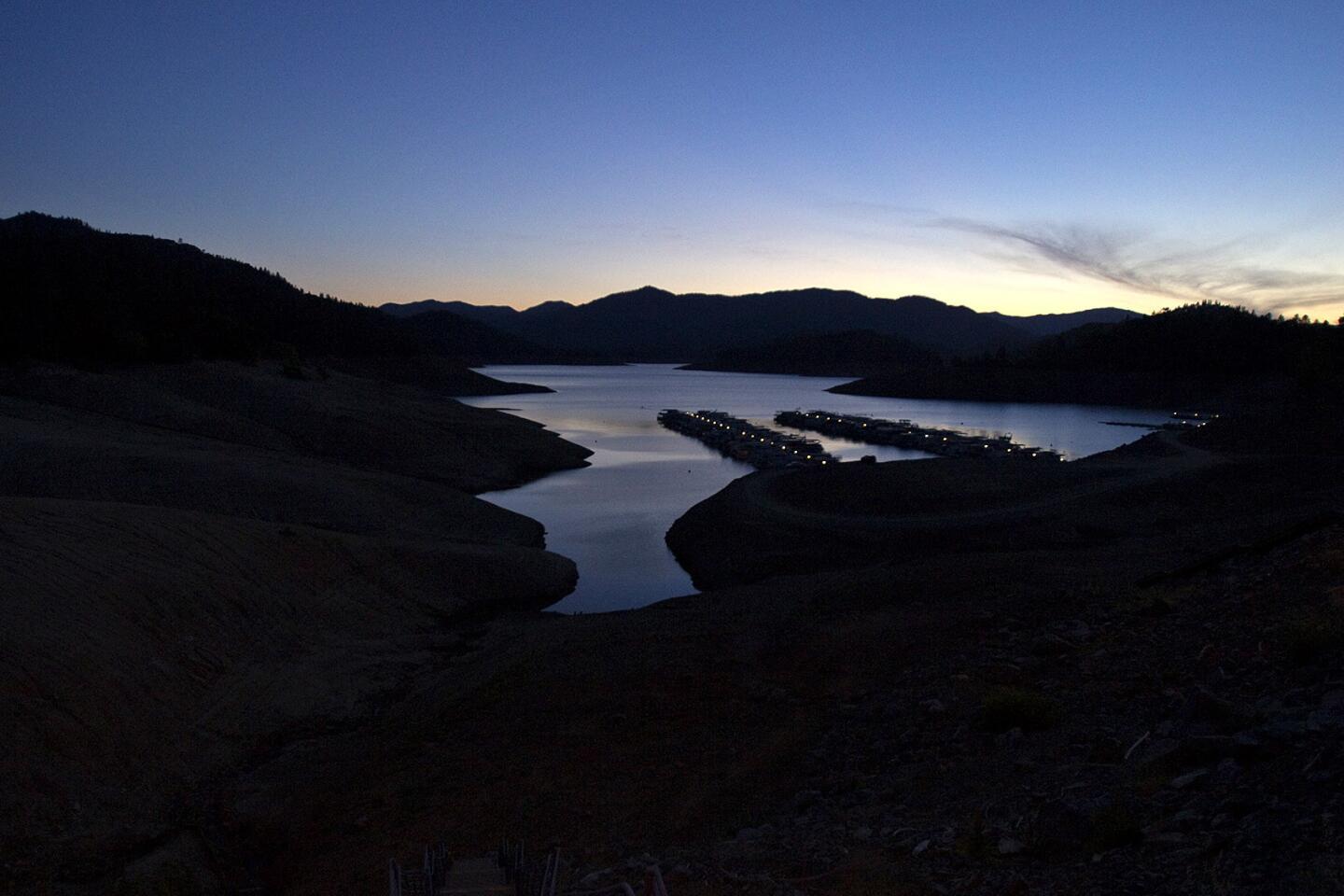
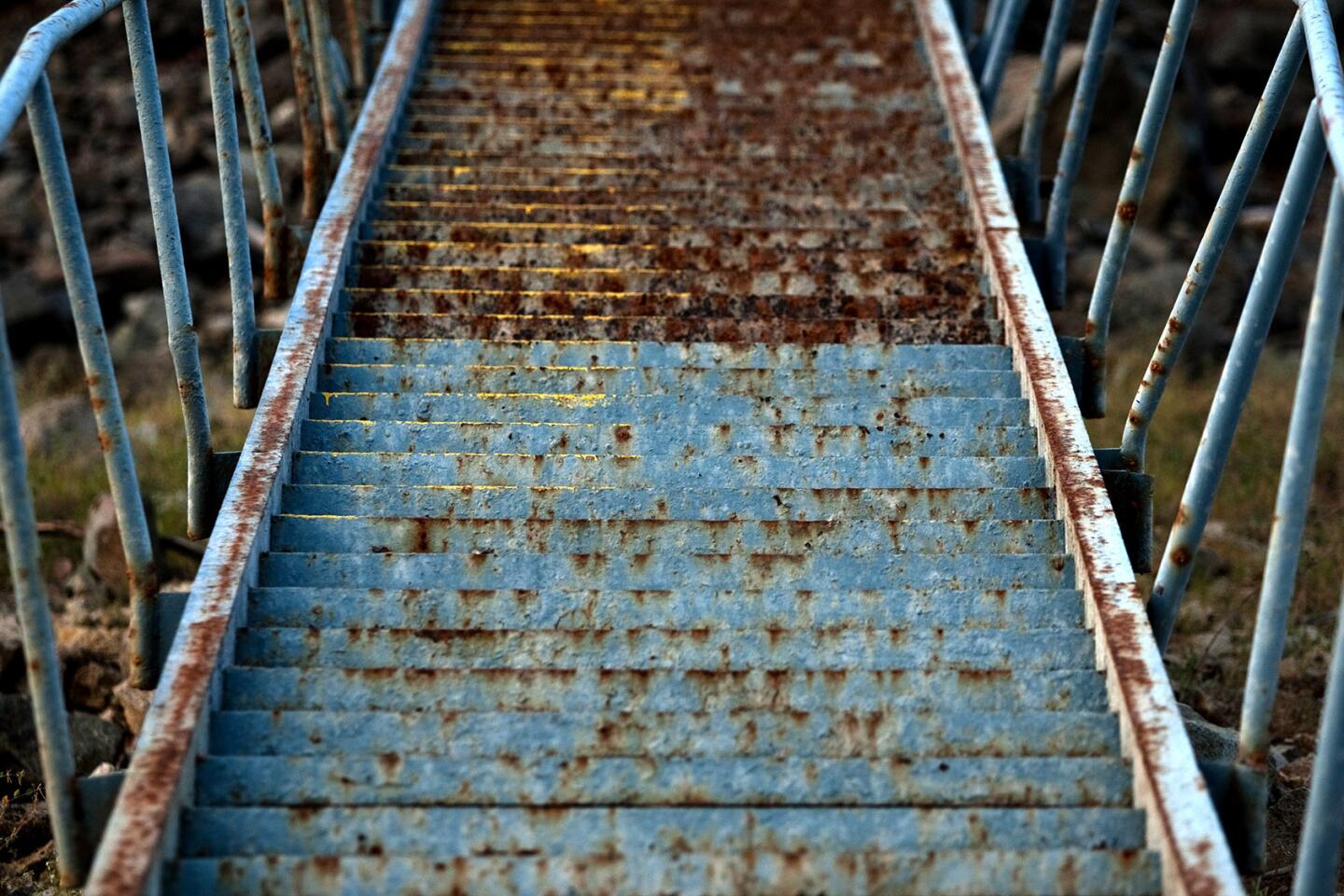
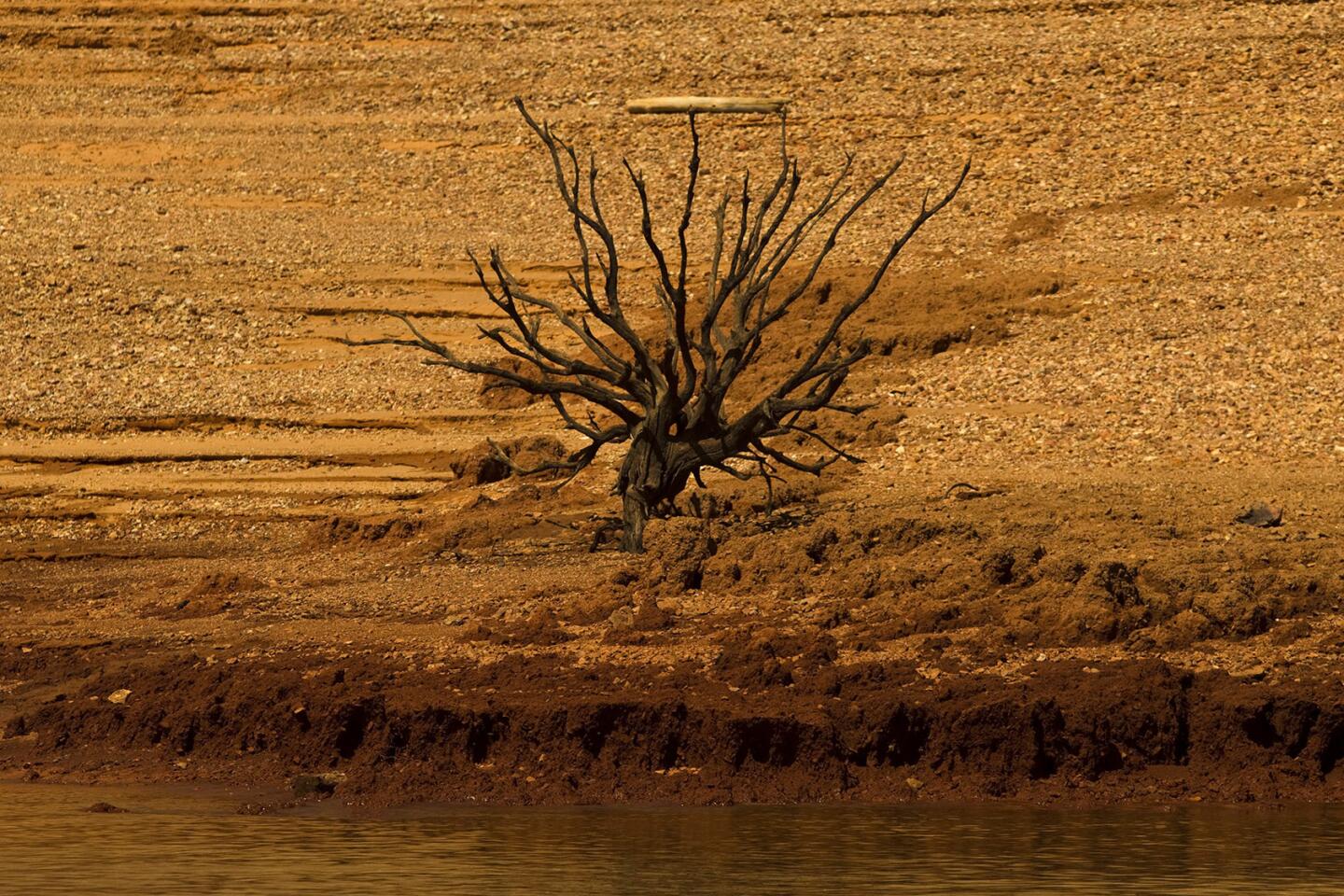
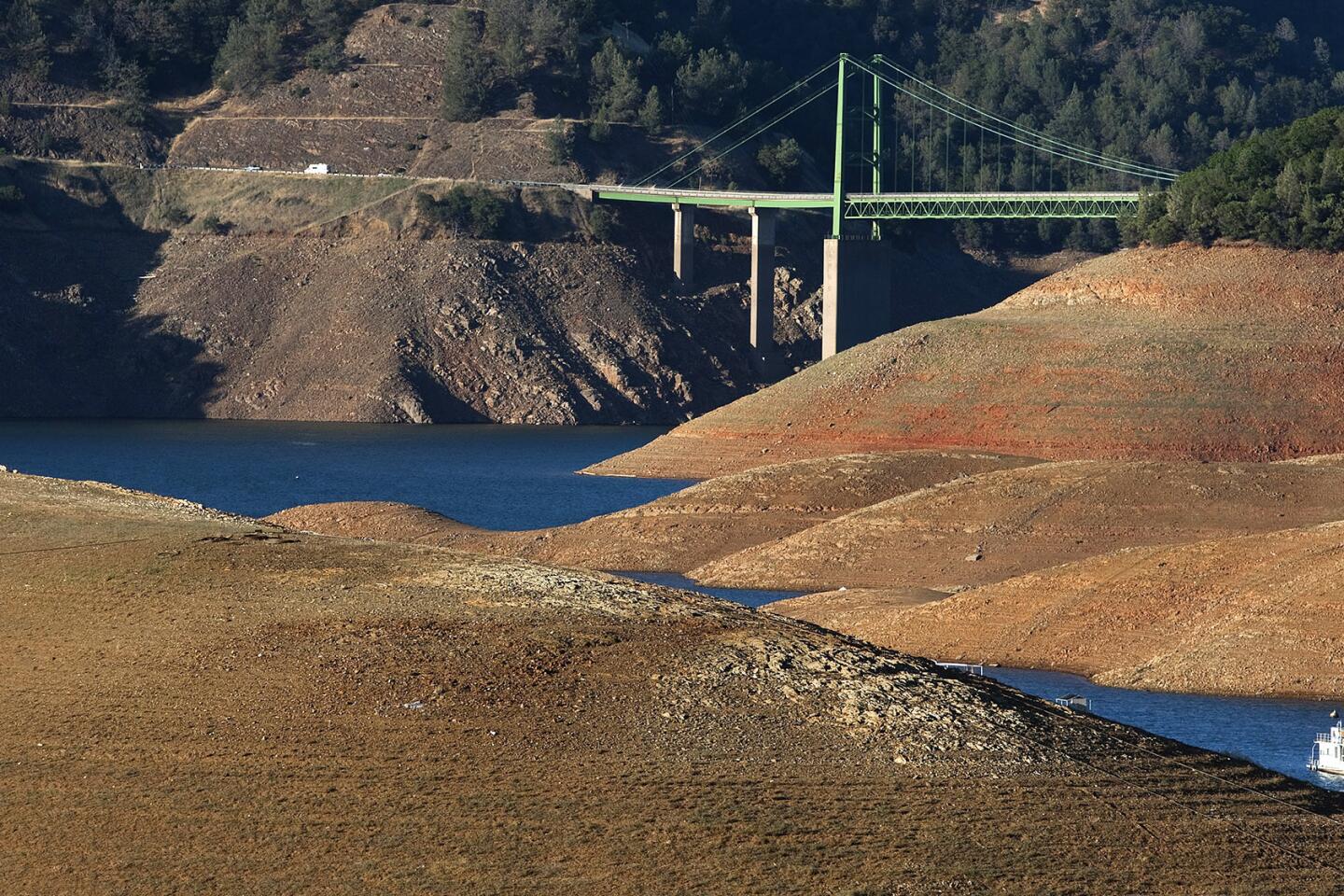
Severe drought conditions are evident as a lone houseboat is dwarfed by steep banks that show the water level down 160 feet from the high water mark at Lake Oroville on June 21, 2014. Receding water levels are revealing prehistoric and historic artifacts such as bedrock mortars and projectile points made by the Maidu people and remnants of placer and dredge mining that thrived here after John Bidwell discovered gold in 1848.
(Allen J. Schaben / Los Angeles Times)The chance of a ‚Äúmegadrought‚ÄĚ gripping the Southwest for more than 30 years has increased to 50%, scientists say, which means bad news for California‚Äôs already parched landscape.
The odds of a 10-year drought afflicting the southwestern U.S. have increased to 80%, according to a new study by Cornell University, the University of Arizona and the U.S. Geological Survey.
Whatever happens, California is likely to see prolonged drought and drier conditions, especially in the southern portion of the state, said Toby Ault, Cornell assistant professor of earth and atmospheric sciences and lead author of the study, which will be published next month in the American Meteorological Society’s Journal of Climate.
The current drought, he said, is a preview of what will ‚Äúhappen in the future in climate change.‚ÄĚ
‚ÄúI am not trying to say this is imminent,‚ÄĚ he said, ‚Äúbut the risk is high.‚ÄĚ
Nearly 82% of California is experiencing ‚Äúextreme‚ÄĚ drought -- the fourth harshest on a five-level scale measured in a weekly U.S. Drought Monitor reports. But roughly 58% of the state of facing worse, ‚Äúexceptional‚ÄĚ drought conditions.
Using climate model projections, researchers determined that prolonged drought would probably hit New Mexico and Arizona as well as California. On the other hand, the chances for the same conditions affecting parts of Idaho, Washington and Montana may actually decrease.
Megadrought conditions may also strike Australia, southern Africa and the Amazon, the researchers said.
The risk for a decadelong drought like the 1930s Dust Bowl is even more alarming because researchers say such events occur ‚Äúon average once or twice per century.‚ÄĚ
According to researchers, the findings are important for governments to consider as they develop strategies for coping with the effects of climate change in densely populated areas where megadroughts ‚ÄĒ ‚Äúworse than anything seen during the last 2,000 years‚ÄĚ ‚ÄĒ would pose ‚Äúunprecedented challenges‚ÄĚ to water resources.
The severity of future droughts discussed in the report could also worsen as temperatures increase, which may be underestimated even with state-of-the-art global climate models, the scientists warned.
For breaking news in Los Angeles and throughout California, follow @VeronicaRochaLA. She can be reached at [email protected].
Sign up for Essential California
The most important California stories and recommendations in your inbox every morning.
You may occasionally receive promotional content from the Los Angeles Times.
Veronica Rocha worked on the Metro desk and at L.A. Now covering breaking news in California. She joined the Los Angeles Times in 2014 and left in 2017.

